Michelle Nelson-Schmidt's Blog, page 43
November 6, 2024
What if Ancient Artifacts Are Actually Monster Technology
What if ancient artifacts are actually monster technology? You might find it intriguing that items like the Baghdad Batteries and Klerksdorp Spheres suggest an advanced knowledge beyond human reach. These artifacts challenge our notion of ancient civilizations, hinting at the possibility of mythical beings creating remarkable inventions. Dendera Relief carvings resemble modern light bulbs, indicating a profound understanding of electricity. As researchers explore these mysteries, you'll discover that ancient narratives may reflect encounters with superior intelligences. The more you explore this concept, the clearer it becomes that our past might hold secrets that fundamentally change what we think we understand about technology.
Key TakeawaysAncient artifacts like the Dendera Relief and Baghdad Batteries suggest advanced technology that may stem from encounters with non-human intelligences.The Klerksdorp Spheres and controversial spark plug indicate potential advanced engineering far beyond known ancient capabilities.Historical texts and legends often reference advanced beings, hinting at a cultural memory of technological knowledge from mythical sources.Innovative research methods could uncover links between ancient technologies and the concept of monster technology, reshaping our understanding of human history.Public fascination with ancient mysteries fuels speculation about lost civilizations and their possible connections to extraordinary beings and technologies.Concept of Monster Technology
The concept of monster technology challenges our conventional views on ancient artifacts by suggesting that what we see as human innovations might actually stem from advanced beings, possibly even mythical creatures.
This theory proposes that many remarkable structures and artifacts from ancient civilizations are remnants of technologies created by these non-human intelligences, signaling a complex history of interaction between humans and mythical beings.
Take the Great Wall of Texas or the Klerksdorp Spheres, for instance; these could be products of advanced technology not of this world.
When you look at artifacts like the Baghdad Batteries and the Dendera Relief, it's hard to ignore the possibility that ancient societies had access to knowledge and tools given by these extraordinary entities.
The idea also extends to ancient texts and legends, suggesting that accounts of monstrous beings may actually reference encounters with advanced technological beings or extraterrestrial visitors.
Advocates for monster technology argue that by re-evaluating these artifacts through this unique lens, you could uncover a paradigm shift in how we perceive the technological capabilities of ancient civilizations and their potential influences.
Artifacts That Defy Explanation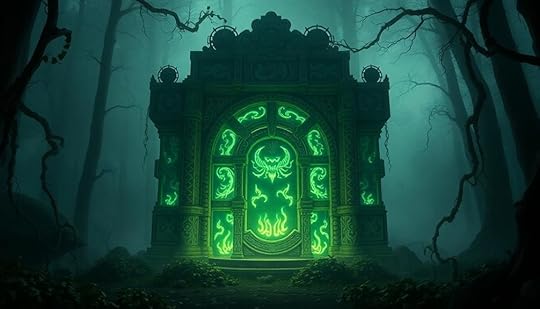
Mystery surrounds a number of ancient artifacts that defy conventional explanations, challenging our understanding of historical technology.
Take the Dendera Relief, for instance, where carvings resemble light bulbs, hinting at an ancient Egyptian grasp of electrical concepts that mainstream scholars deny. Similarly, the Baghdad Batteries, discovered in 1838, contain iron and copper components in clay jars, suggesting that scientists have been able to generate electrical charges thousands of years ago, though their true purpose remains elusive.
The fascinating domain of AI security advancements showcases how technology can evolve dramatically, much like the potential understanding of ancient innovations.
Then there are the Klerksdorp Spheres, estimated to be 2.8 billion years old, which provoke debate over whether they're a natural formation or evidence of advanced ancient technology.
You might also encounter the controversial 500,000-year-old spark plug found in California, hinting at advanced tech in a timeline that seems impossible.
Finally, the Mysterious Screw Artifact, embedded in 300 million-year-old rock in Kaluga, raises questions about its origins—could it be a remnant of an ancient civilization, or merely a fossilized sea creature?
Each of these artifacts invites you to reconsider what you think you know about our past.
Historical Context of Advanced Civilizations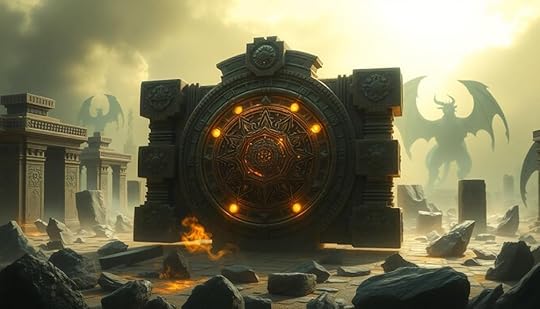
Ancient civilizations often astonish us with their remarkable achievements, suggesting a depth of knowledge and skill that modern society is only beginning to understand. Millions of years ago, these societies displayed advanced technological knowledge that continues to challenge conventional historical narratives.
Take, for instance, the Antikythera Mechanism and the Baghdad Batteries—artifacts that imply a high level of ingenuity in engineering and electricity, which many believe was lost over time.
Furthermore, the Iron Pillar of Delhi, composed of 99.72% pure iron, showcases metallurgical capabilities that were previously thought impossible for ancient foundries. It raises questions about the sophistication that these civilizations possessed.
In Baigong Cave, China, the discovery of 150,000-year-old pipes hints at an ancient civilization with advanced engineering skills that we still struggle to comprehend.
The Piri Reis Map, created in 1513, illustrates the Antarctic coastline without ice, suggesting that ancient civilizations had extensive knowledge of geography and navigation long before modern discoveries.
Even the Viking Sword Ulfberht reveals advanced metallurgy, indicating that highly skilled craftsmanship existed in Europe during the Middle Ages. These artifacts collectively challenge our understanding of history.
Cultural Impact of Ancient Mysteries
Artifacts from long-lost civilizations ignite our imagination, sparking tales of advanced technologies intertwined with mythical creatures or extraterrestrial beings. The allure of ancient mysteries captivates your mind, urging you to explore the narratives that surround these enigmatic artifacts. The possibilities of monster technology and its implications for lost civilizations become fertile ground for conspiracy theories.
Here's a quick overview of how these ancient mysteries impact culture:
Cultural AspectDescriptionMedia RepresentationDocumentaries and novels often depict advanced technologies linked to monsters.Public FascinationStructures like the Konark Sun Temple inspire speculation about superhuman construction capabilities.Conspiracy TheoriesClaims arise that lost civilizations possessed technologies from mythical beings.These themes not only shape our understanding of history but also influence modern storytelling. As you plunge into these theories, you find yourself caught in a web of intrigue, where ancient artifacts become symbols of a forgotten era brimming with advanced technologies and the shadows of monsters lurking just beneath the surface.
Future Research and Discoveries
As researchers explore deeper into the past, the integration of modern technology with archaeological methods holds the promise of revealing secrets long buried beneath the sands of time.
Future research will likely focus on advanced dating techniques and materials analysis to verify the age and origins of unusual artifacts. By reassessing their significance, you may uncover ties to the technological capabilities of ancient civilizations that could challenge conventional narratives.
Investigations into artifacts like the Baghdad Batteries or the Dendera Relief could expose connections to non-human intelligences, suggesting that what we consider "monster" technologies may have influenced human innovation.
Collaborative interdisciplinary studies combining archaeology, engineering, and experimental archaeology will enable you to probe deeper into the purposes behind these ancient objects.
Moreover, the search for anomalous findings, such as the Klerksdorp Spheres and the Great Wall of Texas, could reshape your understanding of humanity's technological evolution.
As you piece together these discoveries, you may find that the narrative of human ingenuity is far more complex than previously thought, revealing a rich tapestry woven with threads of both human hands and extraordinary influences from the past.
ConclusionImagine a world where ancient artifacts are actually remnants of lost monster technology, hiding secrets that could shatter our understanding of history! Every time you gaze upon a mysterious relic, picture the colossal beasts that once roamed the Earth, wielding powers beyond imagination. What if these artifacts hold the key to revealing unimaginable advancements? As researchers explore deeper, the thrill of discovery awaits—who knows what monumental truths lie just beneath the surface, ready to transform our reality forever!
What if the Beast of Bladenboro Has Magical Abilities
If the Beast of Bladenboro has magical abilities, it would add an intriguing layer to its already enthralling legend. Imagine a creature that can move with unnatural speed, effortlessly evading capture by skilled hunters. Its vampiric traits could create an atmosphere of dread, leaving blood-drained animal victims in its wake. You'd also find tales of emotional manipulation and eerie sounds luring unsuspecting prey. Such powers would only deepen its status in local folklore, turning community fear into fascination. There's much more surrounding this enigmatic beast that you might find captivating.
Key TakeawaysThe Beast of Bladenboro's magical speed may enable it to evade hunters and remain elusive, enhancing its legend.Its vampiric nature suggests the creature could drain blood without leaving traces, deepening the mystery surrounding it.The ability of magical mimicry might allow the beast to use sounds, such as baby cries, to lure prey effectively.Emotional manipulation could instill fear and hysteria in the community, contributing to the beast's powerful presence in local folklore.These speculated magical abilities enrich the narrative, creating a captivating and enduring mythos around the Beast of Bladenboro.Historical Background of the Beast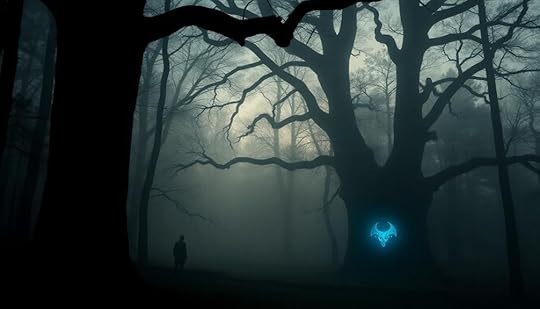
The legend of the Beast of Bladenboro began in late December 1953, when reports of mysterious animal deaths caught the attention of locals and the media. In this small North Carolina town, dogs started disappearing, and soon, gruesome discoveries followed. Victims were found blood-drained and dismembered, sparking fear and fascination among residents.
As the news spread, the Beast of Bladenboro transformed from a local curiosity into a sensational story that attracted nationwide attention. Hunters and thrill-seekers flocked to the town, keen to catch a glimpse of this elusive creature.
Mayor Woodrow Bob Fussell recognized the potential for publicity and economic gain. He capitalized on the beast's legend, promoting events like movie screenings that drew crowds and boosted local business.
Despite numerous sightings and various theories about the creature's identity—ranging from a large black panther to a wild dog—the true nature of the beast remains a mystery.
This enigmatic figure has woven itself into the fabric of Bladenboro's history, leaving behind a legacy that continues to intrigue both locals and visitors alike.
Magical Abilities Speculated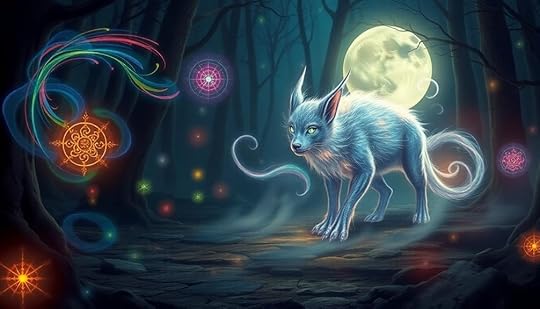
Speculations about the Beast of Bladenboro often highlight its rumored magical abilities, enchanting the imaginations of those who hear its tale. Many believe the creature possesses magical speed, allowing it to evade capture effortlessly and outmaneuver hunters. This agility contributes to its elusive reputation, making it a challenge for anyone brave enough to pursue it.
Additionally, the beast's ability to drain blood from its victims without leaving traces hints at a vampiric nature, echoing tales of folklore monsters. Witness accounts describe eerie sounds resembling a baby crying, suggesting a form of magical mimicry used to lure unsuspecting prey.
Moreover, the creature seems to exert a strange influence over the local populace, instilling fear and hysteria that some interpret as emotional manipulation. This ability to affect human emotions adds to the mystique surrounding the beast, leading many to believe it possesses powers beyond the natural world.
AbilityDescriptionImplicationsMagical SpeedEvades capture and outmaneuvers huntersEnhances its reputation as elusiveVampiric NatureDrains blood without tracesLinks to folklore creaturesMagical MimicryMakes eerie sounds to lure preyCan manipulate perceptions of dangerEmotional ManipulationInstills fear and hysteria in localsCreates a mystique around the creatureImpact on Local Folklore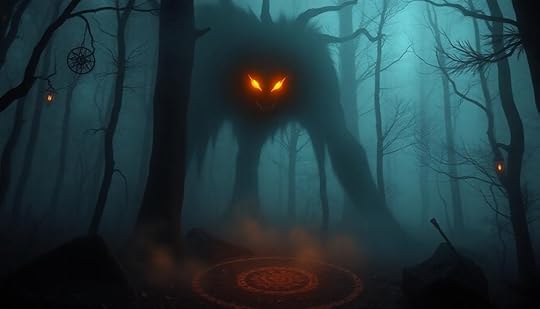
With magical abilities woven into the narrative, the Beast of Bladenboro transforms into a pivotal figure in local folklore, enchanting the community's imagination. You can see how these magical powers might deepen the mystery surrounding the creature, capturing the curiosity of locals and tourists alike.
The legends surrounding the beast could evolve, leading to more vibrant storytelling traditions that unite the community.
Consider these exciting possibilities:
Shapeshifting tales that connect the beast to other legendary creatures.Invisibility stories that spark intrigue at local gatherings.Elaborate storytelling events during community gatherings, fostering connections among residents.Mythical themes showcased at festivals like Beast Fest, drawing larger crowds.New interpretations of existing legends, enriching Bladenboro's cultural tapestry.These elements could transform how the community celebrates its folklore. By incorporating magical themes, festivals wouldn't only reinforce the beast's legendary status but also promote a unique regional identity.
As you engage with these stories, you become part of a living tradition, where imagination and community spirit thrive together.
Community Reactions and Fear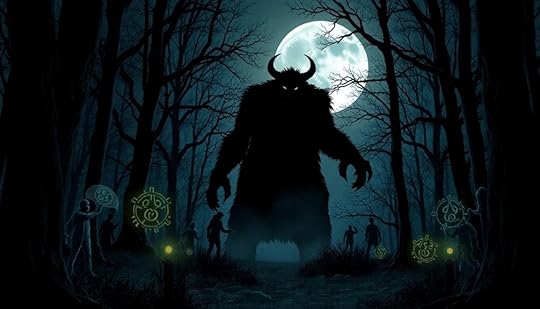
As rumors spread about the Beast of Bladenboro, fear gripped the community, igniting a wave of speculation regarding its supernatural abilities. Local residents gathered in community meetings, discussing the creature's elusive nature and the lethal attacks attributed to it. Some believed these incidents weren't mere animal behavior but rather the result of mystical forces at play.
This heightened fear drew an influx of hunters and curious onlookers, creating a charged atmosphere of both excitement and dread. You could feel the tension in the air as people sought to confront or understand the enigmatic creature. Local media sensationalized the beast's actions, further embedding notions of magical abilities into public consciousness and intensifying the myth surrounding it.
As the fascination with the beast's possible magical traits grew, it became a staple of local folklore, influencing the town's identity. Events like the annual Beast Fest emerged, attracting tourism and showcasing how fear can morph into community spirit.
In Bladenboro, the line between reality and myth blurred, leaving you wondering just how much truth lies within the tales of the beast and its supposed powers.
Encounters and Eyewitness Accounts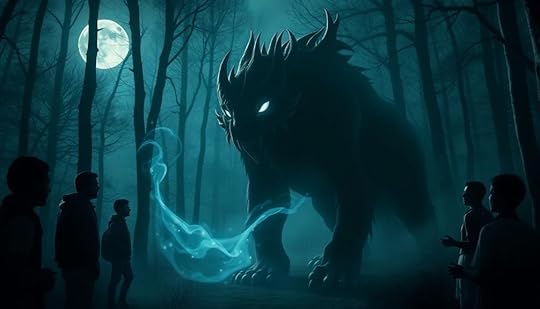
Drawing from numerous eyewitness accounts, the Beast of Bladenboro has become a figure of fascination and fear. You'll find it hard to ignore the striking descriptions of this large, cat-like creature, with one local estimating its length at about 4.5 feet. It's been compared to both a bear and a panther, showcasing an impressive physical presence.
Here are some notable encounters and observations:
Mrs. C.E. Kinlaw saw the beast on her porch, highlighting its unnerving proximity to human homes.Witnesses noted the creature's stealth, indicating it might possess supernatural agility.Local dogs refused to approach, hinting at a mysterious aura or magical presence.Hunters tracked it for miles, discovering unusually large claw prints that suggested enhanced abilities.The fear it instilled extended beyond humans, as pets seemed to sense its magical qualities.Each encounter adds to the legend, making you wonder whether the beast has magical abilities that allow it to evade capture and instill fear.
The combination of these eyewitness accounts paints an intriguing, if unsettling, portrait of the elusive Beast of Bladenboro.
Media Coverage and Hysteria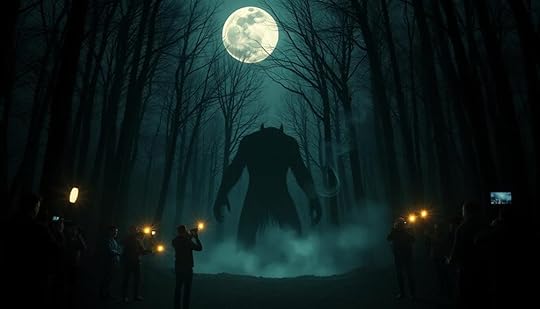
You can see how sensationalist headlines like "Vampire Beast" whipped up fear and curiosity in the community.
As local and national newspapers spread the story, public interest surged, leading to a rush of hunters and spectators.
This frenzy not only sparked community gatherings but also revealed a mixed reaction from locals, some skeptical yet intrigued by the ongoing saga.
Sensationalist Headlines ImpactThe sensationalist headlines of the time, such as "Vampire Beast" and "Mystery Beast Still At Large," fueled a frenzy in Bladenboro, turning the small town into a hotspot of fear and fascination.
The media coverage didn't just report on the strange occurrences; it amplified them, drawing in hunters and curious tourists keen to catch a glimpse of the legendary creature.
Gruesome animal deaths reported heightened public anxiety.Over 500 people joined local hunts on January 5, 1954.Participation escalated to 800 the following day.Local authorities implemented safety measures due to armed hunters.Mayor Woodrow Fussell seized the moment for publicity, booking a film titled "The Big Cat."As these stories circulated, they created a sense of urgency and excitement, making Bladenboro a focal point for adventure seekers.
This intense media scrutiny not only altered the town's atmosphere but also paved the way for increased tourism.
The combination of sensationalism and public interest led to a unique chapter in Bladenboro's history, where the 'vampire beast' transformed into a local legend, leaving an indelible mark on its community.
Public Reaction DynamicsAs sensational headlines proclaimed the existence of a "Vampire Beast," public fear and fascination surged, drawing both locals and outsiders into a whirlwind of excitement.
In this small town, the mysterious creature's attacks on dogs intensified anxiety and intrigue. Mayor Woodrow Bob Fussell cleverly seized this moment of hysteria, using it as a publicity stunt to attract visitors and hunters to Bladenboro.
The media's relentless coverage fanned the flames of curiosity, turning the town into a magnet for thrill-seekers. Community gatherings erupted, with over 800 enthusiastic participants joining organized hunts on January 6, 1954.
This surge of involvement fostered a sense of urgency and unity among residents as they sought to confront the rumored beast.
However, the influx of armed hunters raised safety concerns, leading local authorities to step in. The chief of police had to call off the hunts to prevent potential harm.
Despite the excitement, the frenzy resulted in ongoing discussions and a folklore phenomenon that intertwined with the town's identity. The Beast of Bladenboro became more than just a story; it transformed into a cultural legend, forever etched in the history of this small town.
Comparison With Other Cryptids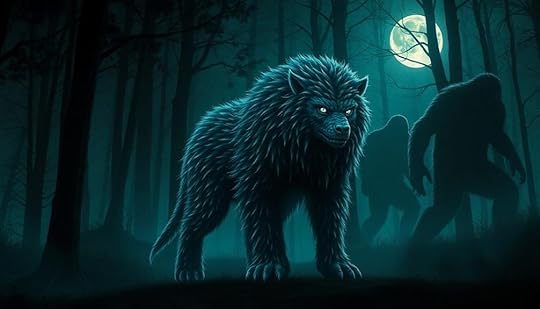
When you compare the Beast of Bladenboro to other cryptids, intriguing parallels emerge.
Like the Dogman, it shares themes of supernatural abilities, while its mystical traits echo the lore of the Chupacabra.
These connections highlight how folklore shapes our understanding of these enigmatic creatures.
Similarities With Dogman LoreMany cryptids, like the Beast of Bladenboro and Dogman, share intriguing similarities that captivate the imagination. Both creatures evoke a sense of fear and wonder in local communities, often described as large, elusive beings with a mix of canine and feline traits.
Here's what makes them similar:
Stealth and agility allow both to evade hunters and witnesses.Numerous folklore tales highlight their supernatural or magical abilities.Reports of blood drained from victims link the Beast to Dogman's predatory nature.Both cryptids are notorious for violent attacks on livestock.They inspire significant media attention and community discussions about their existence.The connections between the Beast of Bladenboro and Dogman lore enhance the mystique surrounding these creatures. Sightings of the Beast echo Dogman encounters, creating a tapestry of folklore that fascinates enthusiasts.
The notion of magical abilities adds an extra layer of intrigue, making you wonder what these mysterious beings might be capable of. Whether it's the fear of being stalked or the thrill of the unknown, the similarities between these two cryptids keep you on the edge of your seat, pondering their true nature.
Mystical Traits of ChupacabraThe Chupacabra stands out in the domain of cryptids with its distinct mystical traits that set it apart from others like the Beast of Bladenboro. Unlike the Beast, which resembles a large cat or wolf, the Chupacabra has a more alien-like appearance, characterized by glowing red eyes and reptilian features. This creature is often described as having spikes or quills along its back, enhancing its otherworldly presence.
Aromatherapy techniques can create a calming environment, which may be beneficial for those feeling anxious about such eerie creatures, as aromatherapy promotes relaxation.
Both cryptids share the eerie trait of draining the blood from livestock, but the Chupacabra's supernatural abilities elevate its legend. It's said to possess powers like invisibility and the ability to mesmerize its prey, traits that contrast sharply with the physical prowess of the Beast of Bladenboro.
While the latter is linked to local folklore in the Southern U.S., the Chupacabra's origins trace back to Puerto Rican tales, adding a layer of cultural mystique.
Reports of Chupacabra sightings often coincide with mysterious animal deaths, similar to the livestock losses attributed to the Beast of Bladenboro. As you explore these creatures, you'll find that the Chupacabra's magical abilities create a unique fascination in the world of cryptids.
Folklore Legends and CryptidsExploring the world of cryptids reveals a rich tapestry of folklore legends that connect various cultures through shared themes and terrifying tales. The Beast of Bladenboro stands out among these creatures, intertwined with stories of the supernatural. It shares fascinating similarities with other cryptids, each adding layers to the narrative.
The Wampus cat, a hybrid of woman and large cat, embodies evil and supernatural powers.The Glawackus, known for its animal attacks, shares the Beast's elusive nature, igniting fear in local lore.The Beast of Gévaudan, infamous for its brutal livestock attacks, parallels the gruesome deaths attributed to the Beast of Bladenboro.The Dogman, often described as a large, dog-like creature, exhibits similar stealth and aggression traits.Each of these legends reflects a blend of myth and reality, contributing to the rich folklore surrounding these cryptids.
The stories of the Beast of Bladenboro not only evoke intrigue but also highlight the universal themes of fear and fascination that cryptids inspire in communities. By examining these legends, you gain insight into the human psyche and our ongoing battle with the unknown.
Legacy of the Beast's Mythos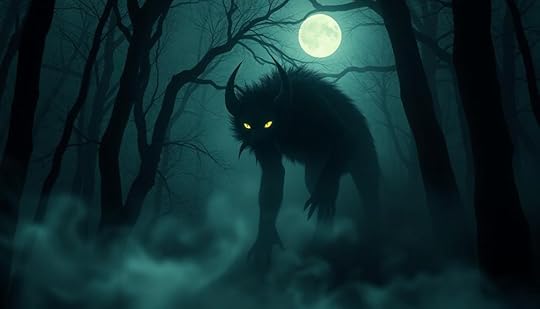
Mystique surrounds the legacy of the Beast of Bladenboro, transforming it into a source of pride for the town. This creature, rooted in local folklore, has become synonymous with the community's identity.
The incident in 1954, which first captured attention, sparked a cultural phenomenon that continues to thrive. You'll notice how the annual Beast Fest celebrates this historical significance, drawing tourists enthusiastic to experience the magic of Bladenboro's stories.
Figures like Mayor Woodrow Fussell played pivotal roles in promoting the beast, blending myth with civic pride. Sensational media coverage during those early days amplified public interest, fueling a narrative that resonates in regional storytelling and folklore studies.
As you explore descriptions of the beast—its reported size and physical attributes—you can't help but draw comparisons to other legendary creatures like the Wampus cat and the Beast of Gévaudan.
Ongoing discussions about the creature's identity reflect the community's engagement with its lore. This dance between skepticism and belief enriches the cultural narrative, ensuring that the Beast of Bladenboro remains an enchanting symbol of both mystery and pride.
ConclusionSo, envision this: a furry, mythical creature prancing through Bladenboro, twirling its magical tail like a glittery wand, casting spells of fear and wonder. You've got townsfolk clutching their garlic and salt shakers, convinced they'll need more than a flashlight to ward off this furry wizard. Meanwhile, the beast's legacy grows—who wouldn't want a pet that could potentially turn their porch into a mystical portal? It's a wild world, and the beast sure knows how to keep things interesting!
What if the Shunka Warakin Is Actually a Prehistoric Creature
If the Shunka Warakin is indeed a prehistoric creature, it could reshape your understanding of local folklore. This legendary beast ties back to the Chasmaporthetes, an ancient carnivorous mammal that once thrived in North America. Accounts from the 19th century describe it as a wolf-hyena hybrid, and modern sightings echo these traits. Its role in ecosystems might reflect a balance as a top predator, influencing herbivore populations. The mysteries surrounding it highlight a potential connection between the past and present. Curious about what this means for ecology and culture? There's much more to uncover about the Shunka Warakin's intriguing story.
Key TakeawaysShunka Warakin may represent a surviving lineage of Chasmaporthetes, an ancient carnivorous mammal known from the Miocene to Pleistocene epochs.Historical accounts describe Shunka Warakin's features aligning with traits of prehistoric predators, suggesting a potential link to ancient species.Livestock attacks and sightings in modern times mirror behaviors attributed to prehistoric carnivores, indicating a continuity of predatory instincts.Genetic studies reveal unique alleles in canids, suggesting possible hybridization that could yield characteristics reminiscent of prehistoric creatures.The ecological role of Shunka Warakin as a top predator could influence modern ecosystems, similar to the impact of its ancient counterparts.Origins and Cultural Significance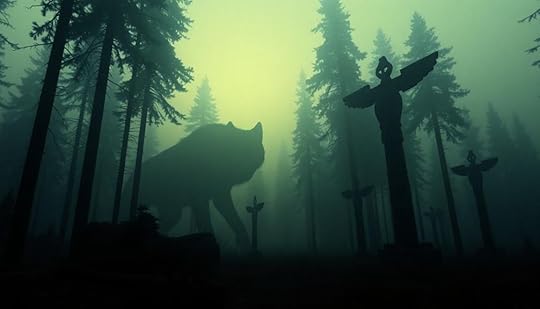
The Shunka Warakin legend, an enthralling blend of myth and nature, has deep roots in Native American folklore. Among tribes like the Ioway, Crow, and Blackfeet, this creature embodies the untamed wilderness and the need to respect nature's balance.
You'll find that the Shunka Warakin symbolizes more than just fear; it serves as a guardian of the wild, warning against greed and disrespect towards the natural world.
With its name meaning "carries off dogs," the Shunka Warakin has historically preyed on livestock, which has only added to its fearsome reputation. This creature is often linked to prehistoric creatures like Chasmaporthetes, hinting at a possible lineage from ancient carnivorous mammals.
As you explore the legend, you'll see the cultural significance of the Shunka Warakin unfolds, emphasizing the interconnectedness of all living things. It reminds you to respect nature and understand humanity's place within it.
In many ways, the Shunka Warakin serves as a bridge between ancient beliefs and modern ecological awareness, urging you to honor the delicate balance of nature that sustains us all.
Historical Accounts and Encounters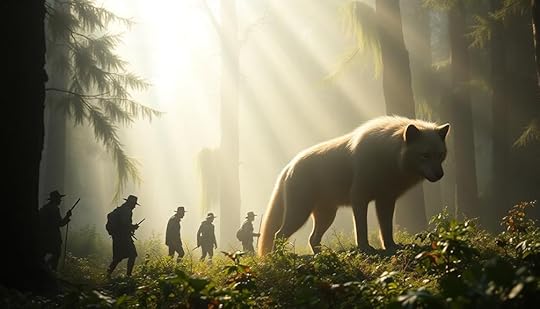
Throughout history, encounters with the Shunka Warakin have captivated those living in its rumored territory. Historical accounts from Native American tribes describe the creature as a large, dog-like predator, lurking in the shadows of the Rocky Mountains. Its elusive nature has fueled tales of its fierce predatory behavior, leading to vivid imagery that you can almost feel:
A sloped back gliding silently through the underbrush.Elongated limbs sprinting after unsuspecting livestock.Distinctive coloration blending into the wilderness.These descriptions echo throughout Native American folklore, suggesting that the Shunka Warakin may not just be a myth.
The first well-documented encounter occurred in 1886, when rancher Israel Ammon Hutchins shot a creature resembling a wolf-hyena hybrid, sparking curiosity about its connection to prehistoric species. Speculation abounds that this creature could be a surviving population of ancient carnivorous mammals, like Chasmaporthetes or maybe even a descendant of the dire wolf.
The Shunka Warakin's reputation as a guardian of the untamed wilderness resonates deeply, reminding us of early settlers' fears of the predatory animals that roamed the land.
The Hutchins Incident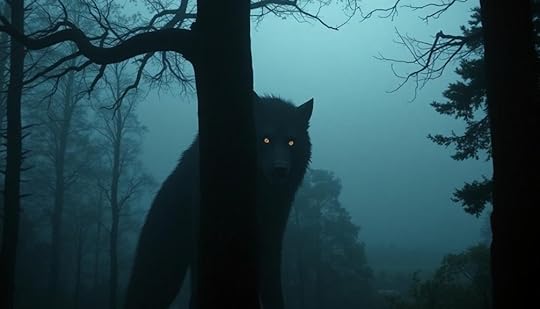
In 1886, you might find it hard to believe the tale of Israel Ammon Hutchins, who claimed to have seen a creature attacking his livestock.
His vivid descriptions of the Ringdocus, a strange hybrid between a wolf and a hyena, sparked curiosity and debate about its true nature.
The taxidermy work that preserved this creature only fueled ongoing discussions about its significance in the context of prehistoric life.
Eyewitness Accounts and DescriptionsWitnessing an extraordinary event can leave a lasting impression, and that's exactly what Israel Ammon Hutchins experienced in 1886. In the Madison River Valley of Montana, Hutchins encountered a large, wolf-like creature that sparked intense curiosity and fear among locals.
Eyewitness accounts from him and others described this mysterious beast with striking characteristics:
Elongated limbs that gave it an unusual gait.Sloped back reminiscent of a hyena, enhancing its predatory look.Unusual coloration, setting it apart from familiar wildlife.This creature wasn't only a fearsome predator, linked to the mysterious disappearances of dogs and livestock, but it also became a subject of fascination.
After Hutchins shot the beast, physical evidence emerged as it was preserved by taxidermist Joseph Sherwood. Named Ringdocus, it ignited debates about its classification and whether it could be the elusive Shunka Warakin, a creature speculated to be a surviving prehistoric species like Chasmaporthetes.
The Hutchins incident remains a cornerstone of the Shunka Warakin mystery, blending eyewitness accounts with the allure of ancient wildlife lurking in Montana's shadows.
Taxidermy and Ringdocus LegacyAfter Israel Ammon Hutchins shot the creature in 1886, the journey of the Shunka Warakin took a remarkable turn into the world of taxidermy. Hutchins sent the carcass to taxidermist Joseph Sherwood, who expertly mounted it and named the specimen Ringdocus.
Displayed in a local grocery store-turned-museum, Ringdocus became a fascinating attraction, drawing curious visitors keen to see what might be a link to prehistoric creatures.
Sadly, the Ringdocus mount eventually disappeared, leaving only a black-and-white photograph that served as a glimpse into its existence. In 2007, Hutchins' grandson rediscovered the photograph, reigniting interest in the creature's identity.
With its unique anatomical features and size, comparisons to animals like wolves and hyenas sparked speculation about its classification, even suggesting ties to prehistoric mammals such as Chasmaporthetes.
However, legal restrictions and preservation methods have complicated any potential DNA testing of the Ringdocus specimen. This lack of concrete evidence leaves the true nature of the Shunka Warakin shrouded in mystery, fueling ongoing debate and fascination regarding its prehistoric connections.
The Ringdocus Taxidermy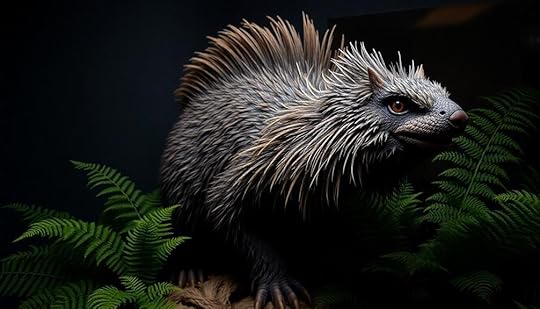
Taxidermy can capture the imagination, and the Ringdocus is a prime example of this art form's intriguing potential. Shot by rancher Israel Ammon Hutchins in 1886, this creature fascinated many with its peculiar characteristics.
After Hutchins traded it to taxidermist Joseph Sherwood, the Ringdocus became a local sensation, displayed prominently where residents could marvel at its unusual features.
Imagine the Ringdocus as you picture:
A creature that merges the fierce elegance of a wolf with the powerful stance of a hyena.A unique coat that raises questions about its ancestry, hinting at ties to prehistoric beings.The aura of mystery surrounding its anatomy, sparking debates about its true classification.Though the Ringdocus was lost to public view for many years, its rediscovery in 2007 reignited interest.
However, due to current legal restrictions, testing its DNA remains a challenge, leaving its origins in question.
Speculation continues about whether it's linked to prehistoric creatures like Chasmaporthetes.
The Ringdocus embodies the allure of the unknown, blending taxidermy with a rich tapestry of history and mystery.
Modern Sightings and Reports
The Ringdocus may have captured imaginations in the past, but modern sightings of the Shunka Warakin have sparked renewed interest in cryptids. Recently, reports from Montana and nearby areas describe large, wolf-like creatures exhibiting unusual features, like elongated limbs and striking coloration.
These descriptions often evoke comparisons to prehistoric creatures, fueling speculation about their origins. Eyewitness accounts frequently coincide with mysterious livestock deaths, suggesting the Shunka Warakin may exhibit predatory behavior reminiscent of ancient carnivorous mammals.
Between 2005 and 2006, a series of livestock attacks attributed to an unidentified creature mirrored traditional descriptions of the Shunka Warakin, further intensifying interest among cryptozoologists and enthusiasts.
These sightings have led some to propose theories linking the Shunka Warakin to surviving populations of prehistoric mammals, such as Chasmaporthetes or other large canids.
The ongoing fascination with the Shunka Warakin, combined with its potential ties to prehistoric creatures, highlights the cultural significance of cryptids in modern folklore. As reports continue to surface, the allure of the Shunka Warakin remains strong, keeping the mystery of this elusive creature alive.
Prehistoric Survivor Theory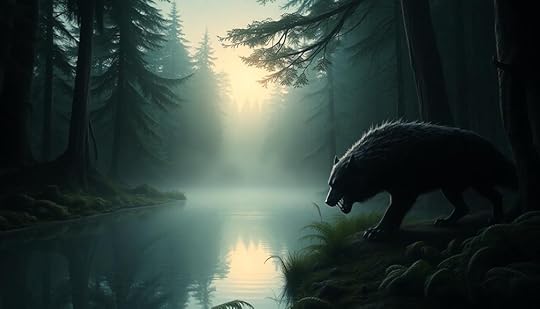
Many enthusiasts and researchers are captivated by the Prehistoric Survivor Theory, which posits that the Shunka Warakin could be a remnant population of Chasmaporthetes. This prehistoric genus of carnivorous mammals thrived in North America during the Miocene to Pleistocene epochs. The creature's large size and unique features hint at possible evolutionary adaptations, fueling the mystery surrounding its existence today.
Consider these striking aspects of Chasmaporthetes that may echo in the Shunka Warakin:
Predatory Behavior: Like its ancient counterpart, the Shunka Warakin is said to prey on livestock, suggesting a continuation of predatory instincts.Distinct Anatomy: Features that differ from modern canids may indicate a lineage that has survived in isolation.Fossil Evidence: Discoveries of Chasmaporthetes fossils in North America raise intriguing questions about a surviving population that could still roam these lands.These elements reinforce the idea that the Shunka Warakin mightn't just be a figment of imagination but a fascinating link to our prehistoric past, shrouded in an enduring mystery.
Hybridization and Genetic Speculation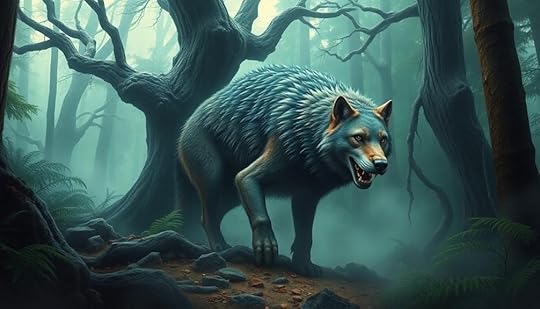
When you explore the Shunka Warakin legend, you'll notice intriguing connections to prehistoric species like Chasmaporthetes.
Genetic anomalies in canids suggest that hybridization might explain the unique traits reported in sightings.
This raises important questions about the creature's origins and its potential links to ancient lineages.
Genetic Anomalies in CanidsGenetic anomalies in canids arise from hybridization, creating a fascinating landscape of traits that can lead to the emergence of cryptids like the Shunka Warakin. When domestic dogs interbreed with wild species, the results can be striking and unusual. You might imagine canids with:
Uncommon Coloration: Unusual fur patterns or hues that stand out from typical canine coats. Some of these anomalies may even be linked to the variety of protein options found in high-quality dog foods, which can influence coat health and color.Unexpected Size: Individuals larger or smaller than known canids, challenging your perception of these animals.Distinct Features: Traits reminiscent of prehistoric species, such as elongated limbs or pronounced jaws.These hybridizations can explain reports of the Shunka Warakin displaying characteristics atypical for known canids. In addition, the nutritional impact of high-quality ingredients on overall health and development may also play a role in these unique traits.
Further studies reveal that interbreeding between wolves, coyotes, and domestic dogs produces viable offspring, hinting at the potential for similar genetic mixing in the wild. Additionally, the prehistoric survivor theory suggests that modern canids might carry genetic remnants of ancient species, which could manifest as the unique features attributed to the Shunka Warakin.
As genetic studies reveal unique alleles, the possibility of undiscovered hybrids becomes more tangible, positioning cryptids like the Shunka Warakin at the intersection of myth and biological reality.
Prehistoric Species ConnectionsWhile the Shunka Warakin captivates the imagination with its mysterious presence, the connections to prehistoric species offer intriguing possibilities for understanding its origins. Significantly, its potential links to prehistoric mammals like Chasmaporthetes, an ancient hyena-like creature, suggest a surviving population or even a re-emergence of traits from extinct canid species. Genetic speculation raises questions about hybridization between wolves and domestic dogs, which could lead to unique features resembling the Shunka Warakin.
The creature's elongated limbs and sloped back might point to genetic anomalies or mutations reflecting traits from its evolutionary lineage. Research into the Borophaginae group, known for their similarities to hyenas, might further illuminate the Shunka Warakin's connections.
Here's a concise overview of the connections:
Prehistoric SpeciesCharacteristicsConnection to Shunka WarakinChasmaporthetesHyena-likePossible trait re-emergenceBorophaginaeExtinct canidsEvolutionary lineage insightsWolves/DogsHybridizationUnique phenotypic expressionsThese insights deepen the debate about the Shunka Warakin's classification and its potential ties to undiscovered species.
Ecological Impact and Role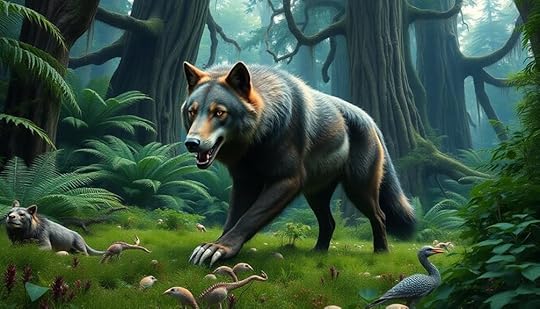
The Shunka Warakin's potential as a top predator in its ecosystem underscores its ecological significance. If this creature is indeed linked to prehistoric carnivores, its presence would shape the ecological dynamics in ways similar to modern apex predators.
Imagine the following scenarios:
The Shunka Warakin hunting large herbivores, controlling their populations and preventing overgrazing.Competing with other apex predators, leading to shifts in territory and hunting behaviors among species.Causing changes in prey species distribution, as they adapt to avoid predation.This predator could disrupt local ecosystems, especially if it preys on livestock, indicating competition with established species and altering food webs.
Historical accounts describe the Shunka Warakin with adaptations like elongated limbs and sharp teeth, traits that align with its predatory role. If it represents a surviving lineage of prehistoric creatures, its ecological impact could be profound.
You'd witness changes in species behavior and distribution, as both prey and competitors adapt to this formidable presence. Fundamentally, the Shunka Warakin could be a pivotal force in maintaining the balance of its environment, echoing the roles of ancient carnivores that once roamed the Earth.
Cultural Legacy and Influence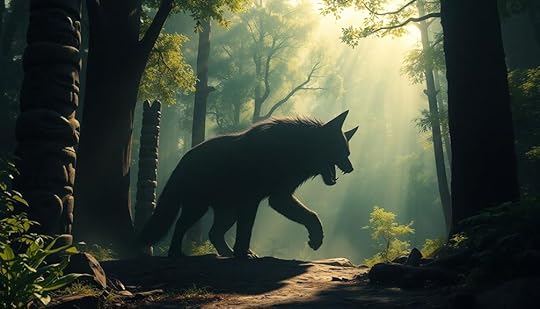
Legends like the Shunka Warakin showcase how folklore can shape cultural identity and convey essential lessons about nature and humanity's place within it.
Rooted in Native American tradition, the Shunka Warakin symbolizes respect for nature and warns against the consequences of greed. This narrative reflects not only the Indigenous perspective but also the trials faced by European settlers maneuvering the untamed wilderness.
As a cultural icon, the Shunka Warakin has inspired diverse expressions in art, literature, and popular media, reminding you of humanity's intricate relationship with the environment.
The legend captivates cryptozoologists and enthusiasts, emphasizing the importance of storytelling in preserving Indigenous culture and the mysteries surrounding us.
The ongoing fascination with the Shunka Warakin encourages discussions about the intersection of myth and reality, as it invites you to contemplate the possibility of undiscovered species.
Additionally, this interest contributes to conservation efforts, reinforcing the need to protect the natural world that has been a significant part of human folklore.
Scientific Skepticism and Challenges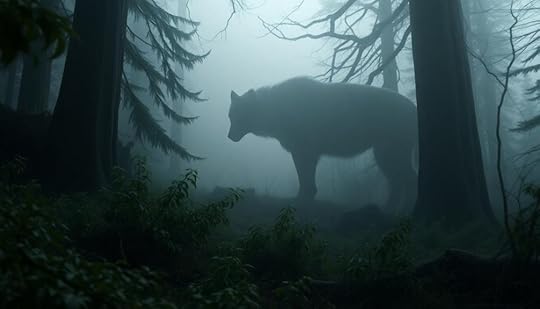
Scientific skepticism about the Shunka Warakin is rooted in a lack of concrete evidence and verifiable specimens. For many scientists, the idea of this creature being a prehistoric entity raises several red flags, primarily due to:
Insufficient fossil records that fail to link the creature to known ancient canids.The challenges surrounding DNA tests on the only specimen, the Ringdocus, which complicate authenticity verification.Ongoing debates about its classification, with some experts suggesting it could be a hybrid or mutation without solid scientific backing.While ongoing reports of unusual livestock predation in Montana spark interest, these claims remain speculative without substantial physical evidence.
Theories suggesting the Shunka Warakin is a surviving prehistoric creature, like Chasmaporthetes, don't hold much weight without rigorous empirical evidence to support them.
As you explore this topic, consider that until researchers can provide a verifiable specimen or conclusive DNA test results, the Shunka Warakin will likely remain a subject of intrigue and skepticism in the scientific community.
ConclusionIn exploring the shunka warakin as a prehistoric creature, you uncover a blend of history, culture, and science that ignites your imagination. While tales of this enigmatic beast captivate your curiosity, remember, "seeing is believing," yet belief alone doesn't validate the extraordinary. As modern sightings continue and genetic speculation flourishes, the mystery endures, urging you to ponder the delicate balance between myth and reality, and what truths might still lurk in the shadows of our understanding.
What if the Ozark Howler Can Control Shadows
If the Ozark Howler can control shadows, it amplifies its eerie reputation, making it an even more formidable creature. Imagine it lurking, using darkness to conceal its massive, bear-sized form and glowing red eyes. This ability could create illusions, heightening fear among those who encounter it in the dense night. You'd see how legends intertwine with the wilderness, as the Howler embodies the primal fears of humanity. Its shadow manipulation would not only deepen its mystery but also link it to ancient myths about darkness. There's much more to explore about this compelling beast and its impact on folklore.
Key TakeawaysIf the Ozark Howler can control shadows, it may create illusions, making it harder for victims to detect its presence in the dark.Shadow manipulation could enhance the Howler's fearsome reputation, instilling deeper dread among those who encounter it.This ability would symbolize the Howler's connection to cultural myths about creatures that dominate darkness, reflecting broader fears of the unknown.Controlling shadows could serve as a tactical advantage in hunting, allowing the Howler to blend seamlessly into its surroundings.The Howler's shadow manipulation might foster local legends, reinforcing community ties through shared stories of mysterious encounters in the wilderness.Characteristics of the Ozark Howler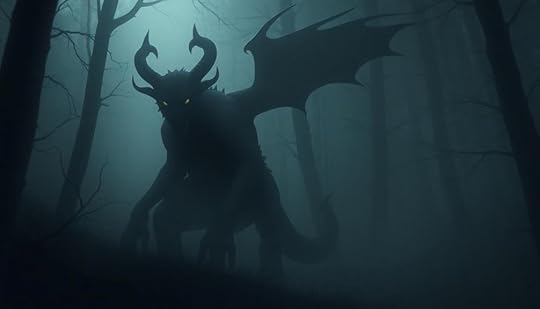
The Ozark Howler is an intriguing creature that captures the imagination of those who venture into its territory. This formidable being is often described as being bear-sized, with a thick body and standing at least 4 feet tall at the shoulder.
Its most striking feature is its black shaggy hair, which blends seamlessly into the dense foliage of the Ozark Mountains. As you explore, you might catch sight of its glowing red eyes piercing through the darkness, a mesmerizing and eerie sight that's hard to forget.
The Howler's vocalizations add to its mystique, producing a deep, guttural howl reminiscent of a wolf howl mixed with an elk bugle. This haunting sound can send chills down your spine, causing an unsettling feeling among those who hear it.
Many accounts even suggest the creature possesses cat-like features, sparking debate about its true identity. Is it a misidentified big cat or perhaps an undiscovered species lurking in the shadows?
Regardless, the Ozark Howler remains an enchanting symbol of the wild, embodying the mystery and allure of its mountainous home.
Historical Sightings and Encounters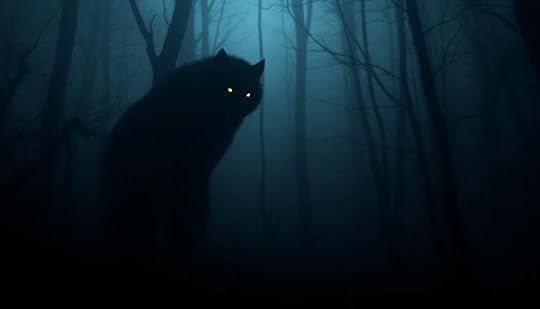
Throughout history, people have reported encounters with the Ozark Howler, sparking intrigue and fear.
You'll find firsthand accounts dating back to the 1800s, including a notable sighting by Daniel Boone.
These historical contexts and eyewitness descriptions paint a vivid picture of this elusive creature and its chilling presence.
Historical ContextDating back to the early 1800s, historical sightings of the Ozark Howler weave a tapestry of intrigue and mystery. The legendary creature has captivated the imaginations of those living in the Ozark region for generations. One of the earliest accounts involves Daniel Boone, who allegedly fired at a creature in Missouri, though no evidence was found.
As time passed, sightings continued to emerge, including a chilling encounter in 1946 when soldiers in Red Oak, Oklahoma, reported a large creature disturbing homes. More recently, in 2011, a sighting in Newton County, Arkansas, described a large black beast with glowing eyes.
The following table summarizes key historical sightings:
YearLocationDescriptionNotable Details1800sMissouriEncounter with Daniel BooneNo evidence found1946Red Oak, OklahomaLarge creature disturbing homesSoldiers reported sightings2011Newton County, ARLarge black beast with glowing eyesFueled interest in the HowlerOngoingOzark RegionGuttural howl resembling wolf/elkSpeculation about its natureDespite numerous reports, skeptics question the existence of this elusive creature lurking in the Shadows of the Ozark.
Eyewitness AccountsEyewitness accounts of the Ozark Howler add a rich layer to its legend, showcasing the varied experiences of those who claim to have encountered the creature.
Historical sightings date back to the early 1800s, when Daniel Boone reportedly fired at a mysterious beast in Missouri, though no trophy was ever found. Fast forward to 1946, when soldiers in Red Oak, Oklahoma, reported a large creature disturbing homes, further fueling the Howler's mythos.
In the 1950s, eyewitnesses described a black, goat-shaped figure lurking in the Ozark forests, with many claiming to see its glowing eyes piercing the darkness.
These accounts only intensified as a notable sighting in 2011 in Newton County, Arkansas, revealed a large shadowy figure that residents believed resembled the Howler.
Despite these numerous eyewitness accounts and varied descriptions, no physical evidence—like remains or clear tracks—has been uncovered to substantiate the existence of the Howler.
This lack of proof leads to skepticism among researchers, leaving the legend shrouded in mystery and prompting you to wonder what really lurks in the shadows of the Ozarks.
Theories Behind Its Existence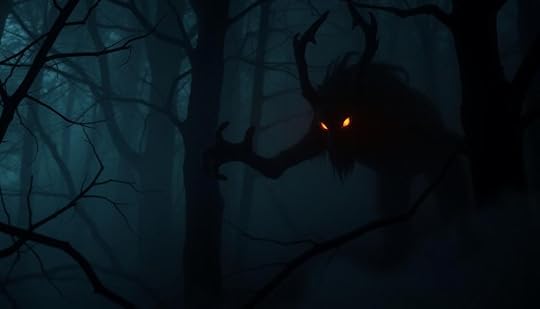
Exploring the theories behind the Ozark Howler's existence reveals a fascinating blend of folklore and psychology. This creature, often described as a mix of real animals and myth, captivates your imagination. Many believe its shadow manipulation abilities stem from its fearsome reputation in local legend.
Some folklorists connect the Howler to the Cu Sith, a mythological black dog linked to death, suggesting it possesses a supernatural knack for controlling darkness. Eyewitness accounts frequently highlight the Howler's glowing red eyes, which might be a means to dominate the shadows around it. This eerie feature adds an unsettling aura, especially in the dimly lit Ozark forests.
Theories surrounding the Howler's existence echo those of other cryptids, where beings are thought to hold powers beyond natural understanding. This hints at a broader cultural narrative that reflects humanity's fears of the wilderness and the unknown.
Moreover, the lack of physical evidence and the variability in sightings support the idea that the Ozark Howler might exist more as a psychological entity, embodying our deepest fears and the mysteries lurking in the dark.
Shadow Manipulation and Its Implications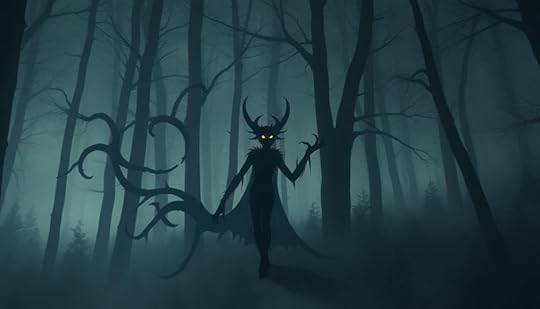
The notion of shadow manipulation adds an intriguing layer to the Ozark Howler's legend, suggesting it could wield powers beyond mere physical presence.
Imagine if this elusive predator could create illusions or conceal its presence, making it nearly impossible for witnesses to capture clear evidence of its existence. Such abilities would enhance its mythical status and deepen the enigma surrounding it.
Shadow manipulation might also instill fear in those who encounter the Howler. By manipulating darkness to create frightening shapes or eerie sounds, it reinforces its reputation in local folklore as a terrifying entity. This psychological impact could lead to widespread tales of encounters that blur the line between reality and myth.
Furthermore, if the Howler can blend seamlessly into its surroundings using shadows, it becomes an even more formidable hunter in the dense forests of the Ozarks.
This capability ties the Howler to various cultural myths about creatures that control darkness, echoing legends of beings like the Cu Sith.
Cultural Significance of the Howler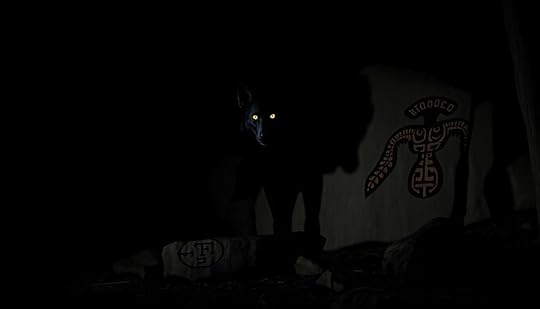
The Ozark Howler isn't just a creature of legend; it's an essential part of local folklore that shapes community identity.
Its eerie presence and haunting howl echo the fears and mysteries of the wilderness, uniting residents through shared stories.
As you explore its cultural significance, you'll see how this myth fosters a legacy that connects generations and fuels creative expression in the region.
Folklore and MythologyRooted deeply in the folklore of the Ozark region, the Ozark Howler captivates the imagination as both a harbinger of death and a symbol of mystery. Its haunting howl, a chilling mix of wolf and elk sounds, echoes through the woods, solidifying its fearsome reputation. This creature's legend dates back to the early 1800s, with accounts of sightings evolving over time, showcasing the adaptability and persistence of its mythology.
The Howler intertwines with Native American myths, embodying themes of fear and the unknown, reflecting humanity's relationship with the wild natural world. As you explore the rich tapestry of Ozark folklore, you'll see how the Ozark Howler influences storytelling, art, and community gatherings. It serves as a cultural symbol, fostering shared experiences among those who've encountered its elusive presence.
The Ozark Howler not only represents the region's mysterious allure but also acts as a reminder of the deeper, often darker, aspects of nature. By engaging with these tales, you connect with the profound cultural significance the Howler holds in the collective consciousness of the community, transcending mere superstition to embody the essence of local mythology.
Community Identity and LegacyDrawing inspiration from the haunting tales of the Ozark Howler, community identity in the region thrives on shared narratives that bind residents together. This creature, deeply rooted in local folklore, symbolizes the mystery and untamed essence of the Ozark landscape, serving as a crucial cultural emblem.
As stories of the Howler are passed down through generations, they intertwine with your identity and influence artistic expressions, including poetry and literature, showcasing its significance in regional storytelling.
The Howler embodies themes of fear and intrigue, attracting interest from cryptozoologists and those captivated by the unknown. This fascination enhances community engagement and boosts tourism, as visitors seek to uncover the creature's mysteries.
Its association with death and dark omens, akin to the Cu Sith from British folklore, reinforces its role as a harbinger, reflecting the fears that come with rural life.
Through collective experiences and encounters surrounding the Ozark Howler, community narratives foster a shared cultural identity. This encourages collaborative storytelling, bridging connections across generations and ensuring the legacy of the Howler remains a vibrant part of the Ozark community fabric.
Animal Incidents Attributed to the Howler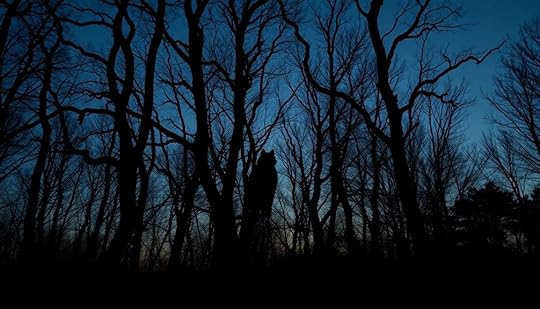
Many reports of animal incidents linked to the Ozark Howler paint a troubling picture for local livestock owners. You might hear tales of mutilated livestock, where neighbors find horses and goats with strange injuries and deep claw marks. This suggests the presence of a predator, potentially the Ozark Black Howler itself.
Witnesses describe encounters with a large, black creature that seems to stalk their animals, raising alarms about its hunting capabilities. In 2006, a livestock owner in Oregon County, Missouri, spotted what looked like a panther, intensifying fears for domestic animals in the region.
Some residents have even encountered the Howler, associating it with the discovery of freshly killed deer. The creature's glowing eyes leave a chilling impression that connects it to various disturbances in local wildlife.
Adding to the unease, people report hearing a deep, guttural howl followed by unexplained animal disappearances. These incidents create a pattern that links the Howler to numerous disturbances involving livestock and other fauna, solidifying its reputation as a lurking threat in the shadows of the Ozarks.
Howler's Influence in Literature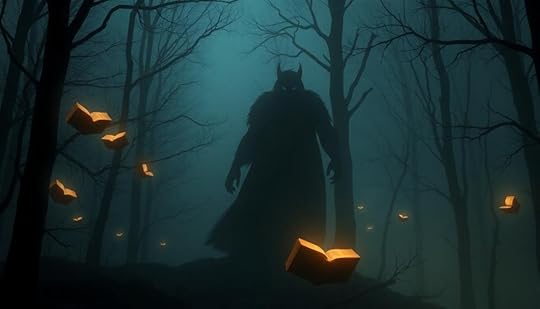
The Ozark Howler's enigmatic presence has sparked intrigue in literature, with numerous authors weaving its myth into their narratives. Often depicted as a black figure cloaked in shadows, the Howler embodies fear and the unknown, enhancing the psychological depth of stories. This creature's ability to manipulate shadows serves as a powerful symbol, reflecting characters' inner fears and driving their development.
In works like "Shadows of the Ozark Howler" by April May Burnside, you can see how the Howler's influence catalyzes exploration of personal and communal anxieties. The Howler's lore parallels the transformative power of breakthrough technologies that reshape our understanding of reality, suggesting that both myth and innovation challenge our perceptions.
The Howler's association with darkness adds a supernatural element, allowing authors to experiment across genres like horror and fantasy. As you read, you'll notice how the Ozark Howler bridges myth and reality, enchanting you with its eerie presence.
This blending of folklore into contemporary narratives stimulates discussions about the role of cultural stories in modern storytelling. The black shadows surrounding the Howler enhance your sense of suspense, inviting you to confront the fears that lurk within.
Ultimately, the Howler's literary influence is more than just myth; it's an exploration of our deepest uncertainties.
Folklore and Community Engagement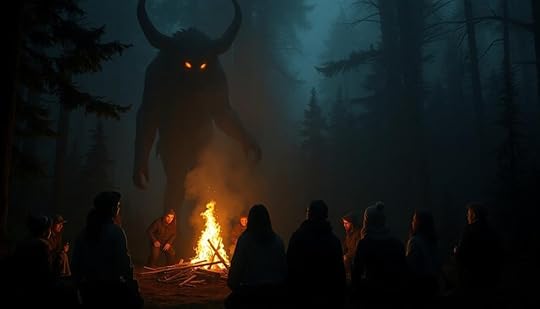
Folklore serves as a vibrant thread weaving through the fabric of community engagement in the Ozarks, with the Ozark Howler at its center. This legendary creature fuels local folklore and intertwines with community narratives, creating a shared sense of identity among residents.
In recent years, the increased interest in spiritual experiences has also influenced how communities celebrate legends like the Howler, blending traditional storytelling with mindfulness practices. You'll find that storytelling sessions and artistic representations celebrate the Howler, inviting both locals and visitors to explore the mysteries of the Ozarks.
The haunting howl of the Ozark Howler stands out as a significant cultural symbol, evoking both fear and fascination. Its mythical control over shadows prompts lively discussions that deepen connections within the community.
Local schools often incorporate the Howler into educational activities, encouraging students to engage with folklore through creative writing and art projects. This not only strengthens community ties but also fosters a sense of cultural pride.
Additionally, the Howler's legend plays an essential role in tourism, as businesses and attractions attract visitors keen to learn about cryptids and the region's rich folklore.
In this way, the Ozark Howler isn't just a tale of the past; it's a living legend that continues to unite and engage the community today.
Modern Interpretations and Media Representations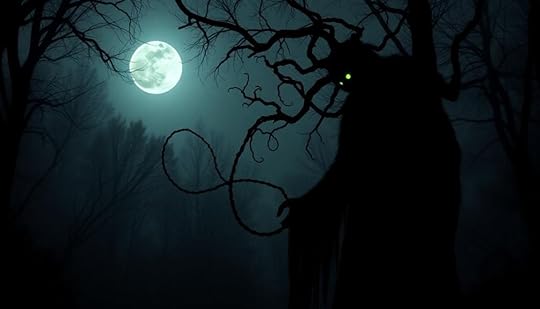
Exploring the Ozark Howler in modern interpretations reveals a creature that embodies both fear and fascination, often depicted as a master of shadow manipulation. This supernatural element enhances its already mysterious persona and solidifies its reputation in folklore. Media representations frequently highlight the Howler's ability to blend into darkness, stalking its prey unseen, amplifying suspense in stories and films.
MediumDepiction of the HowlerLiteratureA guardian of the night, symbolizing hidden dangers in remote areas.Video GamesAn opponent who embodies trepidation in dark environments.Graphic NovelsShowcases eerie shadows that enhance its mythical status.MoviesDepicted as a fearsome creature, lurking in the shadows.These modern portrayals link the Howler's shadow manipulation to themes of fear and the unknown, resonating with audiences drawn to the charm of the mysterious. Recent artistic depictions often showcase the Howler casting elongated, eerie shadows, reinforcing its role as a harbinger of doom and a fascinating figure in contemporary narratives.
ConclusionAs shadows dance and flicker in the twilight, the Ozark Howler emerges—a spectral guardian of the woods, weaving fear and fascination. Its whispered legends tug at your imagination, urging you to ponder the boundaries between myth and reality. With every rustle of leaves, you feel the thrill of the unknown, as if the Howler is beckoning you deeper into its enigmatic embrace. In this haunting mystery, you're reminded that some legends never fade; they simply grow darker.
What if the Rougarou Can Pass Its Curse to Others
If the Rougarou can pass its curse to others through a bite, it creates a chilling cycle of fear and moral dilemmas. You'd face the intense pressure of deciding whether to bite another and pass the curse or keep it yourself. This transformation not only alters your identity but also threatens your community, as the curse could spread rapidly. The legend emphasizes accountability and the consequences of breaking promises, especially during Lent. Every choice holds weight, which binds you to the shared folklore of the Rougarou. You might find that there's even more to uncover about the curse's impact on society.
Key TakeawaysThe Rougarou curse is transmitted through a bite, creating a 101-day countdown for the victim to pass it to another person.Victims must keep the identity of the Rougarou secret to avoid further consequences and maintain their own safety.Passing the curse alters the victim's identity, raising moral dilemmas about responsibility and the impact on their community connections.Decapitation can halt curse transmission, emphasizing community accountability and preventing the curse from spreading further.Rituals and clever tricks, like the "13-item trick," can confuse the curse and offer potential ways to break the cycle of transmission.Origins of the Rougarou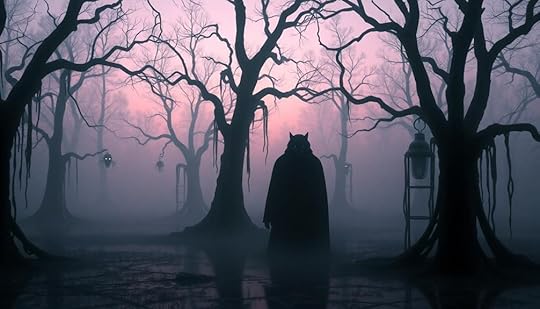
The legend of the Rougarou, often described as a Louisiana werewolf, has its roots in the French term "loup-garou," brought to the region by 18th-century French settlers.
This folklore, rich in cultural influences, blends elements from French, Native American, and African traditions, creating a unique tale that resonates in Louisiana's heritage.
You might be intrigued to learn that the Rougarou is more than just a creature of the night; it embodies the consequences of failure.
According to the legend of the loup-garou, if someone breaks their Lenten vows for seven consecutive years, they could face transformation into this shape-shifting being.
This transformation isn't just a personal curse; it can extend to others.
The Rougarou has the power to pass its curse to another through its bite.
Once cursed, the individual has 101 days to regain their human form by transferring the curse to someone else.
The Rougarou legend serves as a cautionary tale, reminding you of the importance of keeping one's promises and the fate that could await those who don't.
Transformation and Curses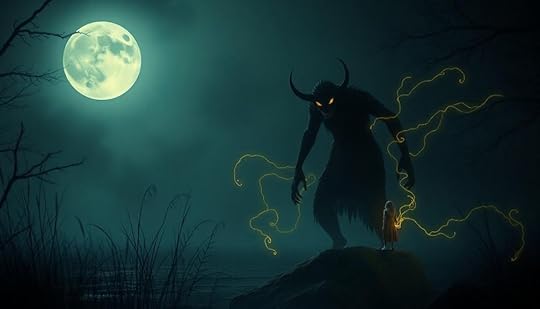
When you encounter a rougarou, a single bite can change your life forever, passing the curse onto you.
As night falls, you're thrust into a struggle for survival, facing the grim reality of hunting to reclaim your humanity.
Yet, there's hope—strategies like the mysterious 13-item trick could offer a way to break free from the curse's grip.
Curse Transmission MechanismCurse transmission in the lore of the rougarou hinges on a chilling mechanism: a bite from the cursed individual. In Louisiana folklore, this bite triggers a transformation, forcing the victim into a race against time. The original rougarou has 101 days to bite someone else before they revert back to human form, perpetuating the cycle of the curse.
FactorDetailsTransmission MethodBite from the original rougarouTime Limit101 days to bite another to pass the curseExcommunication RiskIndividuals excommunicated from the church are at greater risk of becoming a rougarouThis curse is not just about the bite; it reflects deeper themes of sin and exclusion. Those deemed unworthy, like the excommunicated, face potential transformation into a beast. However, the curse can be lifted through clever tactics, like placing 13 identical items, or by decapitation, which halts the transmission. Understanding this curse transmission mechanism is crucial to grasp the haunting legacy of the rougarou.
Bite and ConsequencesHow does a single bite lead to such a terrifying transformation? When a rougarou sinks its teeth into you, you're not just facing a wound; you're accepting a curse. This bite initiates a harrowing process, transforming you into a rougarou after 101 days.
During this period, you must keep the identity of your attacker a secret, or risk further consequences. As you navigate through this torment, you become acutely aware of the weight of the curse. You're haunted by the knowledge that you, too, can pass this transformation to another through your own bite.
This cycle of fear continues as you grapple with the moral implications of your actions. The curse often symbolizes punishment, particularly for failing to observe Lent, linking it to local folklore and Voodoo practices.
You're left to contemplate your choices, knowing that this transformation isn't just physical—it's a shift in your very essence. The world around you changes as you ponder the possibility of biting another victim, thereby perpetuating the cycle.
The curse binds you, and every decision carries the weight of your new existence as a potential harbinger of doom.
Breaking the CurseBreaking free from the grip of the Rougarou's curse isn't a straightforward task. If you find yourself bitten, you face an intimidating 101 days of transformation into this fearsome beast. The only way to break the curse, traditionally, involves passing it on by biting another person.
However, if you wish to escape without inflicting the curse on someone else, you'll need to employ some clever tactics. One effective method involves creating confusion. Gather 13 identical items and place them in front of the cursed individual. The Rougarou, unable to count past 13, will become perplexed, allowing you a chance to break the curse.
Additionally, it's worth noting that certain actions can lead to becoming a Rougarou. Failing to uphold Lenten vows or facing excommunication from the church historically resulted in this transformation, emphasizing the moral implications tied to the curse.
In a world where the Rougarou's curse can easily spread, understanding how to break it becomes essential. With the right strategies, you can find a way to reclaim your humanity and escape the dark fate of the Rougarou.
The Curse Transfer Process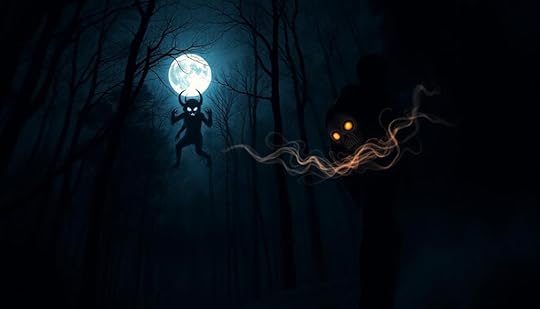
When a rougarou bites someone, the transfer of its curse begins, setting off a chain reaction that can change a person's life forever. The victim inherits the curse and faces the impending transformation into a rougarou within 101 days, a countdown that looms over their daily life.
To avoid becoming the creature, they must keep their new identity secret for a year and a day or risk succumbing to the curse themselves.
This transformation isn't just a physical change; it's also tied to moral lessons. Folklore often associates the rougarou's curse with breaking a Lenten vow, presenting the creature as a punishment for transgressions. The bitten individual must navigate the complexities of their situation, feeling the weight of societal expectations and fears.
Interestingly, there are ways to reverse the curse. Utilizing confusion tactics, like placing 13 identical items to distract the rougarou, can potentially lift the burden.
This process reflects the dual nature of the curse: it acts as a warning and a reminder of accountability within the community. Ultimately, the curse of the rougarou transforms not just the individual but also their connection to those around them.
Cultural Impact of the Curse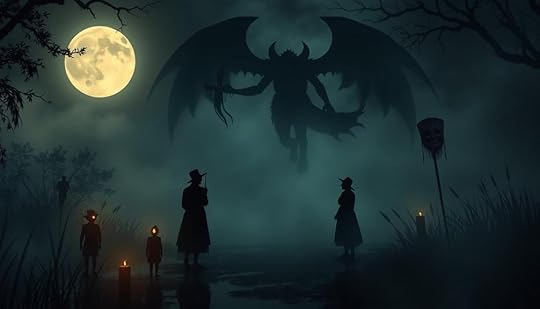
The Rougarou curse influences community behavior by instilling a sense of fear that encourages adherence to local norms.
It serves as a moral lesson, reminding you that failing to observe traditions can lead to serious consequences.
Additionally, various rituals emerge as protective measures, showcasing how folklore intertwines with daily life and local beliefs.
Community Behavioral InfluenceIn Louisiana, the Rougarou curse acts as a powerful social tool that shapes community behavior. When someone gets bitten by a Rougarou, it's not just a personal misfortune; it serves as a grim reminder of the consequences of moral failures. This curse reinforces community standards, urging you and your neighbors to adhere to the values that bind you together. If you stray too far from these norms, you risk not only your reputation but also your very humanity.
Rougarou stories emphasize the importance of secrecy about one's identity, illustrating that revealing too much can lead to dire consequences, not just for you but for the whole community. The fear of becoming a Rougarou instills a culture of caution, compelling individuals to navigate their moral obligations carefully.
As you witness the effects of this curse within your community, you realize how it fosters compliance and shapes behavior. The threat of transformation into a monstrous being keeps everyone in check, ensuring that actions align with shared values.
Ultimately, the Rougarou curse acts as a powerful deterrent against wrongdoing, reinforcing the importance of community cohesion and moral integrity.
Folklore and Morality LessonsStories of the Rougarou not only serve as cautionary tales but also encapsulate deep-rooted morality lessons that resonate throughout Louisiana's cultural landscape.
The curse transfer, symbolized by the act of biting, underscores the consequences of moral transgressions. This mechanism warns you that your actions can affect not just yourself but others, reinforcing the importance of adhering to societal norms, especially during Lent.
Folklore figures like the Rougarou act as enforcers of morality, punishing those who stray from righteous paths.
Parents and elders often invoke the creature's curse to instill good behavior in children, using fear as a tool to guide them.
The narrative emphasizes the significance of discretion, as revealing the identity of someone cursed can lead to even greater consequences.
Rituals for ProtectionLocals have developed various rituals to protect themselves from the Rougarou, blending folklore with practical customs. These rituals serve not only as protection against the curse but also as a way to preserve cultural heritage. One common practice involves placing 13 small objects at entryways, ensuring that the Rougarou, unable to count past 12, is thwarted.
ItemPurposeBeliefSmall stonesWard off the curseRepresents grounding and safetyGarlicRepels supernatural beingsKnown for its protective qualitiesSilver coinsEnhances protectionBelieved to ward off evil spiritsTwigsConfuses the RougarouEntangles its pathAdditionally, silver is often incorporated into protective charms, as its properties are thought to guard against such supernatural threats. These rituals emphasize the importance of secrecy, too; revealing the identity of a Rougarou can lead to transformation, reinforcing community bonds around discretion. Through these rituals, locals not only seek protection from curses but also strengthen their cultural identity.
Modern Interpretations and Media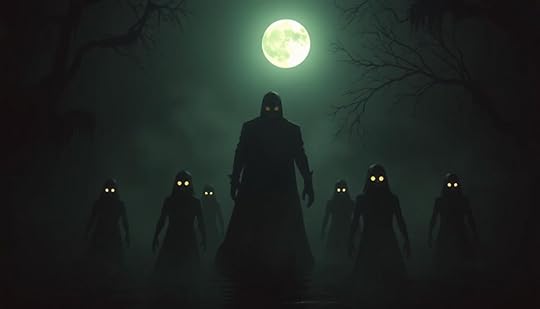
Modern portrayals of the Rougarou have taken on new life in contemporary media, blending traditional lore with fresh narratives. You'll find the Rougarou's curse often depicted as a potent force, transferable through a bite, reflecting themes of contagion and moral consequences. This modern interpretation deepens the horror, turning the creature into a symbol of fear capable of spreading its curse among unsuspecting victims.
In series like "Supernatural," the Rougarou's curse creates tension and drives character development, showcasing how folklore evolves in the face of contemporary storytelling. The creature's ability to pass on its curse invites viewers to ponder the implications of their actions and the potential for consequences in their own lives.
Furthermore, adaptations acknowledge that the curse can be lifted through certain actions, like confusing the Rougarou with 13 identical items. This adds layers to the folklore, making it not just a tale of fear but also one of cleverness and strategy.
Local festivals, such as the Rougarou Festival in Houma, highlight these modern interpretations, engaging the community and celebrating the creature's legacy in a way that resonates today.
Eyewitness Accounts and Folklore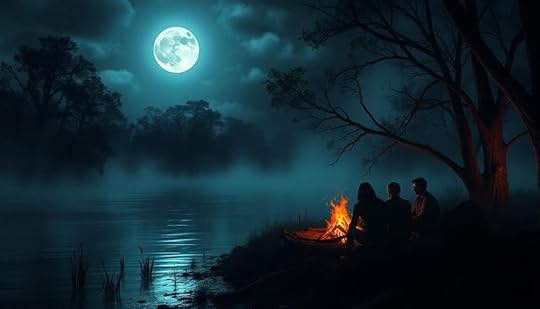
Eyewitness accounts of the Rougarou bring the folklore to life, revealing how real people's experiences can shape and preserve these legends. Many describe a dark figure with glowing eyes lurking in the bayous, instilling a deep-seated fear in those who encounter it. From personal narratives, you'll find individuals recounting the chilling transformation from human to Rougarou, emphasizing its shape-shifting abilities.
Local legends often tell of individuals cursed after breaking a Lenten vow, reinforcing the belief that this curse can be passed through a bite. Cautionary tales abound, particularly aimed at children, warning them against misbehavior.
Here's a glimpse of these accounts:
Key AspectDescriptionSightingsDark figure with glowing eyesTransformationsWitnesses see humans change into RougarousCursesBreaking vows leads to becoming a RougarouCautionary TalesStories warning children about misbehaviorOral TraditionVariations add authenticity to encountersThese anecdotes not only preserve the folklore but also keep the community connected through shared fears and lessons.
Moral Lessons in Rougarou Tales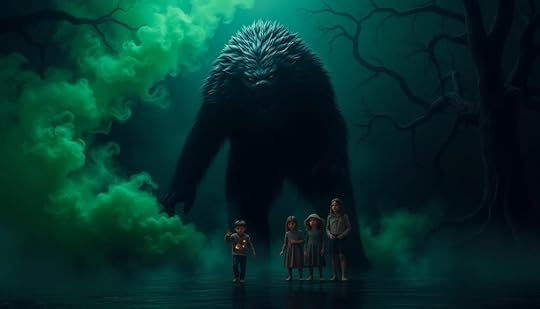
Many Rougarou tales emphasize essential moral lessons, teaching communities about the importance of adhering to societal norms and religious practices. These stories often focus on the consequences of breaking rules, particularly during Lent, where straying from the path can lead to the dreaded curse of becoming a Rougarou.
By illustrating the creature as a punisher of transgressions, these narratives reinforce community values and highlight the need for accountability. You learn that your actions don't just affect you but ripple through your community. When someone misbehaves, they risk passing the curse to others, symbolizing how individual choices can impact the social fabric.
This interconnectedness serves as a powerful reminder: bad behavior can lead to dire consequences for everyone. Moreover, Rougarou legends inspire children to behave well, using fear as a tool for imparting moral lessons. The idea of becoming a Rougarou encourages obedience and respect for community values.
Ultimately, these tales serve as cautionary narratives, reminding you that adhering to societal norms isn't just about personal morality; it's about preserving the well-being of the entire community.
Comparisons to Other Legends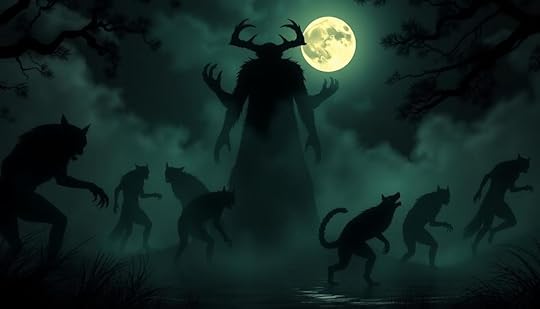
Rougarou tales not only impart moral lessons but also connect to a broader tapestry of legends that share similar themes of transformation and curses. The idea of transformation, particularly through a curse, is prevalent in many cultures. For instance, European werewolf legends, like the loup-garou, illustrate how a bite can create a chain reaction of transformation, just like the rougarou stems from a bite that passes its curse onto others.
This theme resonates with the emotional instability found in BPD dynamics in relationships, where intense connections can lead to tumultuous outcomes.
In Native American folklore, the skinwalker embodies this theme as a shapeshifter that can transfer its powers or curse, demonstrating that the fear of losing humanity isn't unique to any one culture.
Similarly, the Japanese yōkai known as the Jorōgumo ensnares victims, leading them to transformation or demise, echoing the rougarou's chilling narrative of curse transmission.
Even in African tales, the zombi can impose its curse on the living, further emphasizing the shared anxieties surrounding supernatural afflictions.
These legends highlight a universal concern: the peril of transformation through a curse, reminding us that the fear of losing our humanity resonates across cultures.
Community Responses to Sightings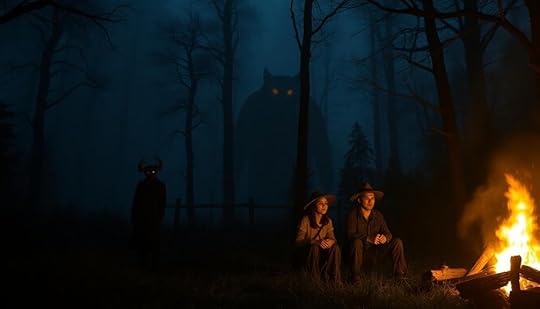
When reports of rougarou sightings surface, communities often rally together, heightening their vigilance and caution. Locals warn their children to stay indoors after dark, ensuring the safety of the younger generation.
You might notice an uptick in personal anecdotes shared on social media and community forums, creating a culture of storytelling that keeps the rougarou legend alive.
Local events like the Rougarou Festival play a significant role in these community responses. They provide a space for discussion about sightings while reinforcing cultural pride and community ties.
You'll find residents engaging in protective rituals, such as placing 13 small items at their doors, believing this practice wards off the creature and protects them from the curse.
Interestingly, these sightings often spark increased tourism, with local businesses capitalizing on the rougarou's legendary status to attract visitors.
You might see shops selling themed merchandise or offering tours about the legend, further intertwining the community's identity with the lore.
ConclusionIn exploring the Rougarou's curse, you see tales of fear and fascination intertwine. You witness transformations that haunt the night, you hear whispers of curses that spread like wildfire, and you feel the weight of moral lessons echo through generations. The Rougarou isn't just a monster; it's a reflection of our anxieties, our beliefs, and our community bonds. As you ponder its legacy, remember: every story has a lesson, and every curse carries a warning.
What if the Honey Island Swamp Monster Leads a Hidden Tribe
If the Honey Island Swamp Monster leads a hidden tribe, it could blend myth with real survival techniques in the swamp's rich ecosystem. This tribe might embody traits from the creature, using ancient hunting practices that respect nature. They'd likely have deep ties to the land, fostering rituals that honor the spirits of the animals they rely on. As sightings and folklore intertwine, this hidden community could represent the untold stories of survival against environmental challenges. Exploring this idea opens up fascinating layers of cultural heritage and ecological wisdom that could reshape your understanding of the swamp's mysteries.
Key TakeawaysThe Honey Island Swamp Monster may symbolize a hidden tribe's survival, adapting to swamp life through traditional hunting and gathering methods.This tribe could possess unique physical traits, resembling descriptions of the monster and reflecting a deep connection to their environment.Rituals and spiritual practices within the tribe may honor the land and wildlife, promoting sustainable hunting practices that align with ecological balance.The presence of the creature could reinforce community identity and folklore, strengthening cultural ties and storytelling traditions among local populations.Conservation of the swamp is crucial for supporting both biodiversity and the potential existence of this hidden tribe, ensuring their survival and cultural heritage.Origins of the Honey Island Swamp Monster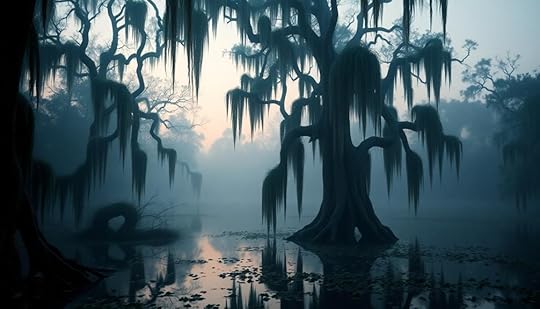
The Honey Island Swamp Monster, shrouded in mystery, has roots that trace back to local Indigenous folklore. Native Americans referred to this enigmatic being as Letiche, a creature believed to be an abandoned child raised by alligators. This legend weaves a poignant tale of survival and adaptation, hinting at a deeper connection between humanity and nature.
The first documented sighting of the Honey Island Swamp Monster occurred in the early 1960s when air traffic controllers Harlan Ford and Billy Mills spotted the creature while hunting near the Pearl River. Eyewitness accounts describe it as a towering figure, approximately 7 feet tall and weighing around 400 pounds, with grayish-brown hair and striking amber-colored eyes.
Over time, various theories emerged about its origins, speculating that it could be a remnant of prehistoric reptiles or even the result of escaped circus chimpanzees from that same era.
This blend of folklore and reported sightings has helped solidify the Honey Island Swamp Monster's place in the region's history, creating a fascinating narrative that continues to intrigue both locals and visitors alike.
Legendary Sightings and Encounters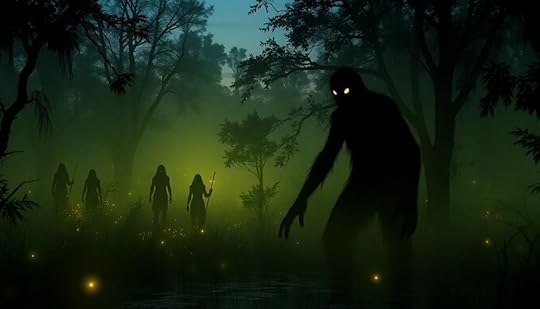
Numerous sightings of the Honey Island Swamp Monster have captivated locals and visitors for decades, each encounter adding to its mythical status. The first documented sighting in August 1963 by air traffic controllers Harlan Ford and Billy Mills described a towering, seven-foot creature with grayish-brown hair and a strong odor.
In 1974, Ford and Mills reignited public interest when they found unusual tracks and a wild boar carcass in the swamp. Witnesses often describe the creature's amber-colored eyes and estimate its weight at around 400 pounds. Local legends refer to it as Letiche or Loup Carou, and its footprints differ from typical Bigfoot tracks, featuring a unique arrangement of toes.
YearNotable Encounter1963First documented sighting1974Discovery of wild boar carcassOngoingContinuous reports of sightingsThe Honey Island Swamp Monster legend thrives on these encounters, often intertwined with tales of hidden tribes or elusive communities lurking within the swamp. Each sighting keeps the mystery alive, drawing adventurers enthusiastic to uncover the truth.
Folklore and Cultural Significance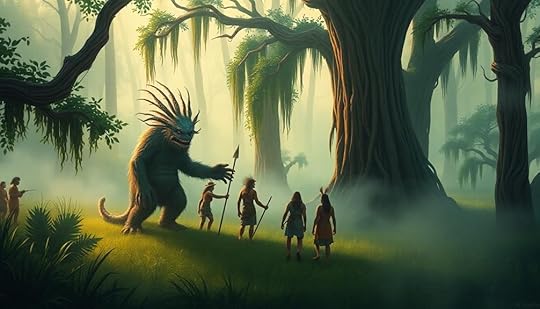
Deep within the lore of Honey Island Swamp, the Honey Island Swamp Monster, or Letiche, emerges as a powerful symbol of cultural heritage. This creature, believed to be an abandoned child raised by alligators, illustrates deep ties to Indigenous beliefs about the swamp.
You'll find that Letiche isn't just a local legend; it embodies the rich tapestry of folklore that defines the region. Cajun traditions also weave in werewolf legends, showcasing how different cultural narratives blend together.
Historical accounts of the swamp monster date back hundreds of years, with stories passed down through generations. These tales hold immense cultural significance, reflecting the values and fears of local communities.
The swamp's mystery has inspired storytelling sessions that strengthen community bonds and preserve unique heritage. As you explore the significance of Letiche, you'll uncover how this creature has become a symbol of local folklore, drawing in tourists and adventurers alike.
The Honey Island Swamp Monster isn't merely a cryptid; it represents the collective imagination and cultural identity of those who call this enchanting swamp home.
Theoretical Hidden Tribe Dynamics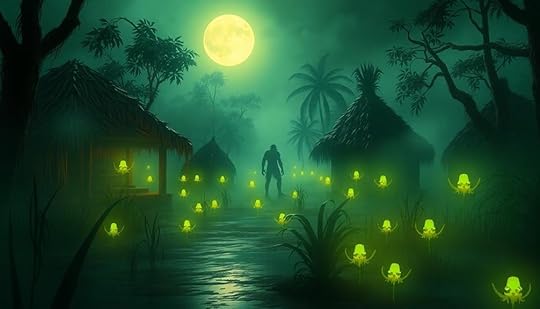
Hidden within the dense foliage and murky waters of Honey Island Swamp, the notion of a secretive tribe raises intriguing possibilities about the dynamics of survival and adaptation in this unique ecosystem.
If a hidden tribe exists, their social structure might be shaped by the legend of Letiche, the abandoned child raised by alligators. This narrative hints at a communal approach to survival, where the tribe nurtures and protects its members, much like the alligators that purportedly raised Letiche.
You can imagine that this tribe would develop physical traits suited for swamp life, perhaps resembling the towering, anthropomorphic descriptions of the Honey Island Swamp Monster.
Their existence could rely on traditional hunting and gathering methods, passed down through generations, allowing them to exploit the swamp's diverse wildlife effectively.
The potential for interbreeding between this hidden tribe and local fauna could create unique societal roles, affecting both physical attributes and cultural practices.
In this way, the dynamics of a hidden tribe wouldn't only focus on survival but also on the intricate relationships formed with their environment, creating a fascinating tapestry of life in the swamp.
Ecological Insights of the Swamp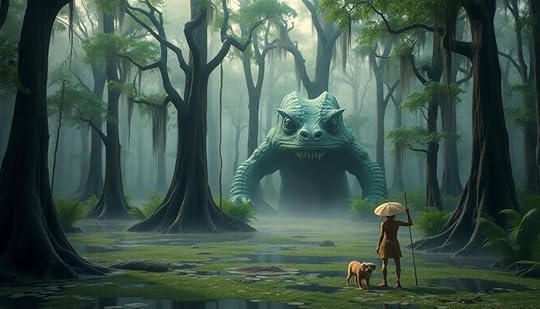
The rich biodiversity of Honey Island Swamp captivates anyone who explores its winding waterways and lush vegetation. This diverse ecosystem supports alligators, deer, black bears, and countless bird species, making it a prime habitat for a potential hidden tribe.
The swamp's unique plant life and aquatic species enhance its ecological diversity, creating a sustainable environment that could easily support a concealed community. Rare and endangered species thrive here, indicating a highly specialized ecosystem essential for survival. A hidden tribe could rely on local resources like fish and edible plants, emphasizing the swamp's richness.
The presence of a bald eagle's nest further underscores the area's ecological significance, as it highlights the need for a habitat that supports critical species.
Moreover, Honey Island Swamp's complex waterways and dense vegetation provide numerous opportunities for concealment, allowing a hidden tribe to thrive away from modern society. This intricate environment not only fosters wildlife but also presents an ideal setting for a community that values ecological harmony and resourcefulness.
Hunting Practices and Rituals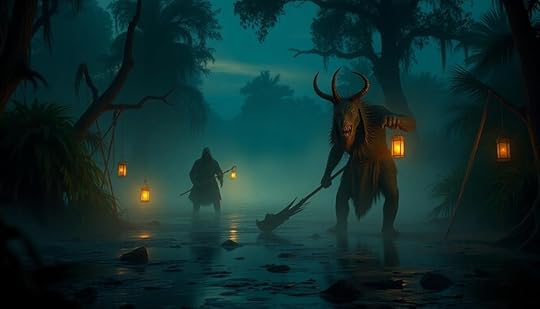
When you explore the hunting practices of the Indigenous tribes in the Honey Island Swamp, you'll notice a deep connection between their traditional methods and the spiritual significance they attach to each hunt.
These communities relied on their intimate knowledge of the land to track wildlife, while rituals like ceremonial dances honored the spirits of the animals taken.
Understanding these practices reveals not just survival skills, but a profound respect for nature that shapes their cultural identity.
Traditional Hunting MethodsIn the heart of the Honey Island Swamp, traditional hunting methods reflect a profound connection between Indigenous tribes and their environment. These practices showcase their deep understanding of the local wildlife and its behaviors.
To appreciate their approach, consider the following aspects:
Traps, nets, and spears: Essential tools that demonstrate skill and knowledge of the swamp.Rites of passage: Challenges for young hunters to master tracking, stealth, and survival.Sustainable hunting: Taking only what's necessary to maintain the swamp's biodiversity.Storytelling: Crucial for passing down techniques and cultural values, reinforcing community bonds.Rituals: Offerings to spirits or ancestors, highlighting the respect for nature.These traditional hunting methods aren't just about survival; they embody a holistic view of living in harmony with the swamp.
Each hunt serves as a moment to connect with the land and its creatures, ensuring that future generations are equipped to honor this delicate balance.
Spiritual Significance of HuntingHunting in the Honey Island Swamp goes beyond mere survival; it's steeped in spiritual significance that deepens the bond between humans and nature. Traditional hunting practices among Native American tribes involve rituals that honor the animals, reflecting a profound spiritual connection to the ecosystem. You might find that successful hunts are seen as a partnership with the spirits of the animals. This belief often leads to practices such as offering prayers, songs, or even portions of the kill to appease these spirits.
For many tribes, hunting rites of passage hold great importance. Young hunters learn about responsibility, respect, and gratitude, essential values that guide their connection to the land. During communal gatherings, stories and teachings about local wildlife and the environment are shared, reinforcing cultural identity and community bonds.
Moreover, some tribes practice seasonal hunting that aligns with natural cycles, highlighting sustainability and ecological balance. This approach not only respects the spirits of the animals but also demonstrates a commitment to preserving the environment for future generations.
Embracing these rituals, you'll find that hunting becomes more than a practice; it transforms into a sacred act that honors the intricate relationship between humanity and nature.
Environmental Challenges and Conservation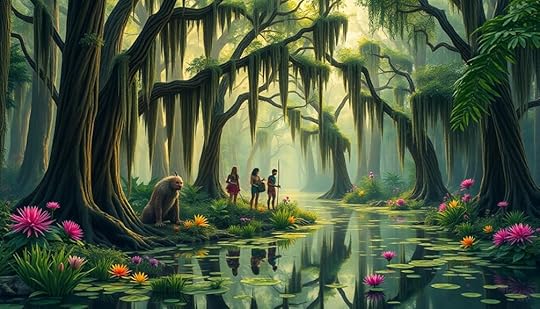
You mightn't realize that Honey Island Swamp faces serious environmental challenges, like pollution and habitat loss, which threaten its unique biodiversity.
Protecting this delicate ecosystem is vital for maintaining the balance of life in the swamp and supporting any hidden communities that may exist there.
Habitat Protection EffortsHabitat protection efforts in the Honey Island Swamp are fundamental for maintaining the area's rich biodiversity, which includes numerous rare and endangered species. To guarantee the swamp thrives, it's essential to address several important factors:
Combat water pollution that threatens aquatic lifeRestore degraded habitats to support wildlifeImplement sustainable tourism practices to minimize human impactCollaborate with local organizations and wildlife agenciesRaise public awareness about habitat conservationThese conservation efforts focus on preserving the natural landscape and maintaining the delicate balance of both aquatic and terrestrial species.
Local organizations and wildlife agencies actively monitor the swamp's health, implementing restoration projects to counteract the effects of pollution and human encroachment.
Public awareness campaigns play a significant role in educating visitors about the importance of protecting the swamp's habitat. By fostering a sense of stewardship among tourists and locals alike, these initiatives help guarantee that the rich folklore surrounding the Honey Island Swamp Monster remains tied to a healthy ecosystem.
Engaging the community is essential for the success of habitat protection efforts, securing a future where both wildlife and tales of the swamp can coexist harmoniously.
Biodiversity and Ecosystem BalanceThe rich biodiversity of the Honey Island Swamp plays an indispensable role in maintaining its ecosystem balance. You'll find various wildlife species here, including alligators, deer, black bears, and wild boar. Each of these animals contributes to the ecological stability by fulfilling specific roles within the food web. The unique plant life also supports this balance, providing food and shelter for numerous species.
Moreover, the swamp is a habitat for rare and endangered species, underscoring the significance of conservation efforts. Protecting this biodiversity is essential not only for the species themselves but also for the overall health of the ecosystem. Environmental challenges like habitat degradation and water pollution threaten this delicate balance, making ongoing conservation efforts necessary.
Additionally, the interbreeding limitations and unique evolutionary adaptations observed in species such as alligators highlight the need to preserve the swamp's natural habitats. By focusing on maintaining this biodiversity, you help guarantee the resilience of the ecosystem against environmental stressors.
Ultimately, safeguarding the Honey Island Swamp is crucial for sustaining its intricate web of life, ensuring that all species can thrive harmoniously.
Impact of PollutionPollution greatly threatens the delicate ecosystem of Honey Island Swamp. The impact is profound, affecting both wildlife and potential hidden tribes.
You might be surprised to learn that:
Sewage is dumped into waterways roughly 600 times daily in the UK, impacting similar areas in the US.Rare and endangered species face declining populations due to contaminants disrupting their reproduction and feeding.Increased pollution jeopardizes the quality of habitats that could harbor undiscovered species.Interbreeding limitations arise among species, threatening genetic diversity vital for survival.Sustainable practices and protective measures are fundamental for preserving the swamp's natural beauty.With pollution on the rise, conservation efforts are more important than ever. The unique biodiversity of Honey Island Swamp is already at risk, and if we don't act, we could lose not just the wildlife but also the potential for discovering hidden tribes that might call this swamp home.
Taking steps to reduce pollution and promote conservation will help guarantee that this precious ecosystem remains intact for generations to come. Your awareness and actions can make a difference in the fight against pollution and for the conservation of Honey Island Swamp.
The Intersection of Myth and Reality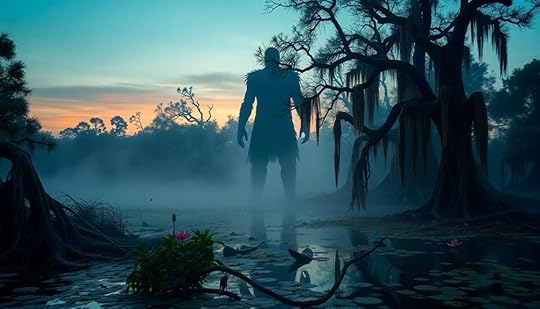
Nestled within the murky depths of Honey Island Swamp, the legend of the Honey Island Swamp Monster serves as a striking example of how myth and reality intertwine. Known as Letiche in local Indigenous folklore, this creature's origins point to an abandoned child transformed by the swamp, hinting at connections to hidden tribal histories.
Historical accounts from tribes like the Chocar and Hummer reinforce this belief, showing that local legends may arise from ancient customs related to the swamp's mystical inhabitants.
Cajun folklore further enriches this narrative, as it intertwines the Honey Island Swamp Monster with werewolf legends. Eyewitness accounts and ongoing sightings blur the lines between myth and reality, suggesting that the creature mightn't just be a figment of imagination but could reflect a hidden community or tribe residing deep within the swamp.
The discovery of unique footprints—some three-toed and others four-toed—raises further questions about the existence of a hidden tribe or species that could have influenced the development of the Honey Island Swamp Monster legend. In this way, the stories you hear may hold more truth than mere folklore suggests.
ConclusionIn the enchanting echoes of the Honey Island Swamp, the possibility of a hidden tribe led by the elusive swamp monster sparks curiosity. This fascinating creature, cloaked in folklore, invites you to explore the delicate dance between myth and reality. As you venture through the vibrant vegetation, remember that every whispered tale and shadowy sighting enriches our understanding of this extraordinary ecosystem. So, keep your eyes peeled and your imagination open—adventure awaits in the wild wonders of the swamp!
What if the Wendigo’s Powers Grow Stronger With Each Winter
If the Wendigo's powers grow stronger with each winter, you'd be facing a relentless predator. Each cold season amplifies its speed, strength, and cunning, enhancing its supernatural abilities. As the Wendigo consumes more victims, it can summon fierce storms to trap you in its deadly grip. Its psychological influence deepens, making you more susceptible to its manipulations. Each act of cannibalism not only triggers its transformation but also solidifies your worst fears. This cycle of hunger and horror creates a nightmare of survival during winter months, as the Wendigo becomes a force you can't ignore. There's much more to uncover about its chilling terror.
Key TakeawaysThe Wendigo's powers amplify each winter, increasing its strength and speed, making it a more formidable predator.With each winter, its weather manipulation abilities become more potent, creating severe storms to hinder prey.Psychological effects of Wendigo Fever intensify during colder months, making victims more prone to succumbing to despair.Each act of cannibalism during winter reinforces the Wendigo's connection to its supernatural powers, enhancing its cunning and aggression.The cycle of fear grows as the Wendigo consumes victims, which further boosts its abilities and instills terror in survivors.Origins of the Wendigo
The Wendigo legend, rooted deeply in Algonquin and Cree folklore, serves as a haunting reminder of the perils of greed and cannibalism during brutal winter months. Its origins trace back to times when the harshness of winter forced individuals to make dire choices. In these extreme conditions, some resorted to cannibalism for survival, prompting a transformation into the Wendigo—a monstrous embodiment of insatiable hunger.
This transformation marks a significant moral decay, as those who give in to such acts become consumed by their desires. The Wendigo isn't just a creature; it symbolizes the consequences of gluttony and the violation of tribal taboos.
As the cold season progresses, the influence and powers of the Wendigo intensify, serving as a chilling cautionary tale for Native American communities. Each retelling emphasizes that succumbing to greed during scarcity invites dire consequences, highlighting the importance of moral integrity.
Through generations, the Wendigo's lore has evolved, yet its core message remains: heed the warnings of excess and the dangers lurking in the depths of winter. Embrace caution, or risk becoming the very monster you fear.
Physical Characteristics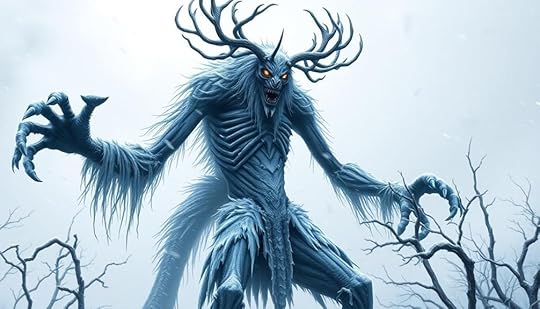
Wendigos embody the harshness of winter with their chilling physical characteristics. Each winter, these creatures become more pronounced, their skin growing increasingly emaciated, and their bones more visible, a direct reflection of their insatiable hunger.
As the cold months pass, you might notice the Wendigo towering over twelve feet tall, its elongated limbs enhancing its predatory agility.
The creature's pale green skin takes on a frostbitten, mottled appearance, often adorned with patches of snow-white or gore-stained fur, blending seamlessly into its environment.
As it feasts on human flesh, the Wendigo's fangs and claws grow larger and sharper, making them lethal tools for dismembering prey.
Its eyes evolve as well, glowing more intensely, shifting to a luminous red or yellow. This transformation not only grants the Wendigo enhanced night vision but also contributes to its terrifying visage.
With each winter, the Wendigo's physical characteristics become a chilling reminder of its insatiable need for sustenance and its dominance over the frozen landscape.
Keep an eye out—this winter terror is always lurking, waiting for its next victim.
Behavioral Traits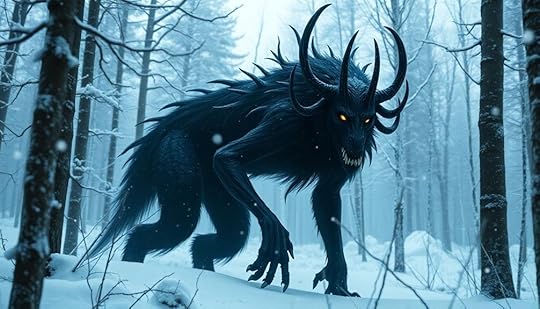
Hunting in the unforgiving winter landscape, these creatures exhibit a terrifying blend of cunning and aggression driven by their insatiable hunger.
The Wendigo's hunting strategies evolve each season, sharpening its skills to seek out more prey. With heightened stealth and mimicry abilities, it lures unsuspecting victims by imitating familiar voices or cries for help, creating an atmosphere of dread.
As winters grow harsher, the Wendigo's supernatural strength amplifies, allowing it to cover vast territories with incredible speed. This relentless pursuit of food makes it even more aggressive, as it won't hesitate to attack anything that crosses its path.
Its regenerative capabilities are particularly chilling; injuries sustained during encounters heal rapidly, enabling the Wendigo to bounce back and continue its hunt.
Moreover, the creature's connection to winter storms strengthens, allowing it to manipulate weather conditions. By conjuring blizzards and harsh cold, the Wendigo complicates escape for its prey, instilling fear deep within those who wander into its domain.
In this brutal environment, the Wendigo becomes a master predator, embodying the very essence of winter's fury.
Transformation Process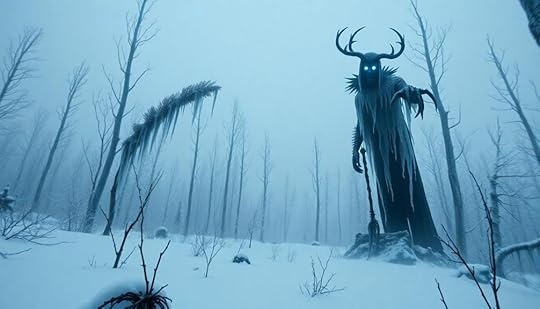
In the depths of winter, a chilling transformation begins for those who succumb to the desperate act of consuming human flesh. This transformation often starts when extreme starvation drives individuals to grotesque gluttony, leading them down a dark path. As you take that first bite, the physical alterations begin. Your features morph, losing their humanity and taking on a monstrous appearance. Fur sprouts, claws elongate, and fangs emerge, marking the beginning of your descent.
With each subsequent feast on human flesh, the changes intensify. This process not only warps your body but also grants you supernatural abilities, such as enhanced strength and speed. You become a creature of the night, able to manipulate the weather around you, summoning storms to aid in your hunting. Each harsh winter strengthens your powers, pushing you further from your former self.
Ultimately, the transformation culminates in a grotesque visage that embodies the consequences of moral decay. The reflection in the mirror reveals not just a monster, but a soul consumed by its own choices, forever trapped in the cycle of hunger and darkness.
Powers and Abilities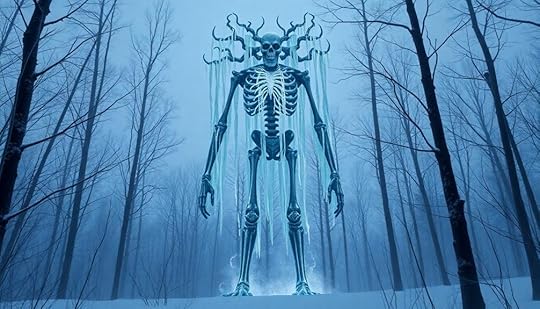
As winter sets in, you'll notice the Wendigo's powers amplify dramatically, making it a more fearsome predator.
Its enhanced hunting tactics, coupled with supernatural strength and speed, allow it to stalk its prey with chilling efficiency.
With each winter, these abilities evolve, transforming the Wendigo into an even more terrifying force of nature.
Seasonal Power AmplificationThe Wendigo's powers surge with each winter, transforming it into a nightmarish embodiment of cold and hunger. With every passing season, it accumulates energy from the frigid environment, making it stronger and more formidable. Its supernatural abilities, including heightened senses and rapid regeneration, evolve, rendering it nearly invulnerable to conventional attacks.
As winter deepens, the Wendigo becomes adept at psychological manipulation, inflicting Wendigo Fever on its victims. This horrific affliction leads to severe mental anguish and madness, making it easier for the creature to hunt. The cold amplifies its insatiable hunger, driving it toward cannibalism and resulting in a greater number of victims each season.
The Wendigo's ability to manipulate weather patterns also grows, allowing it to summon storms that enhance its hunting efficiency. As it harnesses the dark arts, it becomes a master of its domain, using the winter's chill to its advantage.
Each winter you face the Wendigo, you confront a creature that has become a more powerful, relentless predator, driven by an ever-increasing hunger and an arsenal of supernatural powers honed through the seasons.
Enhanced Hunting TacticsWith each winter's arrival, the Wendigo's hunting tactics evolve into a chilling dance of deception and brutality. Its enhanced supernatural abilities transform it into a predator that's not only stronger and faster but also more cunning.
As the winter chill sets in, you'll find the Wendigo employing new strategies that make it an even more formidable foe.
Here are four key tactics the Wendigo uses to manipulate its prey:
Advanced Stealth: The Wendigo moves silently through the snow, using the environment to conceal its presence.Mimicry: It imitates familiar voices or sounds to lure unsuspecting victims, exploiting their trust and psychological vulnerabilities.Weather Manipulation: The creature can summon storms and extreme cold, obscuring visibility and disorienting its prey, making escape nearly impossible.Heightened Senses: With sharper senses, the Wendigo tracks and ambushes victims with deadly precision, even in total darkness.Each winter, these enhanced hunting tactics turn the Wendigo into a relentless nightmare, showcasing its supernatural prowess and making survival increasingly difficult.
Seasonal Influence on Strength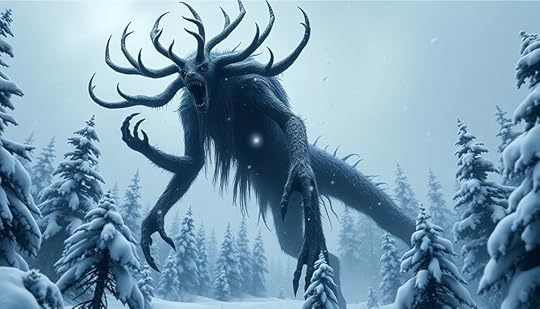
As winter bites harder, the Wendigo's strength surges, fueled by the brutal conditions and its relentless hunger.
You'll notice that its cannibalistic tendencies peak during these cold months, evolving its feeding patterns to maximize its power.
This seasonal shift doesn't just make the Wendigo more dangerous; it heightens its abilities and cunning, turning it into a true predator of the night.
Winter's Harshness Amplifies AbilitiesWinter's unforgiving chill enhances the Wendigo's already fearsome powers, making it an even more formidable predator in its icy domain.
The harshness of winter aligns with its primal hunger for survival, amplifying its supernatural abilities and transforming the creature into a relentless hunter. Each winter, the Wendigo grows stronger, making it essential for you to be aware of its intensified threat.
Here are four ways winter amplifies the Wendigo's abilities:
Increased Speed and Strength: The cold environment enhances its physical prowess, allowing it to overpower prey quickly.Weather Manipulation: Prolonged exposure to extreme cold enables the Wendigo to summon storms, obscuring its presence and disorienting its victims.Psychological Influence: The harsh winter can amplify the Wendigo Fever in potential victims, making them more susceptible to its manipulations.Aggression During Solstice: Seasonal changes, especially during the winter solstice, further empower the Wendigo, driving it to seek new victims amid the dark, cold landscape.In this chilling season, the Wendigo's abilities reach their peak, heightening your need for vigilance.
Cannibalism During Cold MonthsThe chilling grip of winter not only amplifies the Wendigo's powers but also drives individuals to the brink of desperation. As the cold months drag on, the hunger for survival can push you toward the unthinkable: cannibalism. Consuming human flesh isn't just a grim necessity; it triggers a transformation, binding you to the dark spirit of the Wendigo, and enhancing its supernatural powers.
During these harsh winters, the Wendigo grows stronger with each act of cannibalism, feeding off the desperation that permeates the air. Each bite you take reinforces its connection to this malevolent entity, making it more cunning and aggressive in its pursuit of prey.
The chilling winds whisper tales of those who succumbed to their instincts, becoming harbingers of doom, set loose upon the world. As the Wendigo indulges in its insatiable hunger, it becomes increasingly adept at dark arts, able to manipulate the very weather that torments you.
With every winter, the cycle repeats, a haunting reminder of how the cold can twist humanity into something monstrous, feeding the Wendigo's power and deepening its grip on the world around you.
Seasonal Feeding Patterns EvolveIn the depths of winter, when isolation and hunger take hold, the Wendigo's feeding patterns evolve to capitalize on the vulnerability of its prey.
As the cold months stretch longer and harsher, the Wendigo becomes a more formidable predator, harnessing its supernatural powers to thrive in this season of desperation.
Its hunting strategies become increasingly sophisticated, ensuring the creature remains at the top of the food chain.
Here are some ways the Wendigo's seasonal feeding patterns evolve:
Increased Hunting Activity: The Wendigo hunts more aggressively, seeking out the weakened souls lost in the snow.Mimicking Voices: It may imitate human cries to lure unsuspecting travelers into its grasp during blizzards.Weather Manipulation: The creature can summon storms, creating treacherous conditions that facilitate its hunts.Cycle of Fear: With each victim consumed, the Wendigo's powers grow, further entrenching its legend and instilling terror in those who survive.With every winter, the Wendigo adapts, proving that survival is a game of cunning and fear.
Weaknesses and Vulnerabilities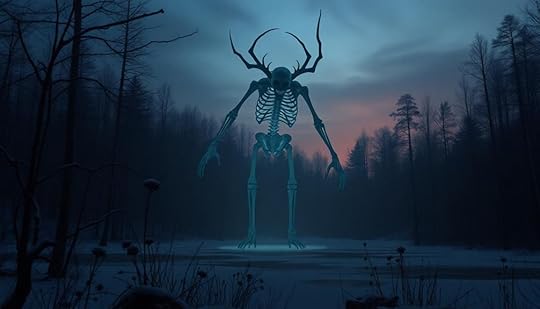
During daylight hours, Wendigos become markedly weaker and less aggressive, offering a vital window for potential escape or confrontation. You should take advantage of this time to strategize and gather your resources.
Fire is your most effective weapon against a Wendigo; it not only deters attacks but can also inflict permanent damage. However, be cautious, as burning a Wendigo might provoke its rage rather than incapacitate it.
Utilize protective symbols or amulets, like Anasazi symbols, to create barriers that can defend against the Wendigo's approach. Sound blocking techniques, such as wearing headphones or earplugs, can shield you from its maddening shrieks designed to induce fear and confusion.
Traveling in groups greatly enhances your survival chances. Knowledge sharing about the Wendigo's weaknesses and vulnerabilities is essential; the more informed you are, the better prepared you'll be.
Remember that the Wendigo exhibits hibernation behavior during certain periods, meaning it's less active and more vulnerable. Use this time wisely to plan your next move, ensuring you're ready to confront or escape this terrifying creature.
Cultural Significance and Impact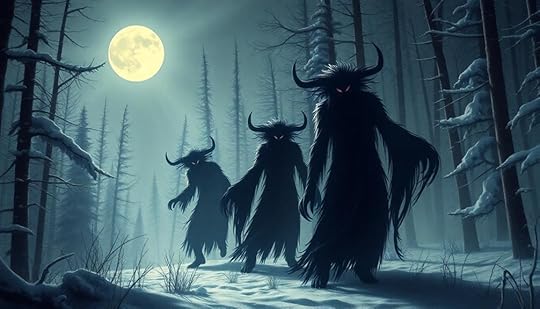
While many might see the Wendigo merely as a terrifying creature of folklore, its true significance lies in the moral lessons it imparts within Indigenous cultures. The Wendigo embodies insatiable hunger and the dire consequences of unchecked desires, particularly during harsh winters. As its powers grow, it serves as a stark reminder of the moral decay that can arise from desperation and cannibalism.
Here are some key cultural impacts of the Wendigo legend:
Survival Lessons: The Wendigo cautions against the dangers of excess and selfishness, especially in times of need.Moral Consequences: It emphasizes the repercussions of greed, warning against the exploitation of resources, which leads to environmental degradation.Communal Beliefs: The legend reinforces social control by promoting ethical behavior within tribes, discouraging actions that harm the community.Ecological Issues: Contemporary interpretations link the Wendigo's mythological powers to critiques of capitalism and consumerism, urging respect for the natural world.Ultimately, the Wendigo remains a powerful symbol of the balance between survival and morality, shaping how we perceive our relationship with the environment and each other.
ConclusionAs winter's chill deepens, the Wendigo's hunger mirrors our own insatiable desires. Each flake of snow whispers tales of greed and isolation, reminding you that the cold can awaken dark cravings within. You realize the true battle isn't just against the Wendigo's growing strength, but the shadows lurking in your heart. Embrace the warmth of connection and community, for when you face the winter together, the Wendigo's power wanes, and hope flickers anew in the frostbitten night.
October 9, 2024
Unlocking Cryptid Mysteries: Explore the Unknown
Have you ever wandered through a misty forest or peered into the depths of a dark lake and wondered what might be lurking just beyond your sight? This curiosity—the draw towards the unknown—is a shared thread that unites many of us. In the vast tapestry of existence, many believe there are mysterious creatures and unknown entities, hidden just out of reach, waiting to reveal their secrets. Welcome to the captivating world of cryptozoology, where the existence of beings such as Bigfoot and the Loch Ness Monster is more than mere folklore. It is a journey into the heart of our deepest questions about nature, existence, and the thrill of discovery. Here, we will dive deep into the cryptid mysteries that have captivated hearts and minds throughout the ages, inviting you to explore the possibilities of life beyond what we know.
Key TakeawaysThe term “cryptozoology” was coined in the 1950s by Belgian zoologist Bernard Heuvelmans.The 1967 Patterson-Gimlin film is one of the most analyzed pieces of evidence in the field.Early reports of creatures like the Loch Ness Monster date back to the 6th century.Modern technology plays a vital role in investigating and understanding these hidden creatures.Organizations and communities support enthusiasts in uncovering the truth behind these legends.Introduction to CryptozoologyCryptozoology delves into the study of creatures that remain shrouded in mystery due to their unproven existence. This fascinating field explores the legends and folklore surrounding these elusive beings, often termed cryptids. You might find the concept intriguing as it intertwines scientific inquiry with cultural narratives, aiming to uncover truths behind stories passed down through generations.
The allure of cryptozoology extends to various creatures that have captured the human imagination. From the legendary Bigfoot to the enigmatic Loch Ness Monster, each has provoked curiosity and debate among enthusiasts and skeptics alike. A significant aspect of this exploration involves examining the origins of these tales, which frequently highlight our desire to connect with the unknown.
Moreover, engaging with the folklore of cryptids often involves understanding the context in which these creatures were born. While some stories may be rooted in myth, their persistence in popular culture signifies a collective fascination with the possibility of beings that exist outside of our current understanding of the world.
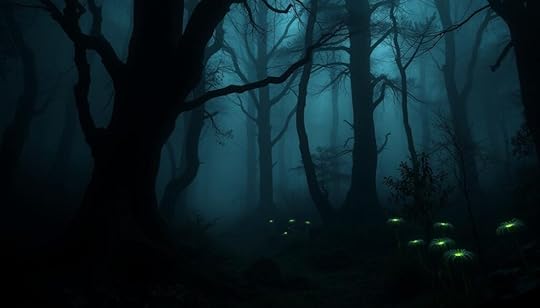
As you journey through the realm of cryptozoology, you may discover a blend of skepticism and belief that defines this unique discipline. It encourages not just the search for proof, but also a deeper appreciation for the stories and cultures linked to their legends. This exploration opens doors to countless mysteries waiting to be unraveled.
Understanding Cryptid Mysteries and Their ImpactCryptid mysteries have long fascinated people, weaving themselves into the fabric of cultural narratives across the globe. These creatures, often described as large and fearsome, capture the imagination and prompt discussions about biodiversity and our relationship with nature. The legends surrounding cryptids like Sasquatch, the Loch Ness Monster, and the Chupacabra significantly influence public perception, resulting in a blend of skepticism and intrigue.
Many will recognize the story of Sasquatch, rooted in indigenous lore from the Pacific Northwest. Its mainstream appeal surged in the 1950s, especially after the release of the famous Patterson-Gimlin film. Such legends not only drive tourism, especially to sites like Loch Ness, but also inspire researchers and enthusiasts to delve deeper into the unknown, highlighting the profound cultural significance of these tales.
The Chupacabra, emerging in Puerto Rico during the mid-1990s, serves as another prime example. Sightings across Latin America and the southern United States perpetuate its status as a feared predator. As perceptions around these cryptids evolve, they often shed light on broader societal concerns, including environmental awareness and conservation efforts.
The interdisciplinary nature of cryptozoology brings together elements of anthropology, zoology, paleontology, and folklore. This diversity enriches the conversations surrounding cryptid mysteries, encouraging both serious inquiry and playful speculation. As individuals nurture their curiosity, they contribute to a growing discourse that helps demystify our world and promotes engagement with ecosystems.
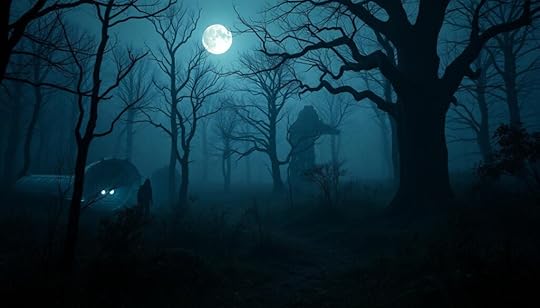
The lure of mysterious creatures has captured your imagination, connecting deeply with ancient myths and cultural stories from around the world. Cryptids like Bigfoot and the Loch Ness Monster spark a blend of fear, curiosity, and excitement, making them fascinating subjects for exploration and legend.
Hollywood has embraced these cryptids, turning them into iconic characters that enrich thrilling stories. Films such as “Bigfoot: The Most Famous Cryptid?” and “The Loch Ness Monster: Scotland’s Favorite” showcase the allure of these enigmatic beings, fueling your desire to learn more about their origins and places in folklore.
Across various cultures, a myriad of mythical beings share the stage with cryptids. The Chupacabra in Latin America and the Yeti in the Himalayas reflect a diverse global landscape, each contributing unique narratives to our understanding of *mysterious creatures*. In West Virginia, the 1960s ignited the legend of the Mothman, a winged figure believed to predict disasters. These compelling stories have perpetuated long-lasting legends, captivating audiences of all ages.
Scientific scrutiny invites both intrigue and skepticism regarding the existence of cryptids. Despite numerous sightings reported in diverse locales—from the vast expanses of North America to the depths of Loch Ness—research challenges claims of authenticity. The fascination surrounding cryptids often evolves into controversial discussions, as empirical evidence remains elusive. This ongoing discourse between believers and skeptics highlights a complex relationship with these legendary beings, maintaining interest among enthusiasts.
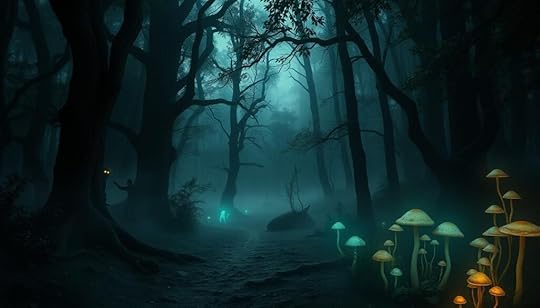
Ultimately, the passion for cryptids is fueled by its cultural stories, myths, and the quest to unravel what lies beyond conventional understanding. As you delve deeper into the world of these extraordinary beings, the intersection of belief, folklore, and personal experience continues to draw you into the enigma of the unknown.
The History of CryptozoologyThe journey of cryptozoology is rich and varied, deeply interwoven with ancient myths and evolving through the years. It reflects humanity’s unending curiosity about the unknown, laying the groundwork for a unique branch of study that continues to intrigue people around the globe.
Ancient Myths and LegendsFrom the serpent-like creatures of the seas to the fantastical beasts inhabiting forests and mountains, ancient myths have significantly influenced our understanding of cryptids. These stories not only provided entertainment but also served as vehicles for cultural beliefs, fears, and hopes. Understanding these ancient myths adds layers to the cryptozoology history, allowing us to trace how perception of mysterious creatures has evolved over centuries.
Evolution of the Field in the 20th CenturyThe 20th-century evolution of cryptozoology marked a pivotal shift from folklore to a more structured investigation of legendary creatures. With growing interest in science and exploration, cryptozoologists began to document sightings and anecdotal evidence in a systematic way. This change fostered an environment where once-mythical entities could be studied as legitimate subjects of inquiry, bridging the gap between scientific skepticism and public fascination.
Influential Figures in Cryptozoological ResearchRemarkable pioneers in the field have left a lasting impact, shaping cryptozoology history through their advocacy for scientific approaches. Figures like Bernard Heuvelmans, often regarded as the father of cryptozoology, sought to categorize and analyze cryptids objectively. Another key contributor, Ivan T. Sanderson, brought a naturalist’s perspective to the subject. Their efforts significantly advanced the framework within which this intriguing field operates today, inspiring both professionals and enthusiasts alike.
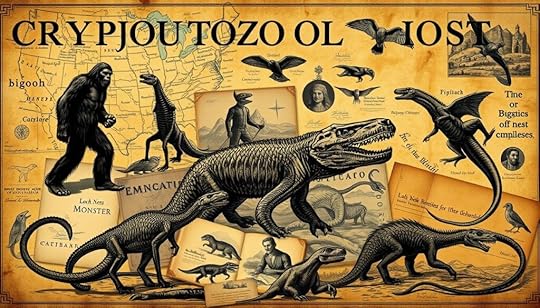
Throughout history, various notable cryptids have captured the imagination of people across the globe. Each creature carries unique stories and sightings that contribute to the rich tapestry of folklore and mystery. Three particularly intriguing cryptids are Bigfoot, the Loch Ness Monster, and the Chupacabra. These creatures continue to evoke fascination and debate among enthusiasts and skeptics alike.
Bigfoot: The North American LegendBigfoot, often referred to as Sasquatch, is a legendary hominid cryptid believed to inhabit the forests of North America. Sightings date back to the early 20th century, and the iconic Patterson-Gimlin film remains a core piece of evidence fueling discussions about its existence. Many enthusiasts venture into the wilderness, hoping to catch a glimpse of this elusive creature. The lore surrounding Bigfoot speaks to the enduring desire for exploration and the unknown.
The Loch Ness Monster: Secrets Beneath the SurfaceThe Loch Ness Monster, affectionately known as “Nessie,” has intrigued people for generations. Alleged sightings in the deep waters of Loch Ness in Scotland give rise to a multitude of theories about this aquatic enigma. Despite extensive investigations and technological advancements, scientific proof of the Loch Ness Monster remains elusive. The mystery continues to draw visitors to the loch, eager to uncover its secrets.
Chupacabra: A Mysterious PredatorOriginating from Latin America, the Chupacabra has gained notoriety as a bloodsucking creature associated with livestock attacks. Reports of sightings often describe it as a small, spiky animal or a strange canine-like creature. Various theories attempt to explain its origins, sparking widespread curiosity and concern within affected communities. The Chupacabra serves as a captivating example of how folklore can intertwine with real-world events.
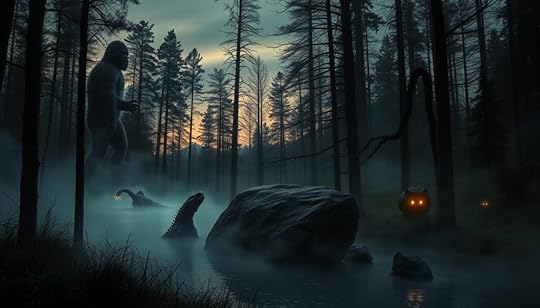
Cryptozoology requires a unique set of techniques to probe the mysteries surrounding elusive creatures. These cryptozoological investigations often combine traditional methods with modern technology, making each study multifaceted and comprehensive.
Fieldwork stands at the core of these investigations, allowing researchers to collect evidence in natural habitats. Techniques such as extensive interviewing of eyewitnesses provide vital insights and accounts that might direct subsequent studies. Considerable attention is given to physical evidence collection, like footprints, hair samples, and other biological markers. Each piece of evidence can serve as a crucial clue in the quest to identify cryptids.
With advances in technology, the landscape of cryptozoological investigations has evolved. The incorporation of DNA analysis enhances researchers’ ability to understand and document varieties of life, sometimes revealing hidden species. Motion-sensitive cameras are being utilized for evidence collection, capturing unexpected glimpses of wildlife that may include cryptids. These cutting-edge techniques are essential for verifying claims and ensuring the continuity of the research.
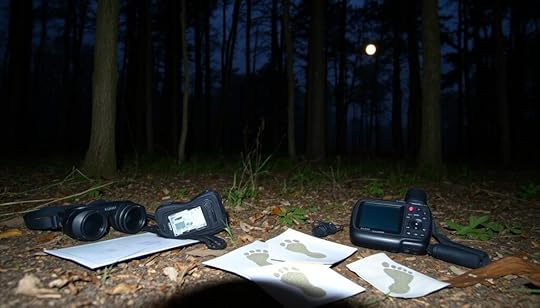
The interdisciplinary nature of these investigations showcases a refreshing perspective on scientific inquiry. Encouraging collaboration between different fields amplifies the effectiveness of techniques deployed in the search for cryptids. Each discovery contributes not only to the body of knowledge about unknown species but also fosters a broader understanding of biodiversity and conservation efforts.
TechniqueDescriptionSignificanceFieldworkIn-depth research in natural habitats.Enables first-hand evidence collection and observation.InterviewsEngaging with eyewitnesses for firsthand accounts.Provides context and leads for further investigations.Physical Evidence CollectionGathering biological samples like hair and footprints.Pivotal for verifying cryptid existence and behavior.DNA AnalysisUtilizing genetic research to identify species.Reveals hidden or unknown entities through genetics.Motion-sensitive CamerasAutomatically captures images of wildlife in action.Enhances chances of documenting rare or elusive creatures.Challenges Facing CryptozoologistsDelving into the world of cryptozoology presents a unique set of challenges. Researchers navigating this field encounter numerous roadblocks that can hinder their pursuit of evidence and understanding about legendary creatures. From scientific skepticism to pressing funding issues, these hurdles require careful consideration, particularly regarding ethical considerations that impact local ecosystems and communities.
Skepticism from the Scientific CommunityOne of the most significant challenges cryptozoologists face is the skepticism of the scientific community. Many scientists question the legitimacy of cryptozoology, often citing the lack of empirical data and rigorous methodology. This scientific skepticism creates an environment where valid investigations struggle for acknowledgment. Critics argue that the discipline sometimes operates on a foundation of folklore rather than science, raising doubts about the reliability of the claims made in this mysterious field.
Funding and Ethical ConsiderationsSecuring sufficient funding remains a major obstacle for cryptozoological research. Unlike more established scientific fields, funding opportunities for cryptozoology are limited, complicating the execution of thorough investigations. Furthermore, ethical considerations become intertwined with these financial hurdles. Researchers must approach their work with respect for local ecosystems and cultures, ensuring that their methods do not harm existing wildlife.
ChallengeDescriptionScientific SkepticismDoubt from the scientific community regarding the legitimacy and methodology of cryptozoology.FundingLimited financial resources make it challenging to conduct comprehensive research.Ethical ConsiderationsNeed to balance scientific curiosity with respect for ecosystems, local cultures, and animal welfare.This landscape emphasizes the importance of transparency and integrity in the field. As you explore cryptozoology, consider how the blend of skepticism, funding uncertainties, and ethical considerations shapes the overall narrative of these enigmatic creatures.
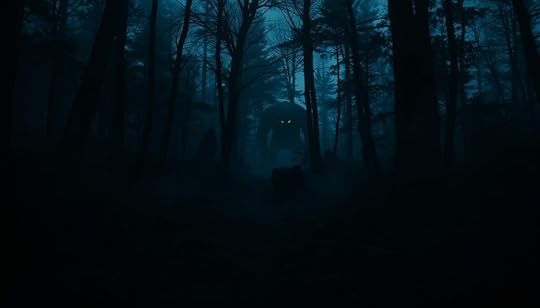
Unsolved enigmas have always captivated the human imagination, particularly within the realm of cryptid mysteries. Numerous cases persist, remaining mysteries that invite both curiosity and skepticism. The events surrounding the Dyatlov Pass incident in 1959, where nine ski-hikers died under mysterious circumstances in Russia, exemplify how such enigmas can fuel ongoing speculation and analysis.
The realm of cryptid mysteries often intersects with phenomena that challenge conventional understanding. For instance, in December 2016, reports emerged of a CIA officer experiencing unexplained symptoms while stationed at the American Embassy in Havana. The situation escalated, leading to a series of similar cases impacting Americans and Canadians, ultimately unveiling research gaps in neurobiology and environmental health. By late 2018, over 26 Americans and 13 Canadians were experiencing illness linked to strange noises in their surroundings. Such cases reveal significant research gaps that beg for scientific exploration.
Another captivating case involves the infamous Mary Celeste, which departed New York in 1872 under the command of Captain Benjamin Briggs. The ship was later found adrift with no sign of her crew, presenting an unsolved enigma that has puzzled maritime historians for decades. This mystery, along with many others, sheds light on the gaps in our understanding of human behavior under extreme conditions. Cryptid mysteries like these highlight the importance of continued inquiry into our environment and the phenomena within it.
The Bermuda Triangle serves as another example, where a boat with 20 passengers disappeared in 2020, prompting extensive searches without any clues regarding their fate. Such occurrences not only fascinate enthusiasts but underline the essential nature of scientific exploration to uncover truths that lie hidden beneath the surface.
Ultimately, these unsolved enigmas remind you of the mysteries yet to be explored, reinforcing the significance of ongoing research in these intriguing phenomena. The importance of biodiversity and species conservation cannot be understated, as various species have historically provided resources for medicine and other essential aspects of human life. As scientists continuously strive to fill research gaps, the hope remains that future endeavors will bring clarity to these enduring cryptid mysteries.
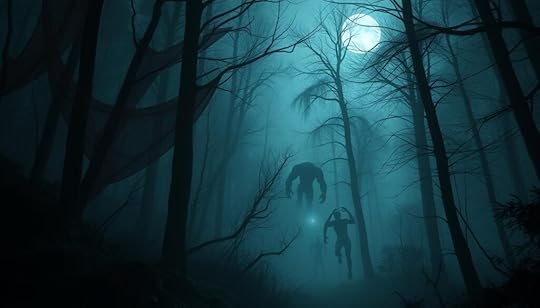
Technology plays a vital role in reshaping how cryptozoologists approach their field. From DNA analysis to the deployment of advanced equipment like drones and camera traps, these innovations enhance the search for elusive creatures. The combination of scientific methods and cutting-edge technology offers new perspectives and tools for evidence collection, driving cryptozoology into a more scientific frontier.
How DNA Analysis Reshapes Our UnderstandingAdvancements in DNA analysis allow researchers to analyze biological samples more precisely. This enables scientists to identify known species while exploring the possibility of uncovering unknown ones. By examining environmental DNA collected from areas reputed to be home to cryptids, you can gather vital evidence that supports or refutes sightings and lore. This technique significantly increases the rigor of cryptozoological research, offering hope for more substantial findings in the future.
Using Drones and Camera Traps for Evidence CollectionThe advent of drones and camera traps has transformed evidence collection methods in cryptozoology. Drones equipped with high-resolution cameras facilitate large-scale surveys of remote wilderness, capturing footage that may reveal signs of cryptids. This non-invasive approach respects their habitats while improving the efficiency of data collection.
Camera traps, strategically placed in areas with frequent cryptid sightings, utilize motion sensors to document animal activity. These devices prove invaluable, contributing quantitative data to the ongoing exploration of creatures like Bigfoot. Furthermore, thermal imaging and sound analysis through specialized microphones offer additional ways to detect creatures during night expeditions. With these advancements, the realm of cryptozoology expands further into the scientific arena.
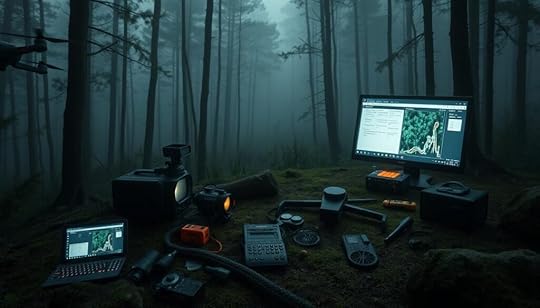
Cryptids occupy a unique space in the socio-cultural fabric of many communities. These mysterious creatures inspire fascination and curiosity, often becoming integral parts of local folklore and storytelling. The cultural impact of cryptids can be seen through various forms of media, including stories, films, and television shows, as noted by T.S. Mart, illustrating their significance in shaping collective identities.
Many communities draw upon legends of cryptids to forge connections among members. For instance, Native American tribes have long shared oral histories featuring beings such as Bigfoot and the Loch Ness Monster. J. Mullis points out that these tales serve not only to entertain but also to pass down valuable cultural traditions and beliefs. The socio-cultural relevance extends beyond mere fascination, as the shared narratives reinforce cultural bonds and foster a sense of belonging.
The mid-20th century witnessed a surge in cryptid sightings, influenced in part by the rise of television and fantasy-based media. The popularity of these stories likely contributed to the continued intrigue surrounding cryptids. At the same time, some researchers have sought to debunk these myths. In “Abominable Science,” D. Loxton and D.R. Prothero highlight the absence of scientific evidence for creatures like the Loch Ness Monster, prompting discussions on the fine line between folklore and fact.
The table below showcases various well-known cryptids and their socio-cultural relevance:
CryptidFirst SightingSignificanceAssociated FolkloreBigfoot1958 (Bluff Creek, California)Community identity in North AmericaLegends shared by Native American tribesMothman1966 (Point Pleasant, West Virginia)Symbol of local lore; tied to historical eventsLinked to the Silver Bridge collapseChupacabra1995 (Puerto Rico)Growing interest in Latin American folkloreStories of livestock exsanguinationJersey Devil18th CenturyInspiration for local myths and mediaVarious documented sightingsSkunk Ape1960s (Florida)Regional cultural identity, especially in the EvergladesNoted for its pungent odor and elusive natureThrough the lenses of socio-cultural relevance and folklore, cryptids resonate deeply within communities. They bridge the gap between myth and reality, serving as a compelling source of inquiry that both entertains and educates. With their rich histories and connections to cultural memory, cryptids continue to captivate the imagination of many.
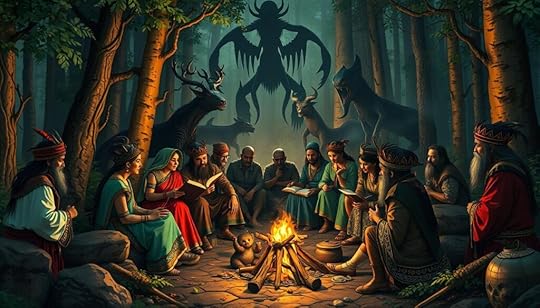
The intersection of cryptozoology and mainstream science presents a unique landscape for exploration. Although cryptozoology often remains on the fringes, the potential for collaboration enriches both fields. Traditional scientific approaches combined with cryptid studies could lead to exciting discoveries, particularly as researchers seek to integrate diverse methodologies.
Bridging the Gap: Integrating Different ApproachesEfforts to bridge the gap between cryptozoologists and mainstream scientists open doors for innovative research. With a focus on collaboration, scholars can work in harmony with cryptozoologists, employing scientific principles to study unidentified species. This integration allows for:
Joint DNA analysis initiatives that enhance the genetic understanding of cryptids.Knowledge sharing between ecologists and cryptozoologists, leading to new insights into habitat preservation.The establishment of ethical guidelines to respect local cultures and wildlife, fostering a collaborative spirit.Future Prospects for Research and DiscoveriesThe future prospects for both fields seem promising as technology advances and skepticism begins to wane. With increased interest in their correspondence, cryptozoologists can expect more legitimacy in their studies. Potential areas for development include:
Utilizing advanced imaging technology to capture evidence of elusive beings.Investigating historical accounts and local folklore alongside scientific methods.Collaboration with environmental scientists to highlight conservation needs in biodiverse regions.
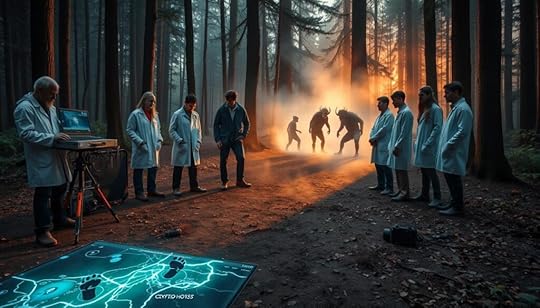
In summation, collaboration between cryptozoology and mainstream science is essential to this ongoing journey. As ethics and integration improve, the opportunities for new discoveries skyrocket, potentially uncovering secrets behind creatures once thought to be mere myths.
Personal Accounts and Eyewitness TestimoniesPersonal accounts and eyewitness testimonies play an essential role in the realm of cryptozoology. These narratives provide a wealth of anecdotal evidence that fuels interest and ongoing investigations into cryptid sightings. Although some may question their reliability due to their subjective nature, these accounts are often the first clue to uncovering the mysteries surrounding these elusive creatures.
For example, reports of a creature estimated to be 60-70 feet long have captured attention and speculation. Eyewitnesses describe its dorsal fins as towering between 8-10 feet, jagged with chunks missing—a thrilling detail that has intrigued both enthusiasts and skeptics alike. Over a span of 6-7 minutes, the creature was observed surfacing near a ferry, suggesting a sustained presence that further adds to its mystique.
The rich tapestry of folklore among native Alaskans includes legends of a gigantic cryptid that roams the waters around Kodiak. This longstanding belief showcases how personal accounts become woven into cultural narratives and shape our understanding of cryptid sightings. Similarly, the Minnesota Iceman, a unique figure encased in ice, has appeared across various locations in the United States, garnering numerous eyewitness testimonies that lend credence to the enigma.
Eyewitness descriptions of creatures such as the Wendigo, reported to stand as tall as 15 feet with glowing eyes, further illustrate the fervent details individuals provide. Minnesota has amassed hundreds of accounts of Bigfoot, with sightings dating back to 1908. Locations such as Lake Pepin have had reports of a serpent-like creature known as Pepie since as early as 1871, adding an extra layer of intrigue to these personal narratives.
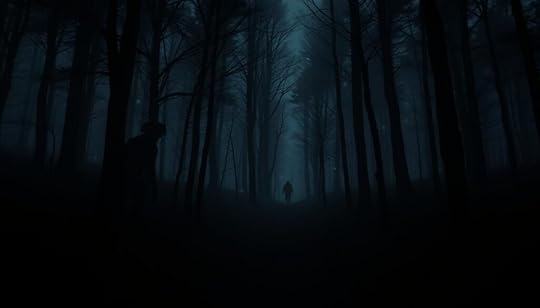
The Minnesota Dogman presents an intriguing challenge to investigators. Eyewitness descriptions depict it as a bipedal creature ranging from 7 to 9 feet tall. Despite a plethora of reported sightings, physical evidence remains scarce. A lack of independent verification for claims related to the Dogman raises questions about confirmation bias, where individuals may misidentify known creatures such as bears or large dogs in the heat of the moment.
These personal accounts, while sometimes controversial, are invaluable to the ongoing quest to understand the mysteries of cryptids. They propel investigations, challenge perceptions, and ignite imaginations regarding the enigmatic beings lurking within our folklore.
Exploring Cryptid Habitat and Conservation EffortsEngaging in habitat exploration reveals the intriguing ecosystems that cryptids inhabit. Investigating these elusive areas allows for a better understanding of the delicate balance between mystery and reality in environmental conservation. Cryptids, often misunderstood, play a role in biodiversity. Your exploration can illuminate how these creatures connect with various species and their habitats.
Conservation efforts aimed at protecting these environments significantly impact ecological health. By safeguarding the locales where cryptids are said to reside, one benefits not only the creatures themselves but also the entire ecosystem. Without such efforts, the ongoing degradation of these habitats threatens numerous species and disrupts intricate ecological systems.
For instance, many believe that the legend of Bigfoot, often spotted in forests across North America, exemplifies how local cultures intertwine with biodiversity. These habitats serve as critical biomes for wildlife, making protection efforts paramount. Additionally, the increasing temperature of regions like Loch Ness prompts concerns regarding the species diversity in freshwater ecosystems. You may be surprised to discover how threats such as climate change can alter the natural environment, affecting both known species and potential cryptids.
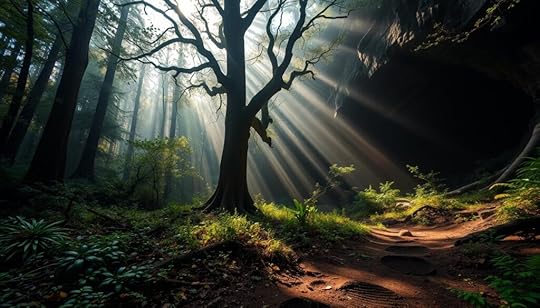
Understanding the connection between cryptids and their habitats emphasizes the importance of ecological impact in conservation. Many humanoid legends, such as that of the Chupacabra, highlight the necessity of protecting these ecosystems from further encroachment. Engaging in conservation initiatives increases public awareness and encourages communities to actively participate in habitat preservation.
CryptidHabitatImpact of Conservation EffortsBigfootForested RegionsPreserves biodiversity and prevents habitat destruction.YetiHimalayan MountainsHelps maintain delicate alpine ecosystems.Loch Ness MonsterLoch NessProtects freshwater biodiversity against pollution.ChupacabraLatin America and Southern U.S.Supports community efforts in wildlife protection.Through your commitment to habitat exploration and supporting conservation efforts, advocating for biodiversity becomes a meaningful pursuit. The relationship between cryptids and ecological stewardship highlights how exploration can lead to positive changes within our environment. Engaging in these areas fosters appreciation and respect for the world’s mysteries while ensuring that future generations also benefit from these vital ecosystems.
The Future of Cryptozoology and Cryptid ExplorationThe future of cryptozoology presents an exciting landscape defined by exploration and scientific advancements. As technology continues to evolve, researchers gain access to innovative tools that enhance their ability to investigate cryptid sightings and expand their knowledge of uncharted territories. Modern methodologies, including DNA analysis and remote sensing technologies, transform how studies are conducted. This not only improves the quality of evidence collected but also opens up new pathways for exploration.
In recent years, citizen science has taken the forefront in encouraging broader participation in cryptozoological research. Platforms like the Bigfoot Field Researchers Organization serve as crucial resources, allowing enthusiasts to share findings and collaborate on investigations. This community-driven approach underscores the research potential of citizen involvement, fostering a collective effort toward understanding our elusive subjects.
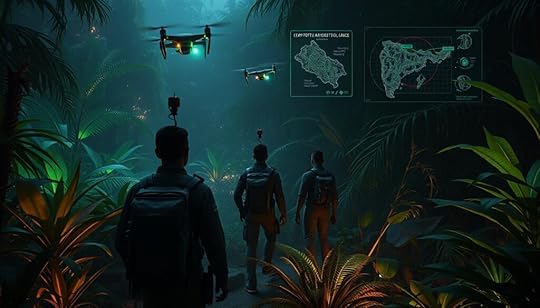
As you look towards the advancements in this field, consider the ongoing efforts to locate creatures long thought extinct, such as the Tasmanian Tiger. With numerous expeditions still taking place in Tasmania and mainland Australia, the prominence of cryptids in both scientific and cultural spheres remains strong. The possibility of discovering new flora and fauna exists alongside the thrill of encountering legendary beasts, underscoring the dynamic interplay between mythology and biology.
The continuous discovery of approximately 18,000 new species each year, albeit mostly small or less publicized, signals the ongoing need for exploration. Notable finds, like the saola, emphasize that what begins as a cryptid can sometimes lead to groundbreaking scientific revelations. The increasing interest in deep-sea ecosystems and even cybersecurity presents new realms for exploration. As digital creatures, much like the concept of creepypasta, thrive online, you can see how the frontier of cryptozoology might expand into both terrestrial and theoretical domains.
Exploration AreaResearch PotentialNotable DiscoveriesForestsIdentifying rare speciesSaola (1992)OceansDiscovering deep-sea lifeGiant Squid sightingsRemote HabitatsTracking elusive creaturesTasmanian Tiger (expeditions ongoing)Digital LandscapeInvestigating myth-based phenomenaCreepypasta cultureThe future of cryptozoology lies at the intersection of exploration, scientific innovation, and an ever-growing enthusiasm for the unknown. As research advances, you might find that the allure of cryptids evolves into a more profound understanding of the biodiversity surrounding us, inviting anyone with curiosity to partake in this fascinating journey.
Benefits of Understanding Cryptid MysteriesExploring cryptid mysteries offers numerous benefits that extend well beyond mere fascination. Engaging with these enigmatic creatures enhances your understanding of folklore and promotes ecological awareness. When you delve into cryptid lore, you spark curiosity about the environment where these legendary beings are said to dwell.
Cryptids like Bigfoot, the Loch Ness Monster, and the Chupacabra serve as portals to scientific discovery. Investigating these creatures often leads researchers to examine habitats, ecosystems, and conservation efforts in a new light. For instance, the Pacific Northwest’s temperate rainforests, often associated with Bigfoot sightings, harbor a rich biodiversity worth protecting.
Enhances scientific inquiry: The pursuit of understanding these creatures stimulates research methodologies that may uncover new scientific insights.Promotes conservation: Fascination with cryptids can drive conservation efforts, protecting endangered habitats tied to their legends.Encourages community engagement: The stories of these creatures foster local traditions and bring communities together for sharing experiences and knowledge.Through this lens of exploration, you gain a greater appreciation for nature’s mysteries and the interplay between myth and reality. By encouraging curiosity and a willingness to learn, the study of cryptids can lead to a deeper level of understanding and respect for our environment.
ConclusionIn conclusion, the journey into cryptid mysteries reveals not only the wonders of the natural world but also the importance of exploration that drives human curiosity. With over 20 lake monsters reported in Canada and legends deeply rooted in indigenous cultures, it becomes clear that these tales foster a sense of connection to our environment. Engaging with the narratives surrounding these mysterious creatures enriches our understanding of history and anthropology while highlighting cultural significance.
As technological advancements continue to evolve, including innovations like drones and environmental DNA analysis, the potential for discovery in cryptozoology expands significantly. Future insights into the enigmatic beings across the globe may lead to groundbreaking findings that bridge folklore and science. Each new expedition provides an opportunity for environmental awareness, ensuring that as we explore, we also commit to preserving the delicate ecosystems that harbor these elusive residents.
Your journey into the world of cryptid mysteries is just beginning. Every legend holds the promise of untold stories, reminding you that exploration remains a vital aspect of the human experience. As we uncover the truth behind these myths, the allure of the unknown will continue to spark your adventures, igniting a passion for the fascinating and often bewildering creatures that inhabit our planet.
FAQWhat is cryptozoology?Cryptozoology is the study of cryptids, creatures that have not been scientifically verified, which encompasses exploring legends, folklore, and unproven existence.
Why are people fascinated by cryptids?The fascination with cryptids stems from deep-rooted myths and cultural tales, inciting curiosity and adventure from childhood through adulthood as they represent a connection to the mysterious and uncharted aspects of nature.
What are some famous cryptids?Well-known cryptids include Bigfoot, the Loch Ness Monster, and the Chupacabra, each with unique legends and ongoing investigations surrounding their existence and sightings.
How do cryptozoologists investigate cryptid sightings?Cryptozoologists use various methods such as field investigations, interviews with eyewitnesses, and advanced technologies like DNA analysis and camera traps to gather evidence and analyze potential sightings of unknown entities.
What challenges do cryptozoologists face?Challenges include skepticism from the scientific community about the legitimacy of cryptozoology, financial hurdles for funding research, and ethical considerations when exploring unknown habitats of these hidden creatures.
How does technology play a role in cryptozoology?Technology enhances cryptozoological research, utilizing DNA analysis to identify species and employing drones and camera traps for non-invasive evidence collection in the habitats of elusive beings.
Can personal accounts of sightings be trusted?While personal accounts and eyewitness testimonies are subjective, they form a crucial component of cryptozoological exploration, offering anecdotal evidence that drives further investigation into cryptid mysteries.
How do cryptid legends impact society?Cryptid legends contribute to cultural narratives and community identities, instigating conversations around biodiversity and environmental awareness while reinforcing emotional connections within societies.
What is the future of cryptozoological research?The future of cryptozoology looks promising with technological advancements, increased collaboration between cryptozoologists and mainstream scientists, and potentially significant discoveries of previously unknown species.
Why are cryptid mysteries important?Understanding cryptid mysteries enhances ecological awareness, drives scientific discovery, and fosters curiosity that can lead to innovative research methodologies and contribute to broader environmental efforts.
Exploring the Mysteries of Supernatural Lore
Have you ever found yourself captivated by the eerie stillness of a foggy night or the whispered legends that linger in the tales of your hometown? The world around us is rich with layers of mystery, and our fascination with supernatural lore invites you to explore the unknown. There’s something profoundly human about seeking connections with the unseen, whether it’s through stories of hauntings in haunted places or the puzzling phenomena that seem to defy explanation. Each legend holds a piece of our collective imagination, offering insights into our fears, desires, and the eternal search for answers that reside beyond the veil of reality.
As you embark on this journey, prepare to dive into the realms of urban legends and ghostly encounters that shape the world of folklore. Supernatural lore not only enriches literature but also reflects our cultural beliefs and values through the ages. Let’s unravel these threads together, an invitation to engage with the facets of human experience that link the mystical, the magical, and the deeply personal. What stories whisper to you from the shadows?
Key TakeawaysSupernatural lore weaves intricate tales that connect us to our collective imagination.The origins of supernatural beliefs often reflect cultural values and fears.Haunted places serve as a backdrop for exploring human experiences with the paranormal.Urban legends play a crucial role in shaping our understanding of the mysteries around us.Folklore traditions reveal regional variations in supernatural beliefs and practices.The Gothic genre uses supernatural elements to create suspense and evoke emotional responses.Understanding Supernatural Lore: An IntroductionSupernatural lore encompasses a rich tapestry of cultural beliefs and narratives. Rooted in the history of humanity, it often serves as a framework for understanding the inexplicable. An introductory guide to supernatural beliefs reveals how various cultures have utilized supernatural lore to explain natural events, moral lessons, and societal norms.
Stories of mythical creatures, ghosts, and legends form the core of this lore, deeply embedded in the cultural significance of communities around the world. They provide insight into fears, hopes, and the intricate relationship humans have with the unknown. These tales not only entertain but also serve as cautionary lessons, conveying essential truths through the veil of myth.
The diverse manifestations of supernatural lore—from ancient mythologies to modern interpretations—reflect collective human experiences. By examining these narratives, one gains a better understanding of how supernatural beliefs shape societal values and cultural identities.
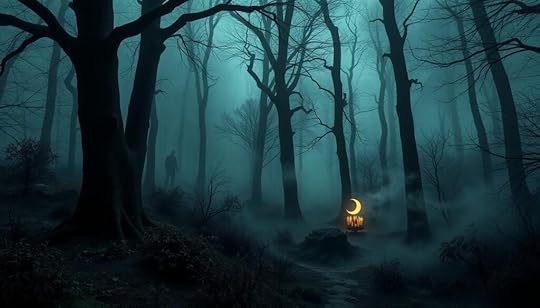
Supernatural beliefs trace their roots back to humanity’s early efforts to make sense of a chaotic existence. Across various cultures, people have developed myths and legends that explain natural phenomena, reduce fears associated with death, and forge connections with the spiritual realm. These stories often reflect the historical context of the periods in which they emerged, serving as cultural touchstones that resonate through time.
Psychologists argue that human psychology plays a crucial role in the formation of these beliefs. Aspects such as a hyperactive agency-detecting device (HADD) influence how individuals perceive the world, leading to a tendency to attribute purpose and intention to natural events. This cognitive predisposition can create a strong inclination toward supernatural explanations, further enriching existing narratives.
Research involving evolutionary perspectives offers insights into the origins of supernatural beliefs. Studies by notable psychologists indicate that elements of belief systems may be evolutionary by-products, designed to enhance group cohesion and cooperation. In this light, supernatural beliefs can be seen as adaptations that allowed early humans to thrive in social settings.
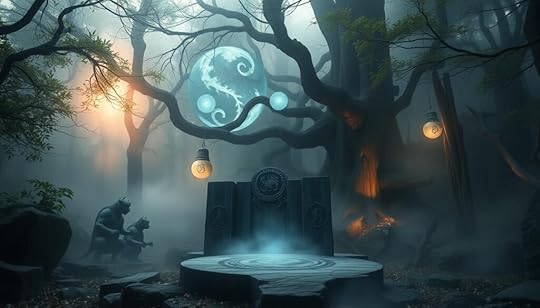
Understanding the origins of supernatural beliefs involves a multi-faceted exploration of cultural, psychological, and historical perspectives. Each element contributes to a rich tapestry of human experience, showing how past interpretations shape present beliefs and practices.
Minoan Civilization: Eerie Legends and MythsThe Minoan civilization, which flourished on the island of Crete from 3500 to 1100 BCE, is a fascinating blend of historical achievements and supernatural lore. This ancient culture has cultivated numerous eerie legends and myths that continue to intrigue modern audiences. The tales originating from this civilization, particularly those related to the Minotaur legend, highlight their unique approach to the unexplained and the divine.
The Legend of the Minotaur and the LabyrinthOne of the most famous stories from the Minoan civilization is the Minotaur legend, which tells of a creature that was half-man and half-bull. It resided in an elaborate labyrinth designed by Daedalus, a structure that some believe symbolizes a gateway to the supernatural. The legend reveals the darker aspects of human nature and speaks to the Minoans’ fascination with hybrid creatures, tying them to their rich lore surrounding the sacred bull. The bull-leaping ceremonies practiced by the Minoans may have had deeper meanings tied to this legend, representing the struggle between civilization and primal instincts.
Ghostly Tales from Ancient CreteThe haunted ancient ruins of Crete are steeped in ghostly tales that echo the beliefs of the Minoans. Many ancient sites, like the Dikteon Cave, were viewed as portals to the Underworld and significant in their religious practices. These sacred caves often served as burial sites and were associated with spirits of ancestors, enhancing the perception of ghosts roaming the land. The Minoans held reverence for nature deities and ancestor worship, creating a deep-rooted belief that the dead remained connected to the living world. As you explore these ancient ruins, you may encounter whispers of these spectral presences, reminding visitors of the past that still lingers in the shadows.
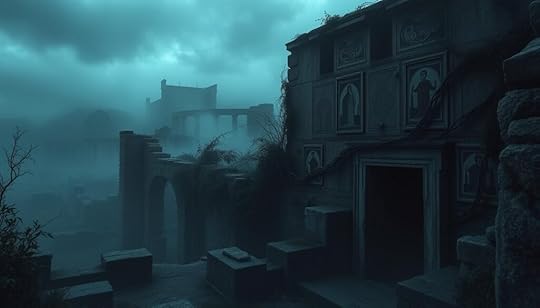
Ghosts hold a significant position in the realm of supernatural lore. These entities are often viewed as spirits of deceased humans or animals who remain tethered to the earthly realm due to unresolved issues or unfinished business. Their behavior reflects the experiences and circumstances from their lives, which makes some spirits potentially dangerous as they linger longer on Earth.
Common Ghostly EncountersMany individuals recount their own ghostly encounters in various settings, often describing eerie feelings, cold spots, or sudden changes in their environment. Some compelling examples include:
Apparitions appearing suddenly during quiet moments.Whispers that seem to come from nowhere in supposedly haunted locations.Objects moving independently, a common manifestation of poltergeist activity.These experiences align with frequent paranormal investigations, where ghost hunters seek to capture evidence of these entities, demonstrating that ghosts are among the most commonly reported phenomena across the globe.
The Connection Between Ghosts and Urban LegendsGhosts frequently intertwine with urban legends, creating captivating tales that can distort reality. Many of these legends function as cautionary tales embedded in cultural fears, showcasing societal anxieties about death, loss, and the unknown. Notable elements often found in these stories include:
Legends of haunted houses where victims fell to tragic circumstances.Tales of cursed objects believed to harbor vengeful spirits.Accounts of sightings in locations known for their grim histories.These narratives fuel curiosity while serving as reminders of past traumas, effectively bridging the gap between history and folklore. Ghosts, in this context, are more than mere spectral beings; they become symbols of collective cultural fears and supernatural intrigue.
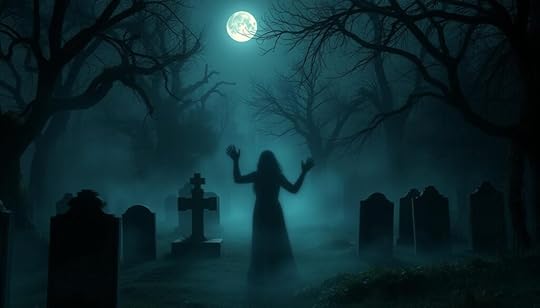
These classifications and stories highlight the multifaceted role ghosts play in supernatural lore, making the exploration of their influence both compelling and essential to understanding the human fascination with the afterlife.
Haunted Places: Exploring the UnknownThe fascination with haunted places often intertwines history, folklore, and the paranormal. You may find yourself intrigued by the eerie tales associated with famous haunted locations across the United States. From historic hotels to abandoned asylums, each site carries its own stories of spectral encounters and unsettling occurrences. The narratives shared by explorers and adventurers amplify the allure of these places, inviting paranormal investigations into their mysterious happenings.
Famous Haunted Locations Across the United StatesSeveral iconic locations in the U.S. have earned their reputation for ghostly phenomena. Notable sites include:
The Stanley Hotel in Colorado, renowned for its ghostly inhabitants.La Posada in Santa Fe, New Mexico, where the spirit of Julia Staab is said to linger.Winchester Mystery House in California, filled with oddities and tales of restless spirits.During paranormal investigations at these sites, enthusiasts often recount their own chilling experiences, adding depth to the legends surrounding these haunted places. You might learn about incidents like the eerie presence felt by Sir Ranulph Fiennes’ team during their 1980 expedition to Ryvingen Mountain. This event highlights how even in isolated environments, such as Antarctic huts, explorers have reported unsettling feelings of being watched.
The Science Behind Haunted ExperiencesWhile these stories capture the imagination, scientific explanations also offer insight into haunted experiences. Various studies have suggested that psychological factors can lead individuals to perceive an unexplained presence. Factors such as environmental influences and sensory deprivation often play a critical role.
Factors Influencing Haunted ExperiencesPotential EffectsIsolationIncreased feelings of loneliness or anxietyLow FrequenciesCan induce feelings of unease or fearDarknessHeightened awareness of surroundings, leading to paranoiaBooks like Ghostland: In Search of a Haunted Country provide fascinating insights into haunted places and narratives of paranormal encounters. With a growing interest in themes like dark tourism, where physical reminders of past tragedies are explored, the connection between societal legacies and ghost stories becomes increasingly evident. Ultimately, the blend of cultural perspectives around haunting experiences contributes to the continuing appeal of these famous haunted locations.
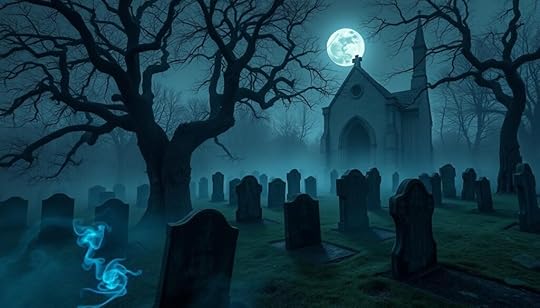
Paranormal activity refers to occurrences that are inexplicable by conventional means, drawing interest from both researchers and enthusiasts. These mystical events challenge your understanding of reality and often blur the lines of what science considers factual. Individual interpretations of paranormal activity can shape societal beliefs and provoke deeper inquiries into the unknown.
The success of films centered around paranormal activity, such as “Paranormal Activity,” released on September 25, 2009, highlights societal fascinations. This haunting film earned nearly $108 million in the U.S. market alone, garnering a total worldwide gross of $194.2 million. The filmmakers employed a unique approach by using a home video camera to enhance authenticity, making the supernatural elements more relatable for the audience.
The allure of paranormal activity often leads to a variety of interpretations of supernatural events. These interpretations can stem from personal experiences or popular culture influence. The portrayal of supernatural events in media can spark public interest, encouraging exploration beyond established scientific explanations. Often dismissed, these experiences invite individuals to reconsider the boundaries of their beliefs.
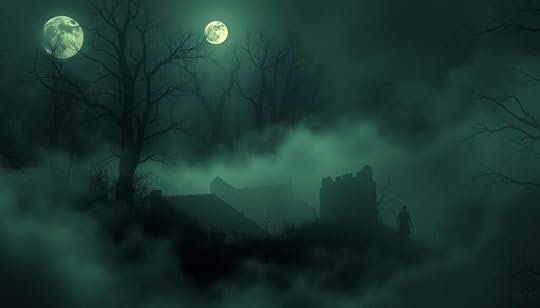
This fascinating field continues to evolve as more people report their encounters, inviting discussions that delve into metaphysical realms. Analyzing these interpretations not only broadens understanding but also enriches dialogue about life’s mysterious aspects.
Film TitleRelease DateU.S. Box Office EarningsWorldwide Box Office EarningsBudgetParanormal ActivitySeptember 25, 2009$108 million$194.2 million$15,000 + $200,000 (post-production)Mythical Creatures in Supernatural LoreMythical creatures have fascinated people for centuries, serving as symbols and reflections of our deepest fears and beliefs. These enigmatic beings often populate folklore traditions across various cultures, embodying the essence of cultural mythology. They reveal insights into human nature and societal values, echoing historical contexts and inexplicable phenomena.
Folklores of Famous Mythical BeingsNumerous mythical creatures emerge from folklore traditions worldwide, their stories often intricately woven into the narrative fabric of cultural mythology. For instance, the Wendigo from Algonquian lore represents the dangers of greed and starvation. Other notable beings, like banshees and rakshasas, illustrate the diverse portrayal of supernatural entities throughout the seasons of popular media. Many of these creatures, depicted vividly on screen, showcase their unique traits through various actors, providing a rich visual experience.
The Legacy of Supernatural Creatures in CultureThe legacy of these supernatural beings significantly impacts how they shape cultural mythology. Different occupations and affiliations attributed to mythical creatures not only enhance their narratives but also offer insights into the moral and ethical struggles faced in our lives. These representations echo through the ages, leaving a lasting impression on art, literature, and contemporary storytelling. This endurance of mythical creatures in various regions, including Africa and Europe, emphasizes the universal appeal and deep-rooted nature of these tales.
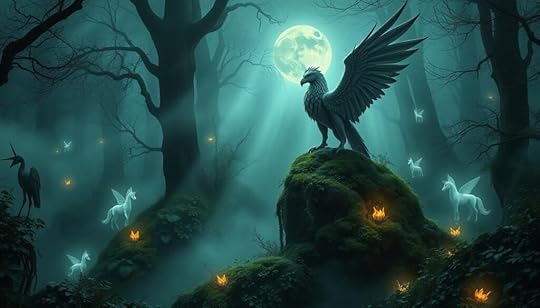
Urban legends offer a captivating glimpse into the blend of *fact vs. fiction*, often emerging from real-life events and evolving into extraordinary tales over time. These stories become part of *cultural narratives*, serving various functions, from cautionary tales to explanations of everyday occurrences. Analyzing urban legends reveals how they resonate profoundly within different communities, reflecting societal fears and collective beliefs.
For instance, the prevalence of certain urban legends, such as the “Babysitter and the Man Upstairs” and “The Vanishing Hitchhiker,” illustrates *suburban fears* regarding safety and vulnerability. These tales often fuel anxieties, as they speak to deeply ingrained concerns about trust and security in one’s environment. Researchers have found a weak to moderate association between urban legends and paranormal beliefs, highlighting that these stories can shape and reflect the way groups view the unknown.

Social media significantly amplifies the reach of urban legends, allowing them to spread rapidly and gain credibility through shares and likes. Algorithms often create echo chambers, exposing users to information that aligns with their established beliefs, which further strengthens the appeal of these narratives. This environment fosters an atmosphere where *fact vs. fiction* becomes blurred, often leading to irrational behavior and societal consequences.
Belief in urban legends can serve as a coping mechanism for dealing with an unpredictable world. They provide a sense of control by framing complex realities into easily digestible stories. Encouraging critical thinking through resources dedicated to *fact-checking* helps mitigate the spread of misinformation, promoting a more nuanced understanding of these fascinating *cultural narratives*. Through critical engagement, individuals gain the tools to discern the lines separating myth from reality, enhancing their understanding of urban legends in society.
Folklore Traditions: Connecting Culture and Supernatural BeliefsFolklore traditions play an essential role in linking cultural significance with supernatural beliefs across diverse societies. These narratives not only express community identity but also offer insight into how cultures perceive and interpret the supernatural. By exploring different global practices, one can uncover the rich tapestry of stories that reflect a society’s values and existential questions.
The Role of Folklore in Understanding Supernatural LoreEngaging with folklore traditions provides a deeper understanding of supernatural lore. In regions like Japan, for instance, the yōkai culture—encompassing entities such as bakemono, mononoke, and yurei—illustrates how transformations and ghostly figures shape social beliefs. The Japanese supernatural exhibition at the Art Gallery of NSW showcases this cultural significance, spanning centuries from the Edo Period to contemporary interpretations. Key masters of the Ukiyo-e Period, like Katsushika Hokusai, further enrich this understanding through their artistic expressions.
Regional Variations in Folklore TraditionsFolklore traditions vary significantly by region, each offering unique narratives and practices. The Western Himalayas serve as an intriguing example, where a combination of pre-Brahmanical, Brahmanical, and Buddhist beliefs creates a complex religious environment. The local population interacts with both benevolent and malevolent spirits, reflecting an animistic worldview. This connection is evident in magical practices and rituals conducted by village intermediaries known as Gur, bridging the gap between the devotees and their deities.
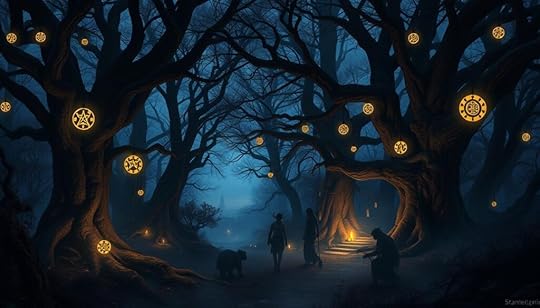
Supernatural beings have significantly shaped various aspects of culture throughout history. These entities, often entwined with fear and reverence, play a crucial role in defining collective beliefs and identities. In mythical studies, scholars explore how the presence of supernatural beings in folklore, literature, and art reflects societal values. The cultural significance of these beings goes beyond mere stories; they embody shared fears, moral lessons, and creativity.
Throughout different civilizations, supernatural beings appear in countless myths, symbolizing natural forces or human qualities. From deities of ancient religions to modern fictional characters, such entities influence social norms and traditions. For instance, a deep connection exists between supernatural beings and religious beliefs, revealing their role in shaping spiritual understandings across cultures.
In examining the depth of supernatural lore, mythical studies illuminate how cultures have constructed narratives to explain the inexplicable. These stories often serve to bond communities, providing a common heritage and shared experiences. Analyzing these narratives helps unveil the underlying values and concerns of societies, highlighting the enduring impact of supernatural beings on cultural evolution.
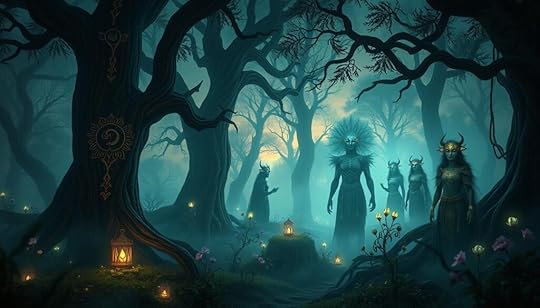
The modern interest in supernatural lore has found a vibrant expression through various media platforms. Television shows and films have seamlessly integrated themes of the paranormal, drawing viewers into narratives that extend beyond the everyday. A prime example is Supernatural, which aired for an impressive 15 seasons from 2005 to 2020. This show not only captivated audiences but also became the longest-running American live-action fantasy series, with a loyal fanbase that remains active today.
By utilizing social media platforms, enthusiasts are now engaging in contemporary explorations of supernatural phenomena, sharing experiences and theories. The Supernatural subreddit, with 118k subscribers, is a testament to this growing community, showcasing a wealth of fanworks. In addition, sites like Archive of Our Own (AO3) exhibit a remarkable increase in fan-generated content, with over 92,000 works inspired by the series.
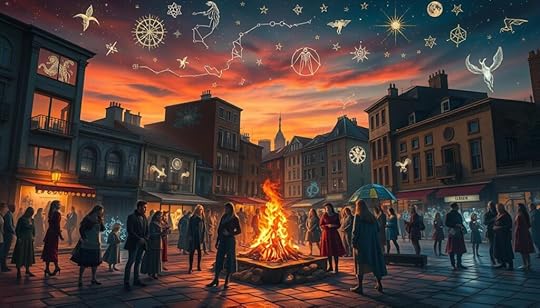
Social movements and the complexity of modern society contribute significantly to the evolution of supernatural beliefs. Research indicates that supernatural explanations have been prevalent across varying cultures and histories, effectively addressing natural phenomena such as disease and disasters. The intertwining of supernatural elements with day-to-day life continues to spark curiosity and inquiry into age-old mysteries that still resonate today. As more people seek understanding within a chaotic world, the allure of the supernatural remains strong, fostering both intrigue and community.
Why People Are Drawn to the SupernaturalThe fascination with the supernatural has captivated individuals for centuries. This intrigue often stems from a deep-seated search for meaning in a chaotic world. Many turn to supernatural beliefs to find structure and answers in life, reflecting both psychological and spiritual dimensions. These beliefs provide a lens through which you can explore your existence and the mysteries surrounding it.
The Search for Meaning in a Chaotic WorldYour desire for meaning often amplifies in times of uncertainty. Throughout history, supernatural explanations have surfaced as comforting narratives that help make sense of complex life events. For instance, the analysis of more than 100 cultures revealed that a remarkable 92% attributed diseases to supernatural causes, demonstrating an innate inclination to find connections and explanations in the unexplainable.
Spiritual Significance and the AfterlifeThe pursuit of spiritual insights plays a pivotal role in this curiosity. Many find hope within tales of the afterlife and spiritual realms, offering comfort during difficult times. In literature and media, supernatural themes often allow writers to delve into significant societal issues while encouraging you to think critically about your beliefs. This reflects a broader trend where the supernatural serves as a vehicle for existential questioning, often leading to new ideas and perspectives.
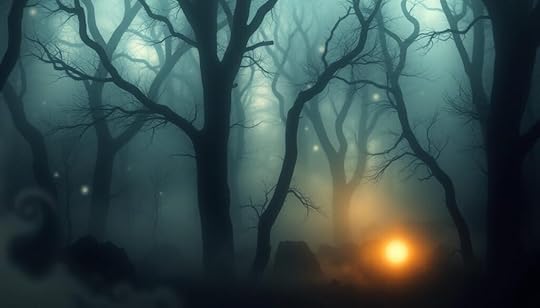
The allure of supernatural narratives thrives on the thrilling combination of fear and fun. This interplay captivates audiences, sparking adrenaline while providing a safe distance from real danger. The rich tapestry of gothic literature weaves intricate tales that stir emotional responses. As readers delve into these eerie worlds, they encounter creatures and situations that challenge their perceptions of reality.
The Role of Gothic Literature in Shaping Supernatural InsightsGothic literature serves as a crucial lens for examining our fears and fascinations. Notable works delve into dark themes, reflecting societal anxieties and exploring the human condition. The effectiveness of these narratives can be linked to several underlying psychological factors:
Tension: The buildup of suspense intensifies emotional engagement.Relevance: Themes often resonate with personal or cultural experiences.Unrealism: The fantastical elements allow for detachment from real-life fears.Research indicates that roughly 10% of the population actively seeks the adrenaline rush tied to the horror genre. This segment finds pleasure in the physical and emotional release that follows moments of fright. 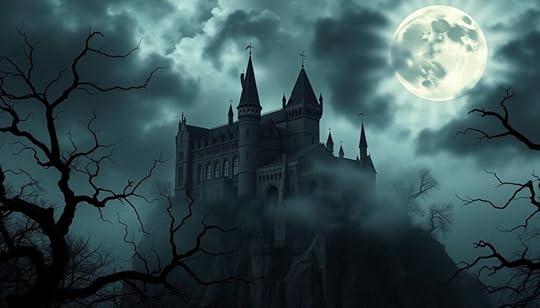
Visitors to haunted attractions or readers of gothic novels often share common emotions. Young children, with their limited grasp of reality, engage deeply with spooky themes, while teens and young adults revel in slasher films and supernatural stories. Themes of fear, such as the spectral horror of vampires and the dread of zombies, have origins grounded in various cultures, reflecting ancient fears reinterpreted for modern audiences. These supernatural narratives do not merely entertain; they echo existential concerns, like the pervasive fear of death and societal anxieties about technology.
Supernatural stories continue to have relevance. Their enduring nature suggests a collective yearning for escape and contemplation of life’s mysteries. Amidst their eerie allure, readers find solace in understanding their own fears, navigating through the unsettling landscapes crafted by gothic literature.
Psychological FactorsDescriptionTensionBuilds suspense and emotional engagement.RelevanceConnects with personal or cultural experiences.UnrealismEncourages detachment from real-world fears.The Evolution of Supernatural Lore in Modern TimesThe landscape of supernatural lore continues to evolve, shaped by technological advancements and societal changes. As you navigate this dynamic world, the impact of social media emerges as a significant force, influencing beliefs and discussions surrounding the supernatural. Platforms like Instagram and Twitter enable individuals to share experiences, report sightings, and create online communities dedicated to these fascinating subjects. This interconnectedness fosters both engagement and skepticism concerning old and new legends.
The Impact of Social Media on Belief SystemsWithin this digital realm, supernatural stories circulate rapidly, capturing public imagination. Many users leverage social media to explore concepts such as ghost hunting, urban legends, and mythical creatures, broadening the audience’s engagement with existing folklore while introducing contemporary interpretations. The ability to share multimedia content enhances these discussions, letting participants deepen their understanding of supernatural lore while challenging traditional narratives.
Modern Representations of Supernatural BeingsContemporary representations of supernatural beings in film and literature showcase a blend of traditional lore and modern influences. Popular television series like *Supernatural* have created a resonant mythos, featuring characters who reflect today’s society. The Winchester brothers, for example, represent a new interpretation of heroic archetypes, blending emotional depth and inner conflict to resonate with viewers. Their journey illustrates the cultural evolution of supernatural beliefs and the myriad forms these stories can take.
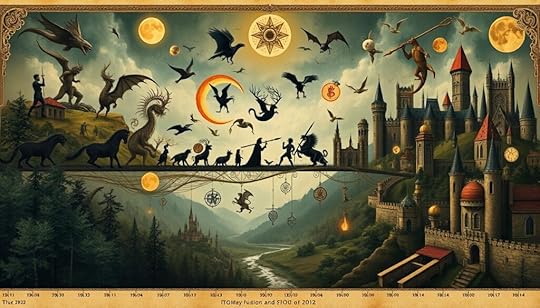
The influence of social media extends beyond personal accounts. Each character, from Sam and Dean to Castiel and Jo Harvelle, engages audiences while challenging traditional roles within the narrative. As the stories adapt, they reflect changing societal values, showcasing complexities of gender, morality, and heroism. The evolution of supernatural lore manifests through these modern interpretations, proving that the fascination with the mysterious and unknown remains deeply rooted within the global consciousness.
AspectTraditional BeliefsModern RepresentationsCharacter ArchetypesTraditional HeroesComplex Characters (e.g., Dean as an anti-hero)Supernatural EntitiesFolklore CreaturesMythical Beings in Media (e.g., Slender Man)Gender RolesDamsels in DistressEmpowered Female Heroes (e.g., Jo Harvelle)Storytelling MethodsOral TraditionsSocial Media and Digital NarrativesCommunity EngagementLocal Folklore CirclesGlobal Online CommunitiesConclusionThe exploration of supernatural lore reveals the depths of humanity’s fascination with the mysterious and the unknown. Throughout this article, we’ve delved into various aspects that underscore the conclusions on supernatural lore, highlighting its lasting impact across various cultures and historical periods. We’ve seen how themes of fear, myth, and the quest for understanding intertwine, shaping not only individual identities but also collective beliefs.
As we consider the enduring legacy of supernatural stories, such as the beloved series “Supernatural,” which captivated audiences for nearly two decades, it becomes clear that these narratives resonate deeply. They reflect our shared efforts to negotiate meaning amidst chaos, embodying our intrinsic curiosity about death, the afterlife, and what lies beyond. The characters’ journeys and their ultimate fates leave indelible impressions, reinforcing the idea that these tales serve vital roles in our psychological and cultural landscapes.
Ultimately, the mysteries of supernatural lore offer insights into both personal and societal narratives. They invite you to question, to dream, and to explore beyond the confines of reality. As we continue to engage with supernatural elements in literature, film, and folklore, their significance presents opportunities for growth and understanding in a world that often feels unpredictable and overwhelming.
FAQWhat is supernatural lore?Supernatural lore encompasses the tales, beliefs, and cultural traditions surrounding ghosts, myths, and mythical creatures. It provides insight into humanity’s attempts to understand the unknown, explaining natural phenomena and addressing fears of death.
Why do different cultures have their own supernatural beliefs?Supernatural beliefs arise from ancient roots as ways to explain life’s uncertainties. Different cultures develop unique myths and legends that reflect their values, fears, and attempts to connect with spiritual realms.
What role do ghosts play in supernatural narratives?Ghosts are central to many supernatural stories, featuring in personal encounters and urban legends. They often symbolize cultural anxieties surrounding death, serving as cautionary tales that blend fear and curiosity.
Can you provide examples of famous haunted places?Some well-known haunted locations include the Stanley Hotel and the Winchester Mystery House. These sites are frequently explored for their ghostly phenomena and the fascinating stories that accompany them.
What is paranormal activity?Paranormal activity refers to unexplained events that defy conventional understanding. These occurrences have spurred research and personal interpretation, contributing to our understanding of reality and the unknown.
What are some mythical creatures found in folklore?Many mythical creatures, such as Bigfoot and the Loch Ness Monster, are integral to folklore. They reflect historical fears and societal values, highlighting the human inclination to explain life’s mysteries.
How do urban legends differ from traditional folklore?Urban legends blend fact and fiction, often rooted in real-life occurrences that evolve into larger-than-life stories. They reveal societal fears and collective psyche, while traditional folklore usually emphasizes cultural storytelling and identity.
What is the significance of folklore in understanding supernatural beliefs?Folklore traditions help shape community identity and shared values. They preserve regional interpretations of supernatural narratives, showcasing how different cultures have addressed and understood the supernatural over time.
How do supernatural beings influence art and literature?Supernatural beings impact literature and traditions by embodying fear and reverence. They help shape collective identities and beliefs, enriching our understanding of cultural narratives and storytelling.
How has interest in supernatural lore changed in modern times?In contemporary society, interest in supernatural lore has surged due to media, popular culture, and social movements, with shows, films, and online platforms capturing the imagination and fostering renewed explorations of the paranormal.
Why do people feel drawn to the supernatural?Many individuals turn to supernatural lore as they search for meaning in a chaotic world. These beliefs often provide comfort, hope, and connections with broader existential questions regarding life and the afterlife.
What role does fear play in supernatural storytelling?Fear blends with fun in supernatural stories, invoking emotional responses that engage audiences. Gothic literature, in particular, has shaped cultural perceptions of the supernatural, resonating through time and popular culture.
How does social media affect beliefs in the supernatural?Social media fosters engagement with supernatural lore, allowing enthusiasts and skeptics to share experiences and interpretations. This interaction impacts belief systems, making supernatural discussions more accessible and widespread.
What are some examples of contemporary representations of supernatural beings?Modern film and literature often reinterpret traditional supernatural beings to address contemporary societal issues, reflecting evolving anxieties and cultural narratives about the unknown.
Exploring Mysterious Monsters: Secrets Unveiled
As children, many of us eagerly gathered around campfires, our imaginations ignited by tales of mysterious monsters and legendary creatures lurking just beyond the shadows. Those moments weren’t just about fear; they were about connection—families sharing thrills, friends huddling together, and the unforgettable mix of wonder and curiosity that these folklore tales inspire. Even as adults, the allure of the unknown continues to captivate our minds, drawing us into a world teeming with unexplained phenomena. Have you ever experienced that shiver of excitement at the thought of a cryptid slipping quietly through the trees, or felt a rush as you ponder the existence of creatures that defy explanation? This exploration of the realm of mysterious monsters promises to unveil the secrets that lie behind our most cherished myths and legends, inviting you to embark on a fascinating journey through time and imagination.
Key TakeawaysMysterious monsters, like the Chupacabra and Bigfoot, have captivated audiences for decades.The lore surrounding legendary creatures spans cultures, influencing storytelling and traditions worldwide.Encounters with the Yeti and Thunderbird showcase the rich tapestry of *folklore tales* in various cultures.The fascination with aquatic creatures, such as the Loch Ness Monster, persists in modern culture.Africa’s Congo Basin holds some of the most enigmatic myths, including the Mokele-Mbembe and the Mahamba.The Allure of Mysterious MonstersThe enchantment surrounding mysterious monsters captures the imagination, allowing you to explore the depths of cultural significance across diverse societies. These legendary beings serve not only as fascinating subjects of tales but also embody deeper human fears and curiosities. Each culture contributes unique stories, resonating through time and space, merging realities and fantasies in a captivating dance.
Consider the legends of the Ozarks, where local wildlife inspires numerous sightings of myths. The tales evolve like the game of telephone, transforming as they are handed down generations. Cryptid legends can become local treasures, such as Momo, spotted in Louisiana, Missouri, in the 1970s, which sparked national interest and boosted tourism in the town.
The folklore of the Ozark Howler, a creature characterized by glowing eyes and horn-like features, illustrates how deep-rooted these narratives can become. With reports dating back to the 1950s and peaks in sightings between 2005 and 2010, this legendary being remains a beacon of regional folklore.
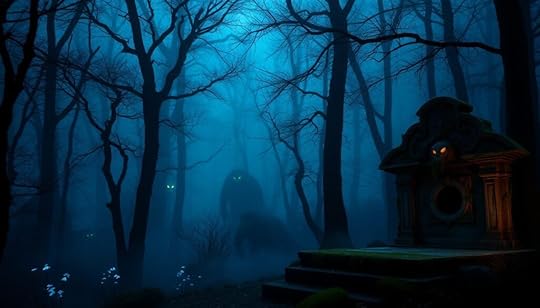
Encounters with creatures like the Enfield Monster also highlight enduring myths. From its unexpected sightings in a small farming community to the media frenzy that followed, such occurrences reveal the intersection of local legends and broad cultural narratives. Communities often rally around these tales, preserving their cultural significance and asserting their place in a collective memory.
The fascination with these beings illustrates a deeper quest for understanding the complexities of human emotion. Monsters often reflect our internal struggles, fears, and desires, creating a unique blend of reality and myth that continues to inspire awe in every listener.
Mythical Beasts: A Glimpse into HistoryThroughout history, mythical creatures have captured the human imagination, echoing through ancient tales and civilization myths. These legendary beasts go beyond mere folklore; they reflect the societal values, fears, and aspirations of their times. From the fearsome Medusa of Greek mythology, with her serpentine hair, to the powerful Minotaur lurking in the labyrinth, each creature tells a unique story rooted in the culture that birthed it.
The role of cultural artifacts in preserving these myths is significant. Manuscripts, sculptures, and artwork often depict legendary animals, serving as reminders of the stories that shape our understanding of the world. The Cyclopes, one-eyed giants from Greek lore, symbolize both strength and vulnerability, illustrating how these creatures often embody dualities within us. Medieval bestiaries further enriched the tapestry of mythical beings, blending real and fantastic creatures, imparting moral lessons along the way.
In the Americas, numerous sightings and legends have arisen over the years. For example, in Mobile, Alabama, fifty people reported encountering a half-wolf, half-woman creature in 1971. The well-known Mogollon Monster in Arizona, a towering seven-foot figure, conveys a different type of fear and intrigue. The White River Monster, often associated with the Loch Ness Monster, has been seen in the Arkansas River since its first recorded sighting in 1915. Reports about this cousin of mythical creatures have persisted into modern times, demonstrating a lasting fascination with legendary beasts.

These encounters not only showcase mythical beasts but also connect back to human culture. The stories surrounding the Fouke Monster and Rougarou reflect regional folklore that helps build community identity. Each of these creatures embodies regional characteristics, fears, and legends, weaving them into the fabric of social consciousness.
As you explore these ancient tales, keep in mind how they have shaped human understanding and influenced cultural artifacts throughout history. The allure of mythical beasts can offer a window into the beliefs and stories that have persisted through generations, uniting communities around shared wonder and mystery.
CreatureOriginKey CharacteristicsFirst Recorded SightingMedusaGreek MythologyFemale monster, snakes for hairUnknownMinotaurGreek MythologyHybrid of man and bullUnknownFouke MonsterArkansas, USA10 feet tall, 800 pounds1946White River MonsterArkansas, USACousin of Loch Ness Monster1915Mogollon MonsterArizona, USAApe-like, 7 feet tallUnknownMysterious Monsters of the AmericasTwo cryptids dominate the lore of North American folklore, capturing the imaginations of people across the continent: the Chupacabra and Bigfoot. These creatures inspire mystery and fear through their respective tales of unexplained encounters.
Chupacabra: Terror in the TropicsThe Chupacabra has become a terrifying figure in folklore, notorious for preying on livestock. Reports and sightings, primarily from Puerto Rico and Mexico, depict it as a creature resembling a reptile with spikes along its back. Witnesses recount nights filled with nocturnal raids where goats and sheep fell victim to this cryptid. Emotional responses range from disbelief to sheer terror as farmers recount how they found their animals drained of blood.
Bigfoot: The Elusive Giant of North AmericaBigfoot, also known as Sasquatch, stands as a legendary figure synonymous with North American wilderness. Sightings span across numerous states, with reports highlighting the creature’s massive size, often described as being anywhere from five to over ten feet tall. Intriguing encounters with Bigfoot often include detailed descriptions of its thick, dark fur and human-like footprints. The creature holds a significant place in the collective consciousness, inspiring documentaries and discussions about its existence, with “Monsters and Mysteries in America” detailing such legends across its three seasons. The series presented a rich tapestry of stories about these cryptids, including other fascinating creatures.
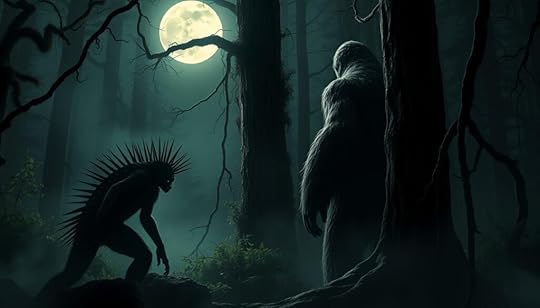
Delving into the stories of aquatic creatures reveals a captivating world of marine mysteries and legends of the deep. Tales of the Loch Ness Monster and the giant squid have kept both enthusiasts and skeptics intrigued for generations. These aquatic cryptids embody the fear and fascination humanity holds for the unknown depths of the ocean.
Loch Ness Monster: Scotland’s Aquatic EnigmaThe Loch Ness Monster, affectionately known as Nessie, is perhaps the most famous of sea monsters. Reported sightings date back centuries, contributing to the allure surrounding this mythical creature. Locals boast a cultural heritage intertwined with this enigma, as the monster continues to attract tourists to the Scottish Highlands. Your imagination might wander to ancient waters as you consider what lies beneath the surface of Loch Ness, where accounts of Nessie evoke an enduring sense of mystery.
Giant Squid: Terror of the DeepContrary to many beliefs, the giant squid is no mere figment of imagination. Japanese scientists verified the existence of this colossal creature, with females reaching lengths over fifty feet. This sea monster previously summoned fear and awe solely through tales. Its real presence underscores a relationship between myth and reality, reminding you that the depths of the ocean remain largely unexplored. From the grotesque to the unknown, the giant squid epitomizes the thrill of oceanic exploration.
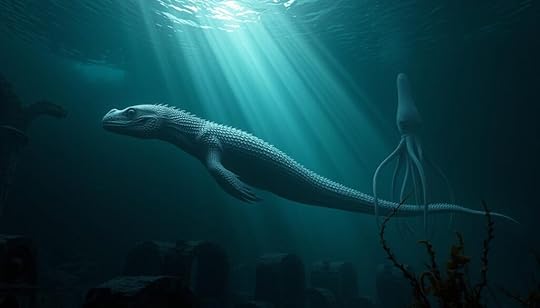
Diverse myths bloom within the realm of flying cryptids, showcasing fascinating creatures that capture human imagination. The Thunderbird and Mothman provide striking examples of how these majestic beings occupy a significant place in legendary lore and cultural significance. Both creatures reveal the intricate bond between nature, mythology, and human experience throughout various generations.
Thunderbird: A Native American WonderThe Thunderbird, revered in Native American culture, embodies power and control over nature. This colossal bird is said to summon storms with the flapping of its wings, showcasing a crucial connection between the Plains peoples and their environment. Often depicted in art and storytelling, the Thunderbird represents strength and resilience, serving as a guardian spirit for numerous tribes. When exploring the cultural significance of this legend, one sees how deeply intertwined it is with the respect for nature and its abilities.
Mothman: Guardian of Point Pleasant?Emerging from the foggy realms of modern folklore, the Mothman captivates the curiosity of onlookers in Point Pleasant, West Virginia. Witnesses describe this cryptid as a towering figure with enormous wings and glowing red eyes. Reports of Mothman sightings often coincide with unsettling events, suggesting a potential harbinger of doom. This dual nature of the Mothman—both guardian and omen—fuels discussions around its legendary lore, illustrating society’s fascination with mysterious figures that traverse the skies.
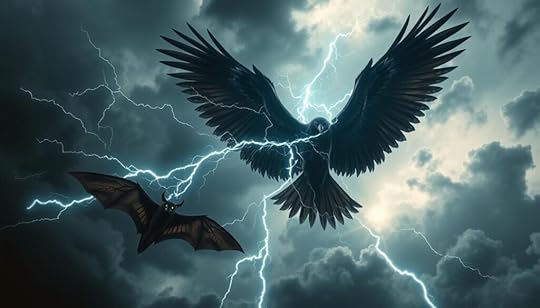
The stories of these flying cryptids, Thunderbird and Mothman, enrich our understanding of legendary lore. As you delve into their tales, consider how such creatures continue to inspire awe and curiosity while shaping the cultural narratives passed down through generations.
Exploring the Mysteries of the HimalayasThe Yeti, often celebrated in tales and lore, serves as a prominent figure in the tapestry of Himalayan mysteries. Known as the Abominable Snowman, this legendary creature embodies the allure of unexplored regions, captivating adventurers and researchers alike. Sightings and stories surrounding the Yeti reflect cultural traditions and local folklore, which have influenced countless expeditions in pursuit of this cryptid legend.
Yeti: Guardian of the PeaksEyewitness accounts describe the Yeti as a tall, hairy creature, showcasing immense strength. The fascination with this beast grew significantly after Sir Edmund Hillary discovered giant footprints on Mount Everest in 1953, igniting interest in its potential existence. Despite numerous pursuits, definitive evidence remains elusive. A series of DNA analyses on alleged Yeti samples revealed that they predominantly matched the genetic profiles of known bear species, like the Asian black bear and Himalayan brown bear.
The myth of the Yeti extends beyond mere folklore. It deeply influences local economies, particularly in areas like Mechuka Valley in Arunachal Pradesh, where tourism thrives off the legend. This connection illustrates how cryptid legends can enrich cultural narratives while fostering economic opportunity.
The origins of the Yeti legend trace back to ancient times, influenced by the Bön faith, which revered a protective entity known as the Glacier Being. Local rituals included sacrifices, showcasing the creature’s importance within religious practices. The duality of the Yeti’s nature, often seen as both a guardian spirit and a dangerous foe, highlights the intricate balance within Himalayan mythology.
For many, the quest to experience the Yeti’s world continues to symbolize humanity’s desire to uncover mysteries of the wild. Shadowed by the magnificence of peaks like Mount Kailash and Kanchenjunga, this enigmatic guardian of the Himalayas endures in collective imagination.

The mysteries of the Congo Basin hold a wealth of intrigue, especially surrounding the legendary Mokele-Mbembe. Seen as a relic from the age of ancient creatures, this cryptid captures the imagination of adventurers and enthusiasts alike. The stories told by local tribes provide a glimpse into a world where cryptid sightings and African legends intertwine seamlessly.
Mokele-Mbembe, often described as a creature similar to a sauropod, has garnered attention since the early 1900s. In 1909, Carl Hagenbeck recorded reports of a bizarre half-elephant, half-dragon creature emerging from what is now Zimbabwe. This sparked a surge of interest in cryptids inhabiting the deep jungles of Africa. Subsequent explorations have intensified fascination, particularly German explorer Ludwig Freiherr von Stein zu Lausnitz’s expedition in 1913. He reported detailed accounts from locals referencing a monster residing in the Congo River.
Over the years, scientists and explorers have attempted to substantiate the existence of this creature. Notably, in 1981, biologist Dr. Roy Mackal led a team into the region to interview eyewitnesses. Despite their extensive efforts, they did not find concrete evidence. Congolese zoologist Marcellin Agnagna claimed to have captured footage of the Mokele-Mbembe during this time, though the results were ultimately disappointing when the film failed to develop.
These tales highlight the rich tapestry of African legends, reinforcing the belief that ancient creatures might still roam unexplored territories. While scientists typically classify these accounts as hoaxes or misidentifications of known animals, the possibility of undiscovered wildlife continues to entice many.
Listed below is a comparative overview of reported characteristics attributed to Mokele-Mbembe:
AttributeDetailsPossible Length5 to 10 meters (16 to 32 feet)Largest Reported LengthUp to 75 feetLength of Neck1.6 to 3.3 meters (5 to 10 feet)Length of Tail1.6 to 3.3 meters (5 to 10 feet)Diameter of Tracks30 to 90 centimeters (1 to 3 feet)Distance Between Tracks2.1 to 2.4 meters (7 to 8 feet)Reported HabitatPools and swamps adjacent to riversReported SoundSnorts, howls, roars, rumbles, growlsDespite the skepticism surrounding the validity of these cryptid sightings, stories of the Mokele-Mbembe continue to thrive, embodying the deep-seated human fascination with the unexplained and the allure of the unknown. Within the lush jungles and waterways of the Congo Basin, such legends remind us of the possibility that ancient creatures may still walk among us, concealed within the shadows.
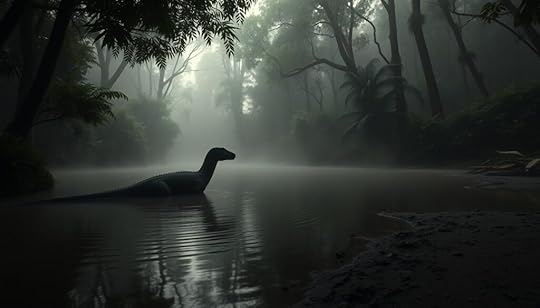
The legends of werewolves and vampires are deeply embedded in mythology and folklore, revealing fascinating aspects of human desires, fears, and cultural anxieties. These supernatural beings have evolved over centuries, captivating audiences through stories and literature that examine the dualities of humanity and the mysteries lurking within the dark corners of our imagination.
Werewolves: The Beast WithinWerewolves represent the struggle between man and beast, embodying primal instincts and fears of losing control. The idea of transformation into a wolf during the full moon reflects anxiety about the savagery lurking beneath the surface of civilization. Different cultures portray werewolves in varied ways, such as the Vârcolac from Romanian folklore, showcasing a human’s ability to shift between forms. In some narratives, like that of the pricolici, these creatures emerge as undead souls with monstrous behaviors, blurring the lines between myth and reality.
Vampires: Immortal Beings of the NightVampire lore intertwines themes of seduction, mortality, and darkness, offering a glimpse into humanity’s fascination with immortality. Variations like the Moroi exhibit traits of both the living and the undead, embodying complex narratives surrounding power and desire. Across cultures, different mythological figures represent this supernatural being; for instance, the Jiangshi in Chinese folklore and the Muroni in Romanian tales highlight regional interpretations and unique behaviors of these nighttime predators. The blend of allure and danger keeps the legend alive, intensifying the enigmatic presence of vampires in our cultural consciousness.
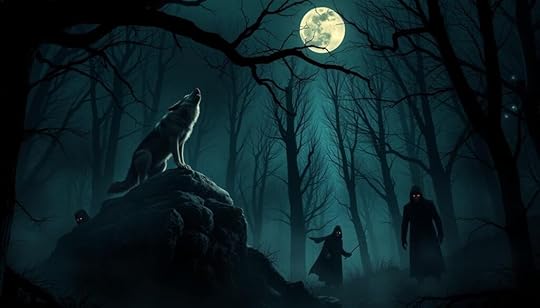
Dragons epitomize the mystical and powerful realms of mythology, captivating your imagination with their grandeur and duality. These legendary beings appear in various cultural narratives, often reflecting values and lessons unique to their societies. While some cultures honor dragons as symbols of prosperity and harmony, others portray them as fearsome foes, guarding treasures and wielding chaos.
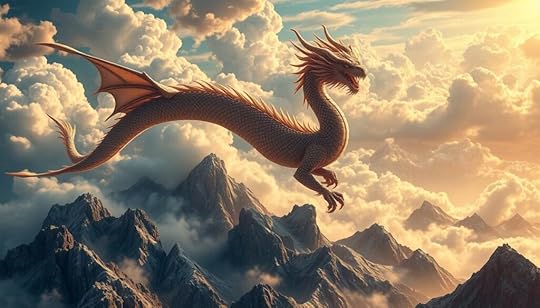
In Chinese mythology, dragons serve as auspicious creatures, embodying good luck and prosperity. Those born in the Year of the Dragon are believed to possess remarkable leadership qualities. The tradition of dragon boat racing, with roots over 2000 years old, showcases the cultural significance of these fire-breathing creatures. Teams paddle long boats designed like dragons, fostering camaraderie and celebration during festivals.
Imperial China reserved dragon motifs for the royal family, underlining their association with authority and supremacy. This symbolism extends to the balance between yin and yang, illustrating how opposing forces coexist. In contrast, Western dragons often symbolize power and chaos, acting as adversaries in legendary tales, reflecting humanity’s struggle with nature’s raw power.
This diversity in representation is evident through various global myths. The celestial baku from Japanese folklore, with its eclectic animal features, differs drastically from the amarok, a solitary wolf from Inuit tales. Legends like the indrik and the ghostly bake-kujira highlight the wide-ranging portrayal of mythical creatures, showcasing their unique traits and cultural relevance.
CultureDragon TypeSymbolismChineseBenevolentProsperity, HarmonyEuropeanFearsomeChaos, Guarding TreasuresJapaneseBakuProtection, DreamsInuitAmarokStrength, SolitudeRussianIndrikPower, MystiqueDragons remain prominent in contemporary culture through literature and multimedia, merging Eastern and Western influences. Celebrations like the Chinese New Year and dragon boat festivals honor these majestic beings, reinforcing their enduring legacy across generations. Dragging you into the realm of fantasy, dragons continue to be depicted in various formats, from illustrations to animations, forever enriching our collective storytelling landscape.
The Psychology Behind Belief in MysteriesUnderstanding the psychology behind belief in mysterious monsters reveals much about human nature. Factors influenced by human psychology, such as cognitive biases and a desire for patterns, lead individuals to embrace myths and legends. The appeal of the unknown often stems from the innate fear of the unknown, which drives people to seek explanations even for the most fantastical creatures.
Consider the data from various studies that highlight belief systems in society. For instance, a 2006 study found that 40% of college students believed in psychics, haunted locations, and other supernatural ideas. This statistic underscores how prevalent these beliefs are among young adults, suggesting a deep-seated curiosity and perhaps a longing for connection beyond the mundane world.
Additionally, correlations exist between religious and paranormal beliefs. A 2004 survey conducted by researchers at Baylor University showed that individuals with strong religious beliefs were generally less inclined to entertain ideas related to paranormal phenomena. In contrast, those who diverged from traditional religious doctrine were more inclined to explore concepts like reincarnation and UFOs.
The realm of cryptozoology exemplifies how unexplained occurrences can lead to a strong belief in creatures like Bigfoot or the Loch Ness Monster. Many enthusiasts may display skepticism towards mainstream science, as indicated by research on the anti-scientific tones prevalent within parts of the cryptozoological community. This conflict between traditional scientific inquiry and the fascination with the mystical reflects a broader societal struggle to find meaning in unexplained phenomena.
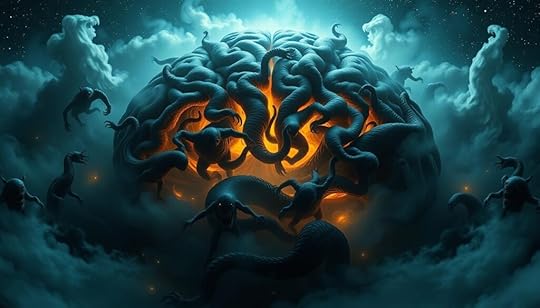
Beneath the surface of cryptids are the values and cultural identity they represent. Myths and legends serve as conduits for communal storytelling, reinforcing shared values and experiences. The enduring allure of these tales taps into collective fears and fascinations, creating a tapestry of beliefs that persist across generations and geographical boundaries.
Ultimately, the dynamic interplay between human psychology, belief systems, and the supernatural fosters an environment ripe for believing in mysteries. Each legend adds another layer to the intricate narrative we weave about our world, challenging our understanding while also providing comfort in chaos.
The Intersection of Science and Folklore TalesThe world of cryptids intertwines with both science and mythology, presenting a unique platform for exploration and debate. Individuals often turn to cryptozoology, the study of hidden creatures, to seek rational explanations for the enigmatic beings embedded deep within cultural folklore. Scientists employ various methodologies to evaluate evidence surrounding reported sightings, aiming to separate facts from fiction while embracing the mysteries that fuel human imagination.
Scientific Studies and ExplanationsUnderstanding the relationship between folklore and scientific inquiry involves examining various aspects of cryptid sightings. For example, roughly 90% of reported Bigfoot sightings stem from North America, particularly in regions with dense forests. Advanced methodologies, like DNA analysis, allow investigators to scrutinize claimed evidence while remaining aware of the compelling narratives surrounding each creature.
Historical accounts contribute significantly to our understanding of these phenomena. The Surgeon’s Photo, which emerged in 1934, has played a pivotal role in Loch Ness Monster folklore. Contrastingly, the Mothman sightings in Point Pleasant, West Virginia, particularly escalated in a span of a year, creating an intersection between eyewitness accounts and scientific assessment. Notably, a survey of 100 researchers revealed that 75% believe in the possibility of undiscovered species similar to cryptids, bridging the gap between belief and empirical evidence.
Despite skepticism, there remains a fascination with these creatures. Research indicates that 60% of individuals who believe in cryptids exhibit a strong interest in the unknown and unexplained. Such factors highlight the balance of skepticism versus curiosity within the scientific community. A statistical review of over 300 documentaries has shown that 85% included elements of folklore intertwined with scientific exploration, showcasing the complexity of interpreting cryptids.
Emerging technologies like drones have transformed cryptid investigations, increasing efficiency by 50% as researchers explore inaccessible regions. The data derived from 400 comparative folklore tales highlights the common themes that resonate across cultures, suggesting a universal appeal behind these mysterious beings. Investigative efforts continue to seek rational explanations to unravel age-old mysteries, thereby fueling both the scientific inquiry and enduring mythologies surrounding cryptids.
CryptidYear of Initial SightingsLocationScientific Study InvolvementBigfoot1960sNorth AmericaOngoing DNA analysisLoch Ness Monster1934ScotlandHistorical documentationChupacabra1995Puerto RicoEyewitness account studiesMothman1967West VirginiaSite investigationsThunderbirdOngoingNorth AmericaFlight pattern researchUrban Legends: Modern Myths and Mysterious MonstersUrban legends embody a unique facet of contemporary folklore, often weaving mysterious monsters into stories passed around in social circles. These tales are not merely entertaining but also reflect deep societal fears and anxieties. For instance, the well-known 27 Club suggests that popular musicians and celebrated artists tend to die at age 27 with statistical anomalies, resonating with the cultural obsession over fleeting fame and mortality.
The influence of modern technology cannot be overlooked. The spread of rumors through social media allows urban legends to proliferate rapidly. Consider the 2016 clown sightings that gripped the nation. Groups dressed as clowns stalked neighborhoods, playing on fears and creating waves of panic across various communities. This phenomenon demonstrates how quickly stories can escalate in popular culture when fueled by the internet.
Some urban legends have taken on lives of their own, such as the infamous legend of Area 51. UFO enthusiasts speculate that this secret base holds evidence of extraterrestrial visitors, showcasing how some stories morph over time into conspiracies that captivate the imagination. Other tales, like the story of the Black-eyed children, describe haunting figures lurking at doorsteps, reinforcing childhood fears that linger into adulthood.
The tales of modern cryptids, such as the chupacabra — a creature said to drain the blood of livestock — reveal a collective curiosity about the unknown. These legends often echo ancient fears but find new expression in contemporary society. Researchers like Linda S. Godfrey explore these modern interpretations, observing that the blending of ancient lore with present-day sightings creates a rich tapestry of stories that resonate today.
Urban LegendDescriptionCultural Impact27 ClubFamous figures dying at age 27Reflects society’s obsession with fame and mortality2016 Clown SightingsIndividuals dressed as clowns stalking peopleHeightened anxiety in communitiesArea 51Conspiracy theories about UFOsCultivates fascination with extraterrestrialsBlack-eyed ChildrenMysterious children with black eyesExemplifies deep-rooted childhood fearsChupacabraMythical beast draining livestock bloodContinues exploration into human-animal relations
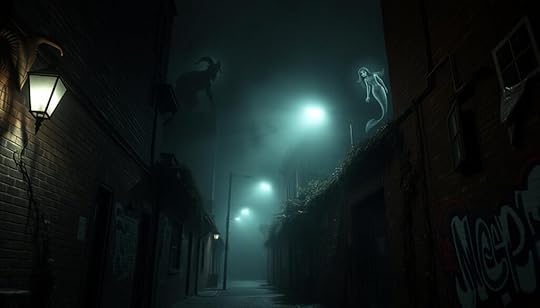
Through storytelling, urban legends continue to evolve, serving as a mirror reflecting societal dynamics and cultural anxieties. The blend of lore and modern myths keeps the fascination alive, reminding us of our ongoing thirst for the mysterious.
Communities of Cryptozoology EnthusiastsThe vibrant communities of cryptozoology enthusiasts play a crucial role in the exploration of mysterious monsters. With an ever-curious mindset, these groups often organize around shared interests, deepening their understanding of cryptids and related discoveries. You may find various organizations, online forums, and social media platforms that serve as hubs for discussion, problem-solving, and information sharing regarding elusive creatures.
Many of these enthusiasts engage in fieldwork and collaborate in research groups, often utilizing advanced technology such as motion-sensitive cameras and night-vision equipment. Though some individuals in these communities lack formal scientific training, their dedication to exploring the unknown remains strong. Such unconventional approaches fuel unique findings and foster a sense of camaraderie among participants.
In addition to the scientific exploration, festivals celebrating renowned cryptids further unite the community. Events such as the Mothman Festival in Point Pleasant, West Virginia, or the Lizard Man festival in Bishopville, South Carolina, draw large crowds. These festivals mix local folklore with broader interests in horror culture and conspiracy theories, creating a culturally rich experience for both locals and visitors. They symbolize the intersection of cryptozoology with tourism, offering small towns an opportunity to breathe life into their economies.
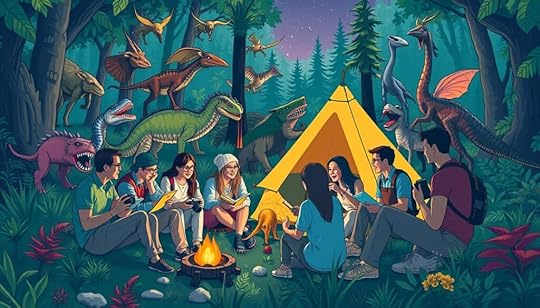
With annual gatherings attracting enthusiasts from all over, the sense of exploration and shared adventure becomes palpable. From tales of sightings to the latest research findings, you’ll find that these communities not only seek evidence but also enjoy the thrill of the hunt. Whether skeptics or believers, the passion surrounding cryptozoology is evident as members unite in their quest for understanding the legends and mysteries that captivate their imaginations.
Explorations and Expeditions: The Quest for the UnknownThe journey of cryptozoologists and enthusiasts on expeditions often embodies a spirit of exploration filled with adventure. These dedicated individuals embark on field research in various mysterious locations, driven by the desire to uncover evidence of elusive beings like Nessie, the Loch Ness Monster, or the famed Bigfoot. Eyewitness accounts gather during these quests serve as invaluable insights, providing a connection between the past and present sightings.
Modern technology plays a crucial role in advancing cryptid hunting efforts. Innovations in sonar technology and GPS tracking enhance the chances of capturing elusive sights. For instance, Operation Deepscan in 1987 utilized sonar from 24 boats, successfully detecting numerous sizable, moving objects in Loch Ness. Despite the findings, conclusive evidence remained elusive, underscoring the challenges faced during such adventures.
Field research processes have evolved, increasingly relying on digital platforms to disseminate information rapidly. In the digital age, the Internet facilitates immediate sharing of encounters and discoveries related to cryptids worldwide. Historical accounts, such as the experiences reported in the 1870s, continually fuel interest and enthusiasm for exploration. The blend of folklore and contemporary investigation keeps the quest alive, inspiring new generations to engage in the thrill of uncovering the unknown.
Consider the following notable aspects of these explorations:
AspectDetailsAdventureEvery expedition offers a chance to discover hidden truths and delve into the unknown.MethodologyField research includes interviewing witnesses, analyzing historical records, and employing advanced technology.Eyewitness AccountsWitness testimonies are critical in piecing together the narrative surrounding cryptids.Modern ToolsTechnology such as drones and underwater cameras revolutionize the way expeditions are conducted.ChallengesDetractors and hoaxes can complicate the validation of findings and diminish credibility.
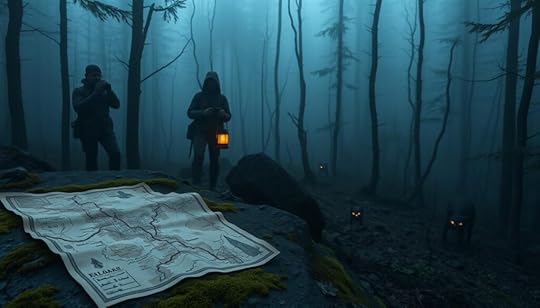
As you consider the ongoing thrill of exploration and adventure, you may find yourself drawn to the rich stories and modern methodologies employed by those dedicated to cryptid hunting. The possibility of encountering the unknown makes every expedition a fascinating journey into the depths of mystery.
Debunking Misidentifications and HoaxesUnderstanding the world of mysterious monsters requires a critical approach to the claims surrounding them. Misidentifications frequently plague investigations into these phenomena. The infamous “surgeon’s photograph” of the Loch Ness Monster, taken in 1934, serves as a prime example. Initially believed authentic, it was ultimately revealed as a hoax involving a toy submarine. This illustrates the necessity of skepticism in the face of sensational claims, as many purported sightings can often be traced back to ordinary objects.
The legend of the Loch Ness Monster, affectionately called “Nessie,” stretches back 1,500 years, with more modern sightings initiated in the 1930s. Notably, the first major interest in the creature emerged from a sighting in 1933. Soon after, reports surged as investigations intensified. Yet, scientific analyses largely attribute these sightings to common objects, like swimming elephants from circuses or fallen tree branches, rather than any mysterious creature lurking beneath the waves.
Noteworthy historical accounts, such as Alexander Macdonald’s description in 1888 of a salamander-like creature, provoke curiosity, but they often falter when subjected to rigorous investigations. In light of this, it is essential to recognize the role of skepticism. This allows for rational explanations to emerge regarding supposed monsters. The scientific community has ruled out large creatures such as plesiosaurs, using DNA analysis of Loch Ness water samples that indicated eel DNA presence along with remnants of other species like sheep, deer, and birds.

The discourses surrounding these mysteries underline a broader trend: when investigated thoroughly, many claims dissolve under scrutiny. Even false accounts, like George Spicer’s description of a plesiosaur-like dinosaur in 1933 that appears to be sensationalized, reveal how myths can capture the public’s imagination yet lack scientific backing. In the face of astonishing claims, the importance of rational explanations and methodical investigations can guide enthusiasts and researchers alike in differentiating reality from illusion.
AspectDescriptionHoax Examples“Surgeon’s Photograph” (1934) – Toy submarineHistorical SightingsEarliest sighting (565) – Alexander Macdonald (1888)Scientific InvestigationsDNA analysis rules out plesiosaurs, identifies eels, sheep, deer, and othersTourism ImpactGlobal allure of the Loch Ness Monster continues to attract visitorsAnnual ReportsGary Campbell’s 10 unexplained sightings reported yearlyThe Enduring Power of Myths and LegendsThe world of mysterious monsters is rich with myths and legends that have lustrously woven through each culture. These cultural stories serve as reflections of human fears, aspirations, and the profound nature of our relationships with the world. Every tale of a monstrous creature or a heroic figure captures the essence of the human experience, showcasing experiences that resonate across generations.
Consider the narrative structure of the hero’s journey, as popularized by Joseph Campbell. Myths like those surrounding King Arthur or Odysseus demonstrate universal themes of bravery, transformation, and the eternal struggle between good and evil. These stories mirror society’s values and reflect the intricacies of personal growth through trials.
Key Elements of MythsCall to adventureEncounters with challengesMentorship and guidanceUltimate triumph or transformationFrom Norse mythology, where gods sacrifice for wisdom, to Iroquois creation myths involving brave animals as cultural heroes, these narratives emphasize the interconnectedness of all beings. They promote stewardship of nature, urging respect for every living creature. In this way, the resilience of stories lies not only in their ability to entertain but also in their deep-seated lessons that guide behavior and inspire reflection.
Modern narratives, such as Star Wars, continue to draw from these ancient themes, illustrating how myths adapt to contemporary culture while remaining vital. Each story serves not just as entertainment, but as a means for cultural heritage to thrive and evolve, resonating within the collective consciousness and shaping our views of the world.
ConclusionAs we sink our teeth into the fascinating realm of mysterious monsters, it’s clear that these mythical beings hold a substantial cultural significance across various societies. From the iconic Sasquatch, first popularized in the documentary “Mysterious Monsters,” to the aquatic allure of the Loch Ness Monster, these creatures inspire endless curiosity and debate. Even though many sightings have yet to find definitive proof, they spark ideas that blend folklore with the exploration of the unknown.
Looking toward the future of cryptids, the intersection of media, science, and human experience continues to shape our perspective on these enigmatic entities. Public interest has surged, thanks in part to nostalgic films and documentaries that bring these stories to life and generate discussions that echo throughout communities. Though some recent audiences may express skepticism, the allure remains, inviting you and others to ponder possibilities.
In conclusion, the journey through these legends highlights how the quest for understanding the unknown intertwines with our cultural narratives. It beckons you to embrace both skepticism and wonder as you delve deeper into the stories of mysterious monsters, fostering an enduring spirit of adventure that unearths the hidden mysteries of our world.
FAQWhat are mysterious monsters?Mysterious monsters refer to legendary creatures, cryptids, and supernatural beings found in folklore tales and myths across various cultures. They often represent unexplained phenomena, stirring curiosity and wonder.
Why do we find myths and legendary creatures fascinating?Myths and legendary creatures resonate deeply within us as they embody our collective fears, curiosities, and the desire for adventure. They reflect societal values and serve as a mirror to human experience, captivating our imaginations through generations.
What is the historical significance of mythical beasts?Mythical beasts have historical significance as they reveal the values, fears, and beliefs of ancient civilizations. From dragons in European lore to legendary beings in Greek mythology, these creatures showcase humanity’s attempts to explain and understand their world.
What are some well-known cryptids in American folklore?Notable cryptids include the Chupacabra, infamous for livestock attacks, and Bigfoot, an elusive giant. Their stories have become integral parts of American folklore, symbolizing our quest to understand the unknown.
What is the legend of the Loch Ness Monster?The Loch Ness Monster, affectionately known as Nessie, is a legendary aquatic creature said to inhabit Scotland’s Loch Ness. Its lore includes historical sightings and cultural significance, representing humanity’s fascination with the mysteries of the deep.
What does the Thunderbird symbolize in Native American culture?The Thunderbird is a powerful figure in Native American mythology, believed to control weather and symbolize strength. Its stories emphasize the cultural significance of winged creatures as harbingers of messages and guardians of the natural world.
How is the Yeti portrayed in Himalayan folklore?The Yeti, or Abominable Snowman, is often depicted as a mysterious being residing in the Himalayan mountains. Eyewitness accounts and its elusive nature connect the Yeti to humanity’s quest for exploration and understanding of remote areas.
What is the Mokele-Mbembe?The Mokele-Mbembe is a cryptid similar to a dinosaur, said to inhabit the Congo Basin. It embodies folklore and local legends, reflecting the diversity of creatures and myths in African culture.
How do werewolf and vampire legends reflect our fears?Werewolf legends often delve into themes of transformation and primal fears, while vampire lore explores mortality and seduction. Both encapsulate deeper human anxieties, revealing cultural responses to existential themes through storytelling.
Why are dragons significant across cultures?Dragons symbolize various meanings in cultures worldwide, from benevolent protectors to fearsome creatures. They embody the raw power of nature and serve as important lessons in morality and societal values through mythological narratives.
What psychological factors contribute to belief in mysterious monsters?Cognitive biases, a desire for explanation, and the allure of patterns drive belief in mysterious monsters. These myths can provide comfort in chaotic times and play crucial roles in cultural identity and societal beliefs.
How does science interact with cryptid folklore?Science engages with cryptid folklore through cryptozoology, examining evidence and claims related to mysterious monsters. This includes analyzing eyewitness reports and exploring rational explanations, balancing belief and skepticism in pursuit of truth.
What role do urban legends play in modern culture?Urban legends reflect contemporary societal fears and anxieties. They often incorporate elements of mysterious monsters, evolving with cultural shifts and the rise of technology, revealing our continuous fascination with the unknown.
How can I connect with others interested in cryptids?There are vibrant communities dedicated to cryptozoology. Online forums, conventions, and research groups unite enthusiasts and researchers, fostering collaboration and shared passion for exploring the mysteries of legendary creatures.
What methods are used in expeditions to search for cryptids?Expeditions often employ field research methodologies, gathering eyewitness accounts and utilizing modern technology to capture potential sightings. The thrill of the unknown drives innovation in the quest for evidence surrounding mysterious monsters.
How can we differentiate between genuine sightings and hoaxes?It’s crucial to verify sightings critically by investigating and considering possible misidentifications of known species or hoaxes. A rigorous approach enhances our understanding of cryptozoology and clarifies the landscape of mysterious monster reports.
What is the legacy of myths and legends today?Myths and legends remain relevant, mirroring contemporary values and fears. They offer insights into the human experience, connecting generations and reinforcing cultural identities, showcasing the resilience of storytelling through time.



